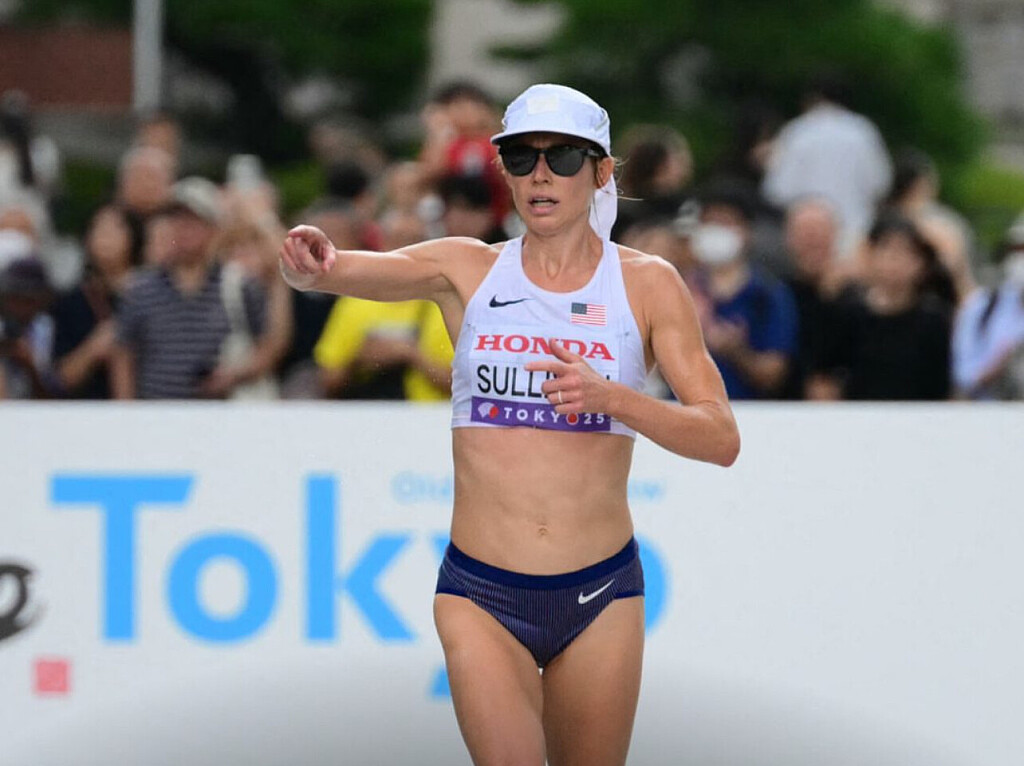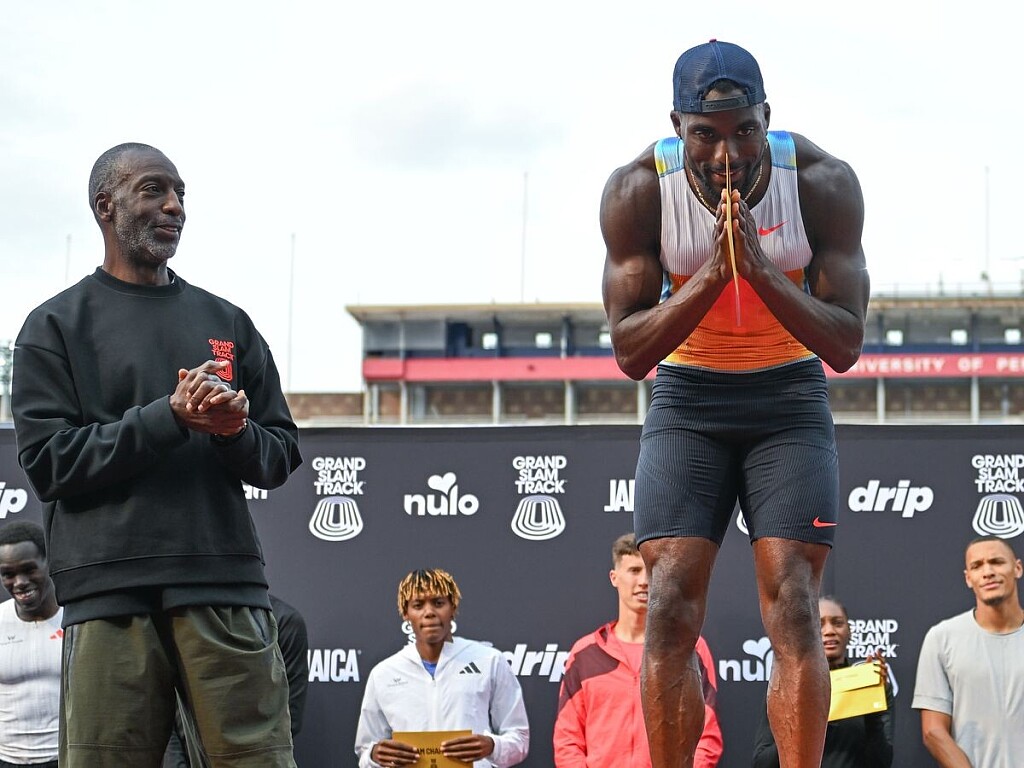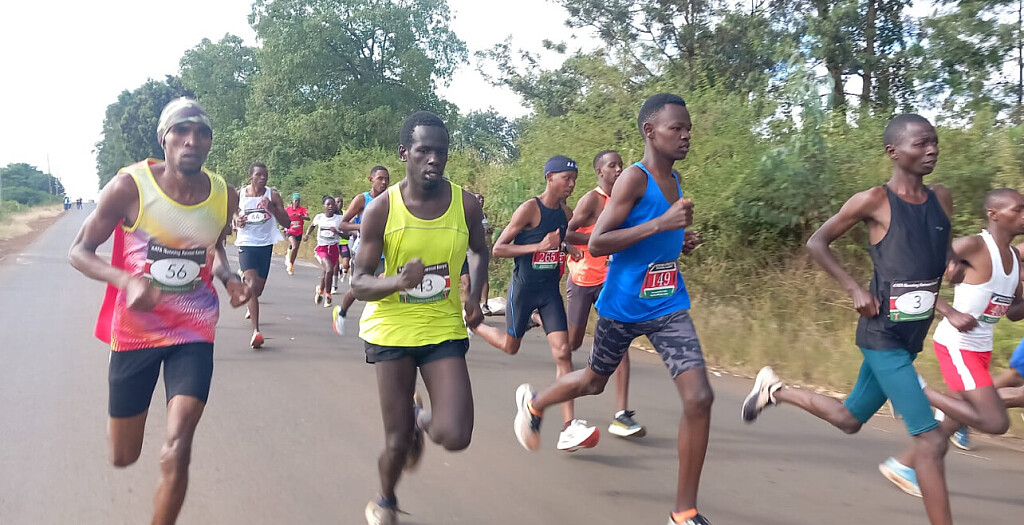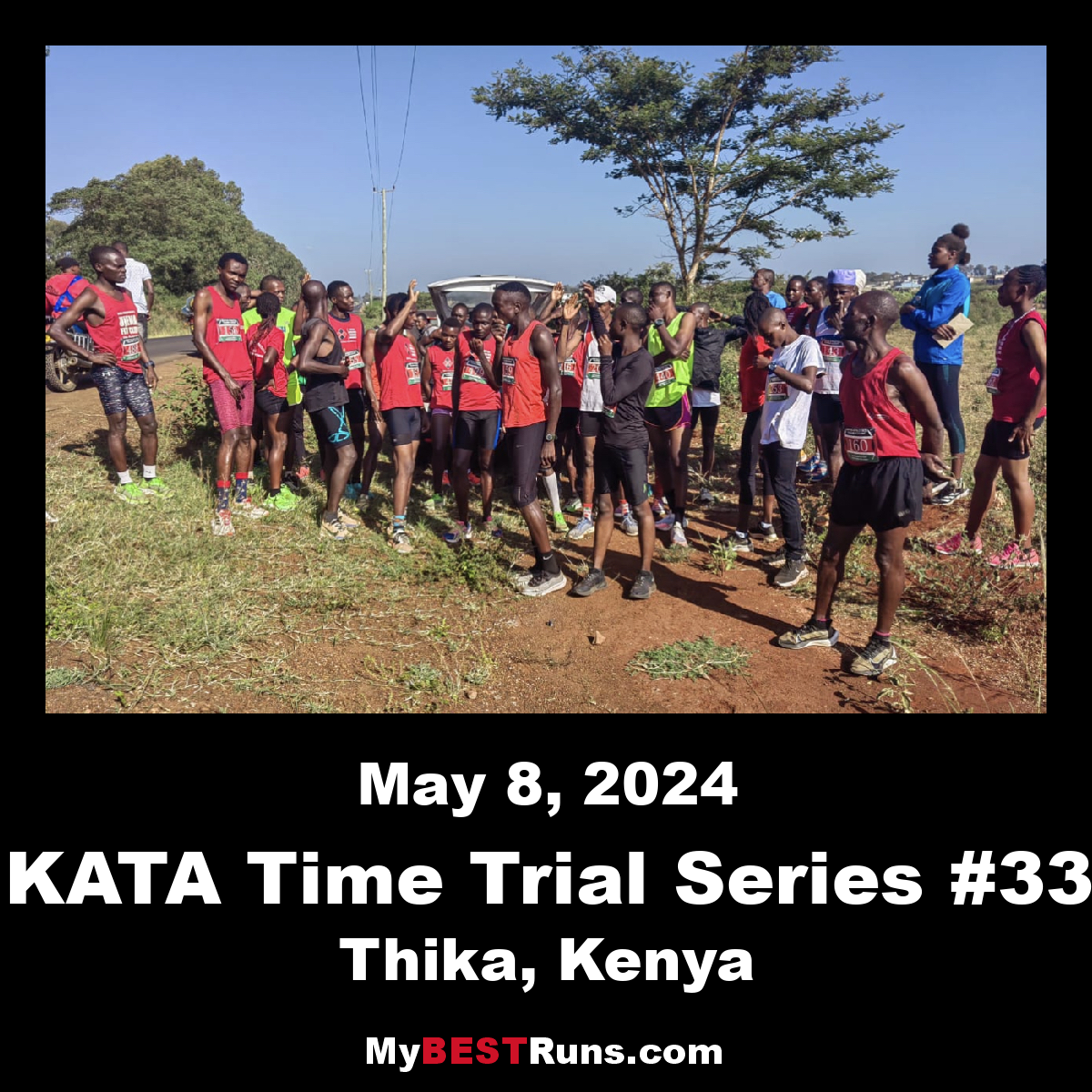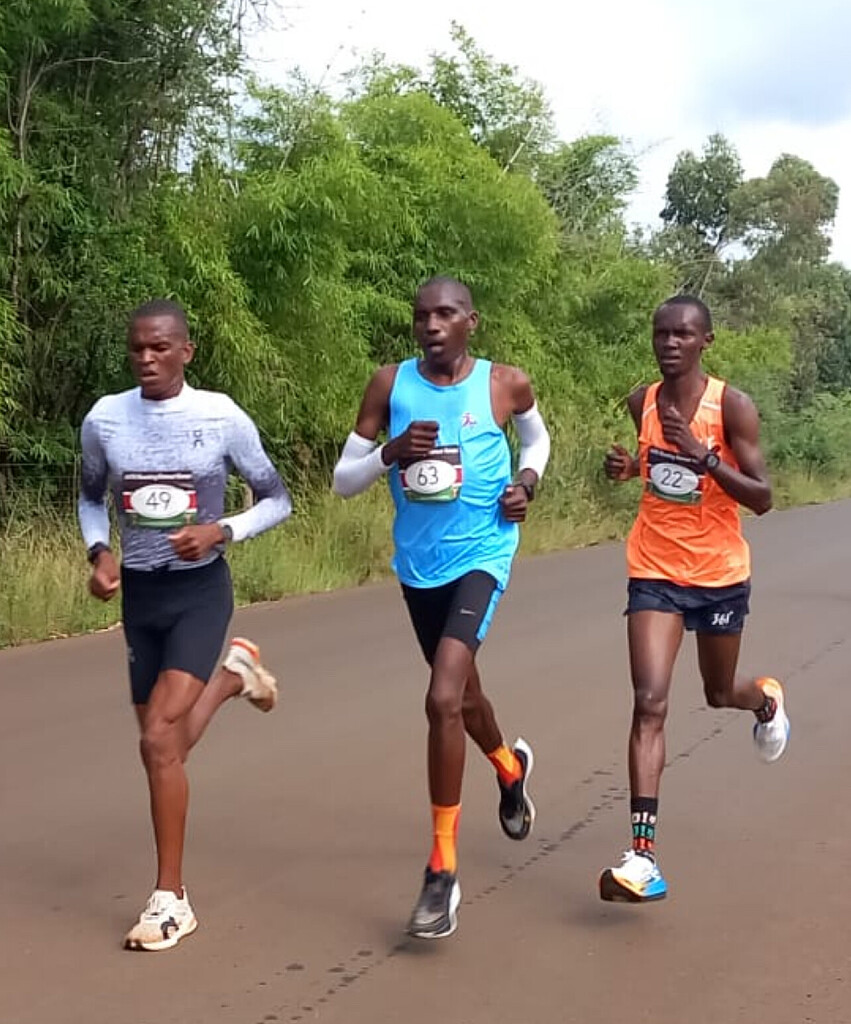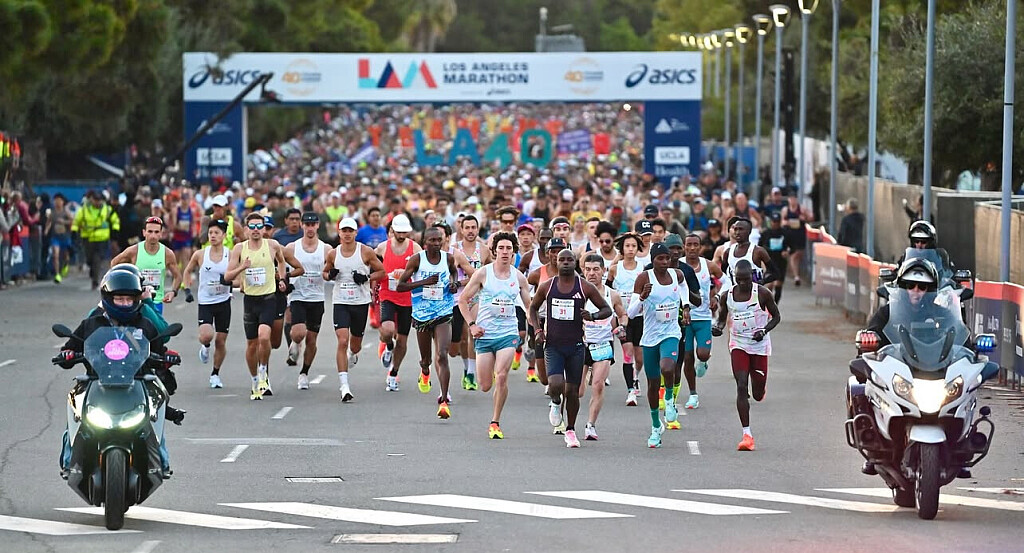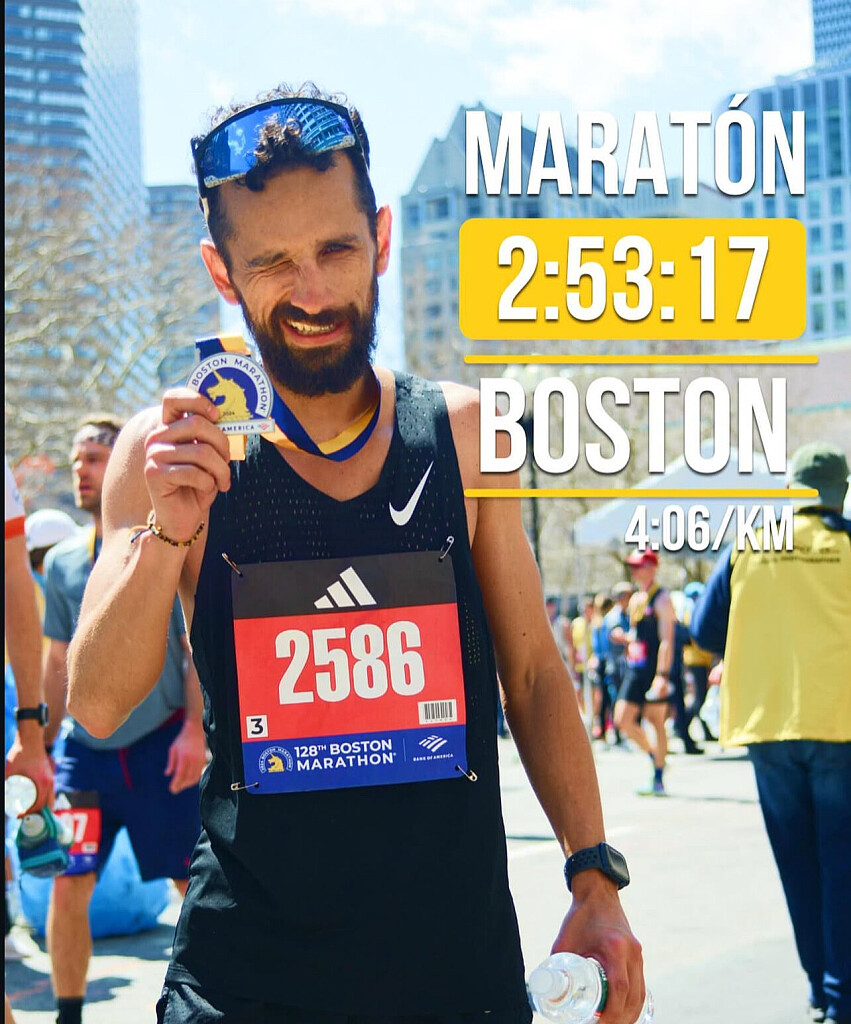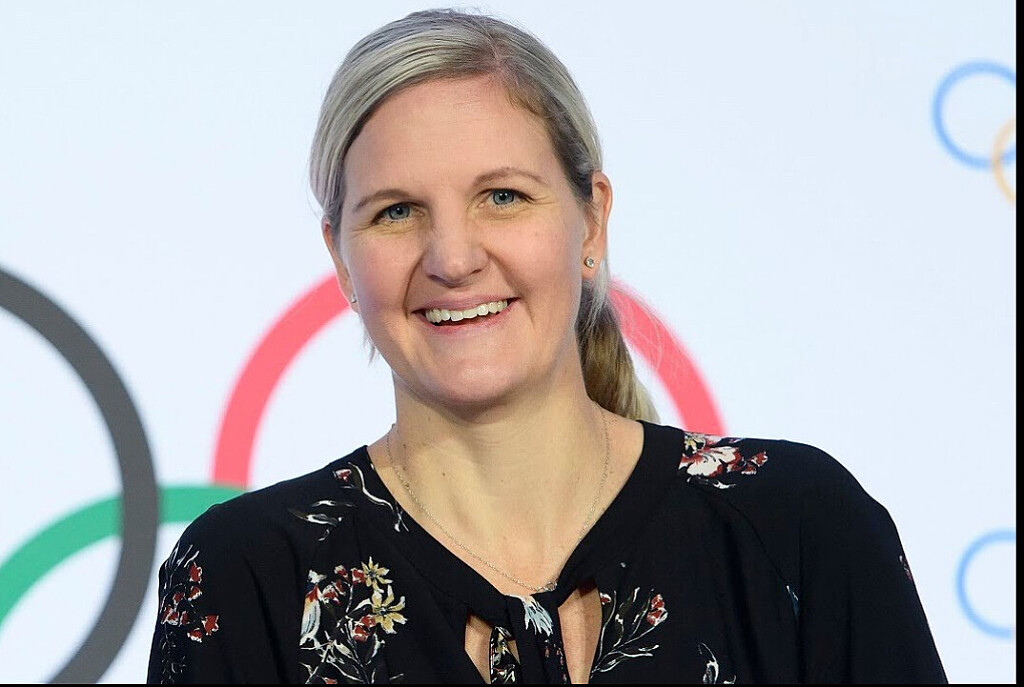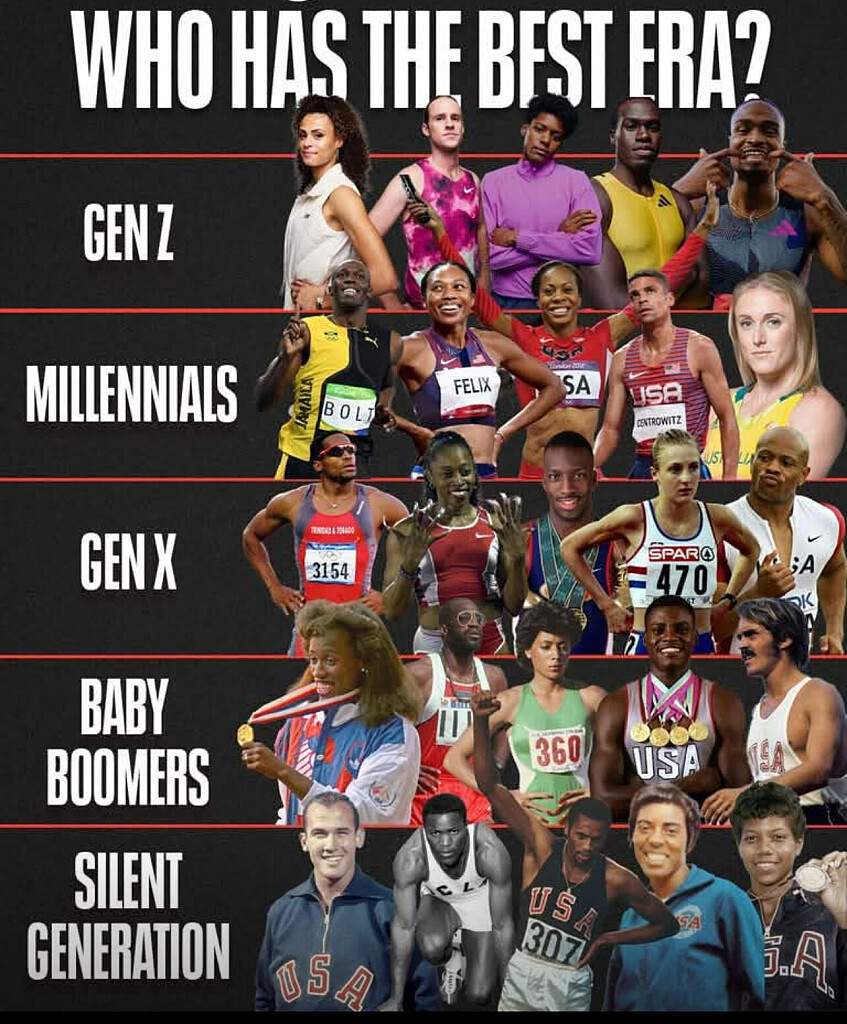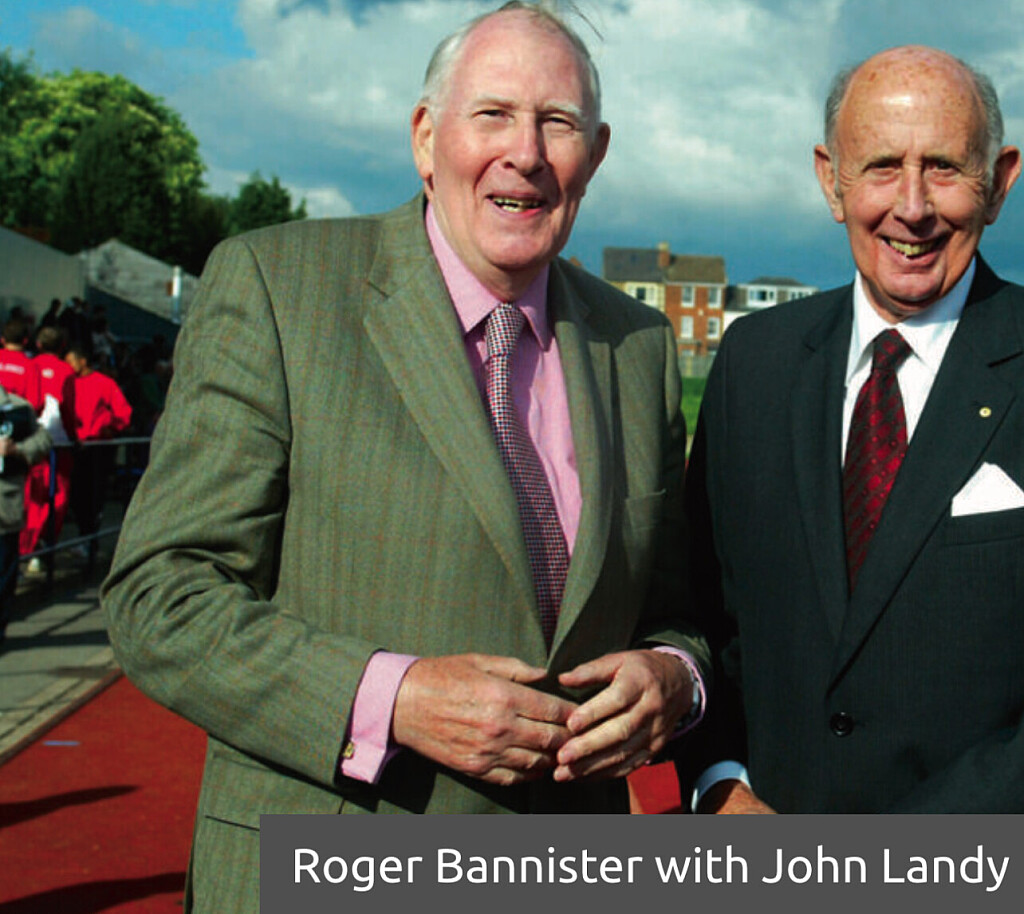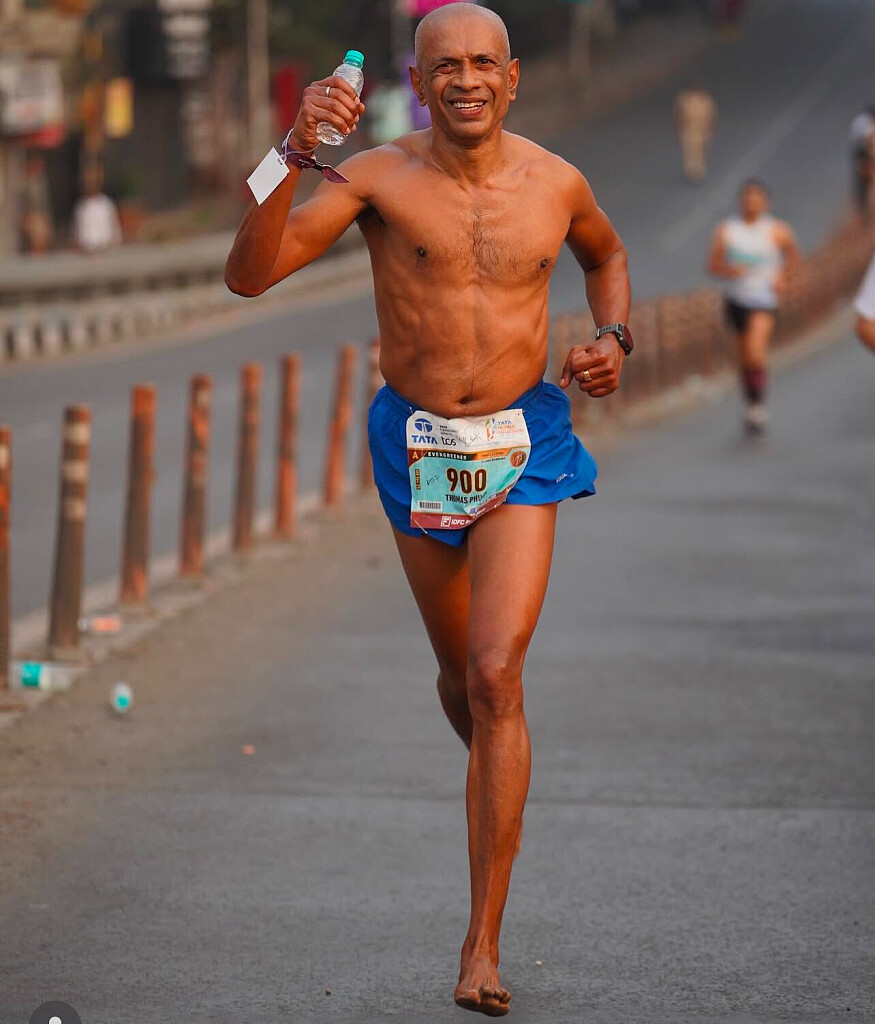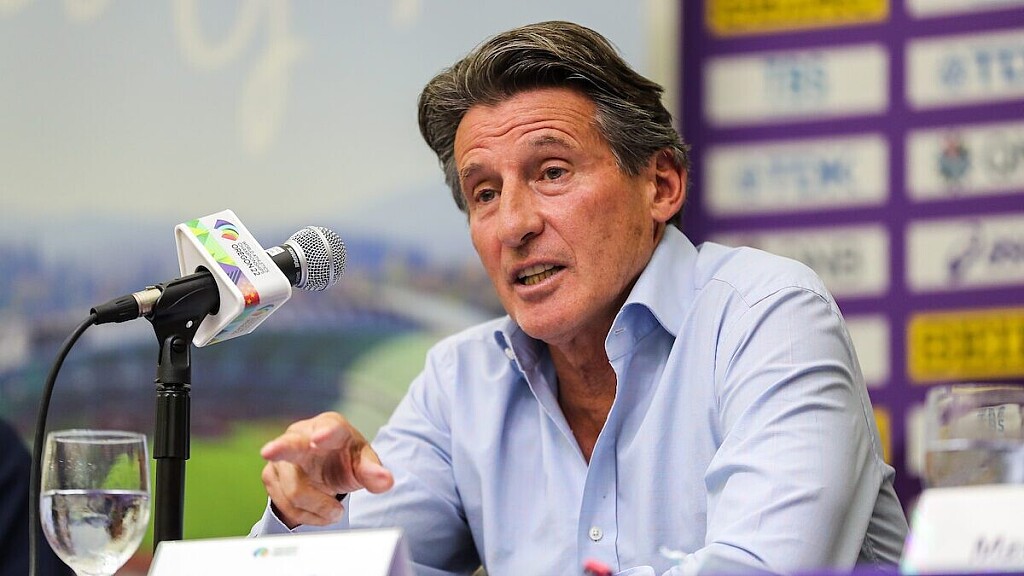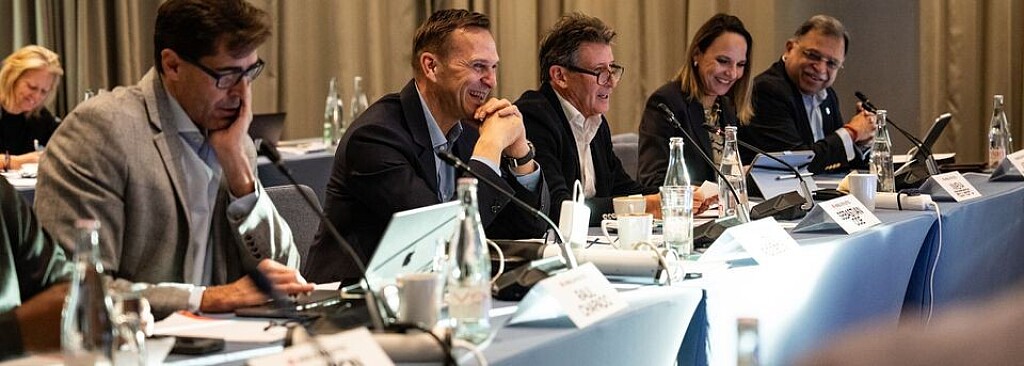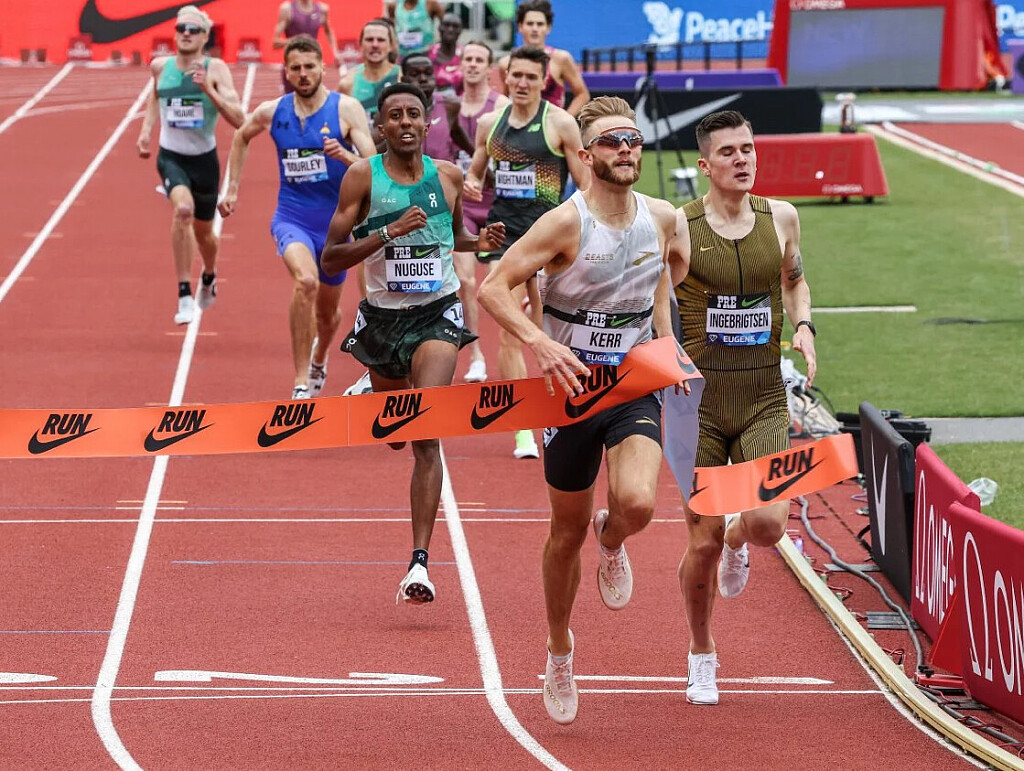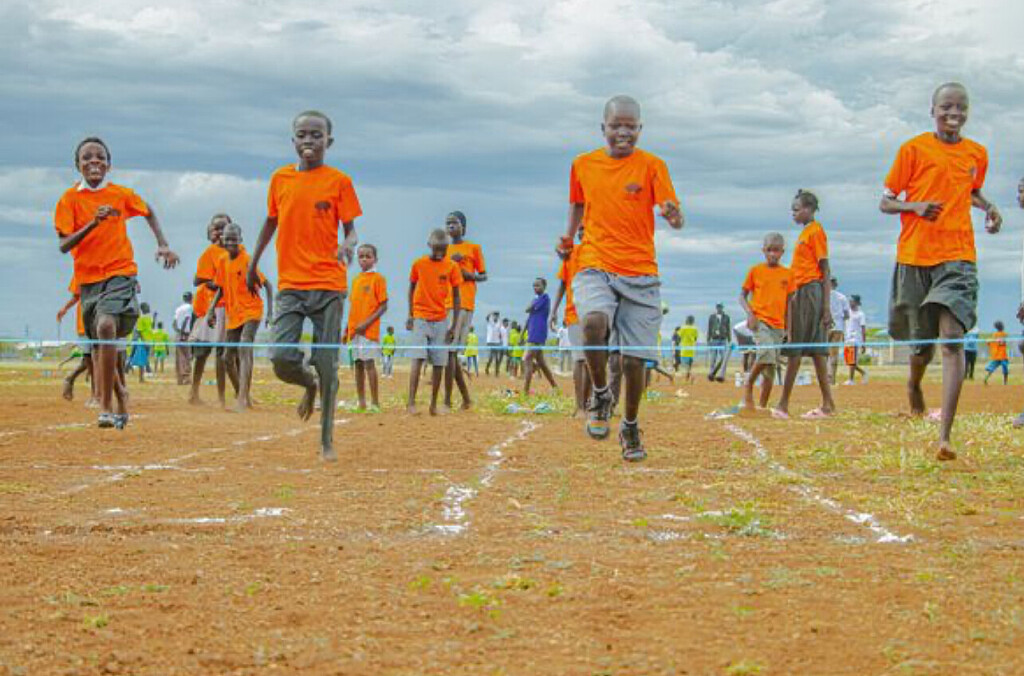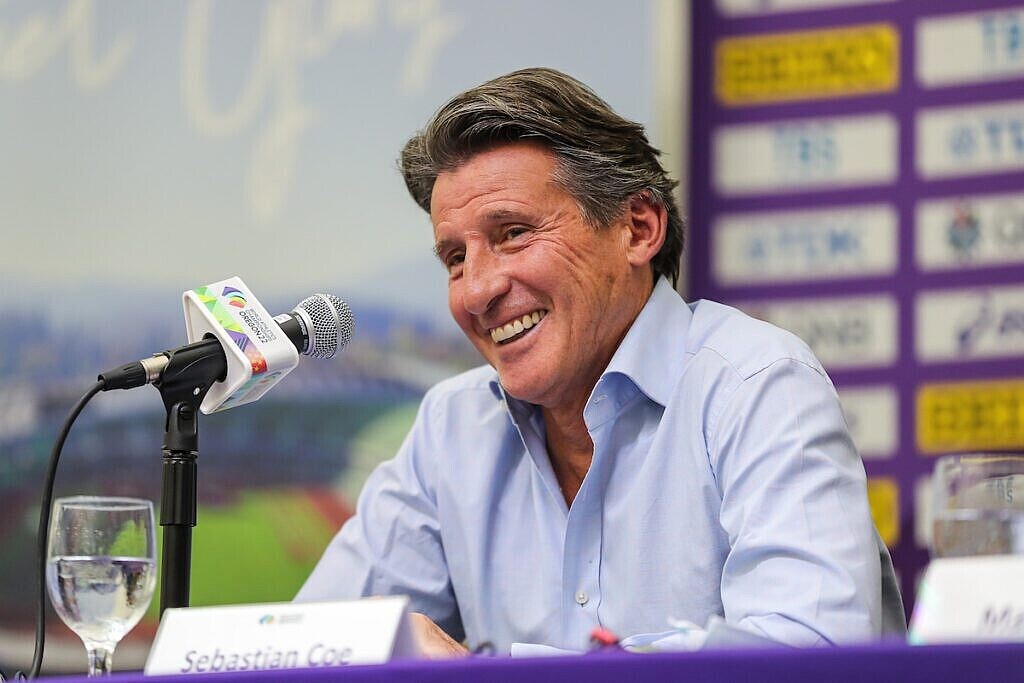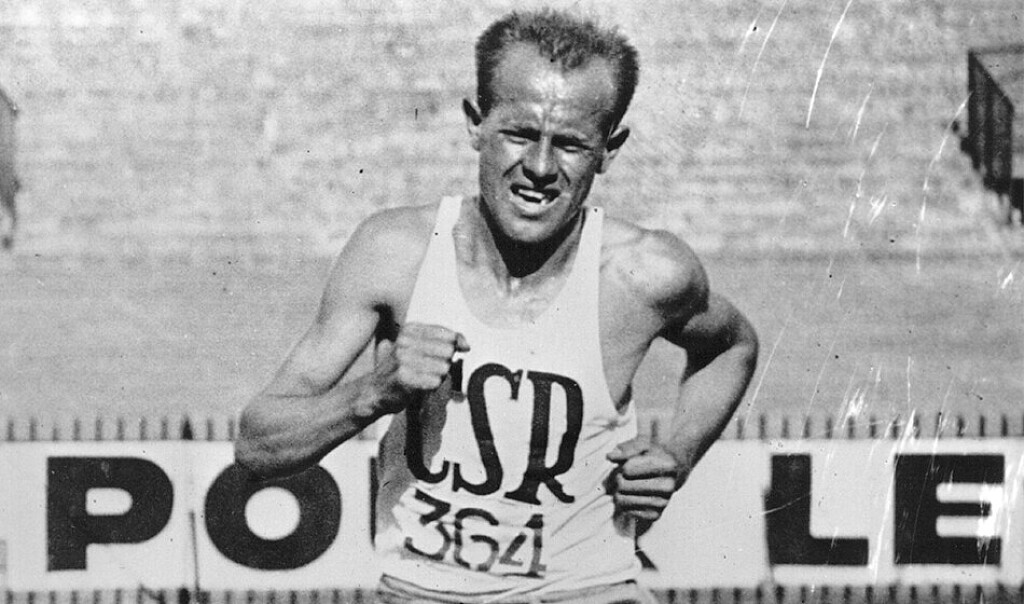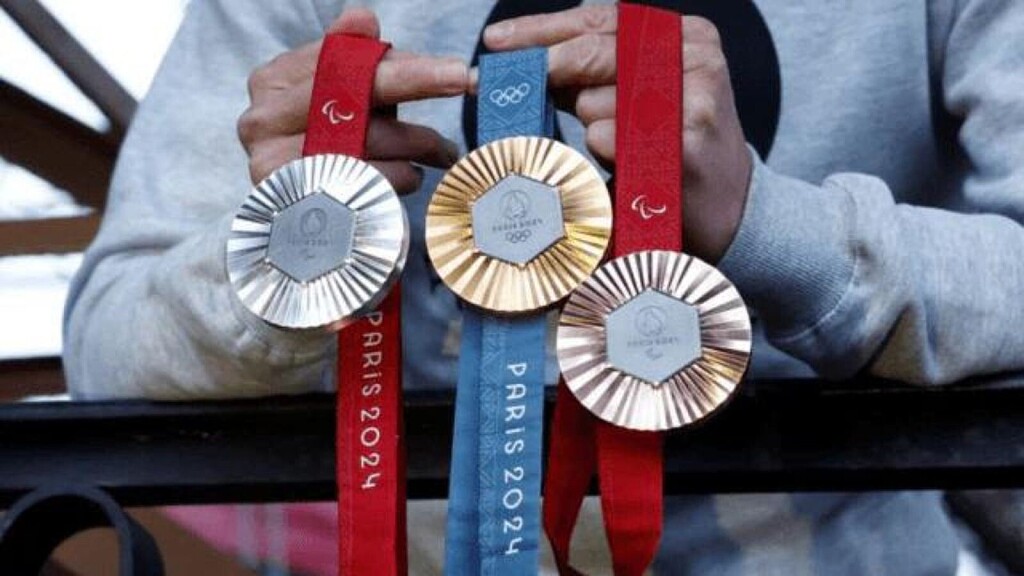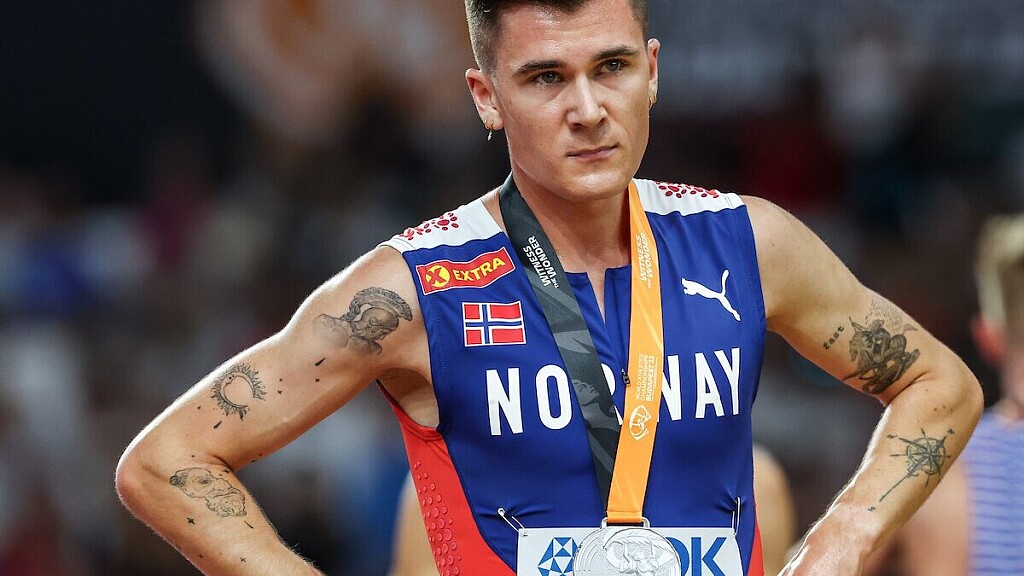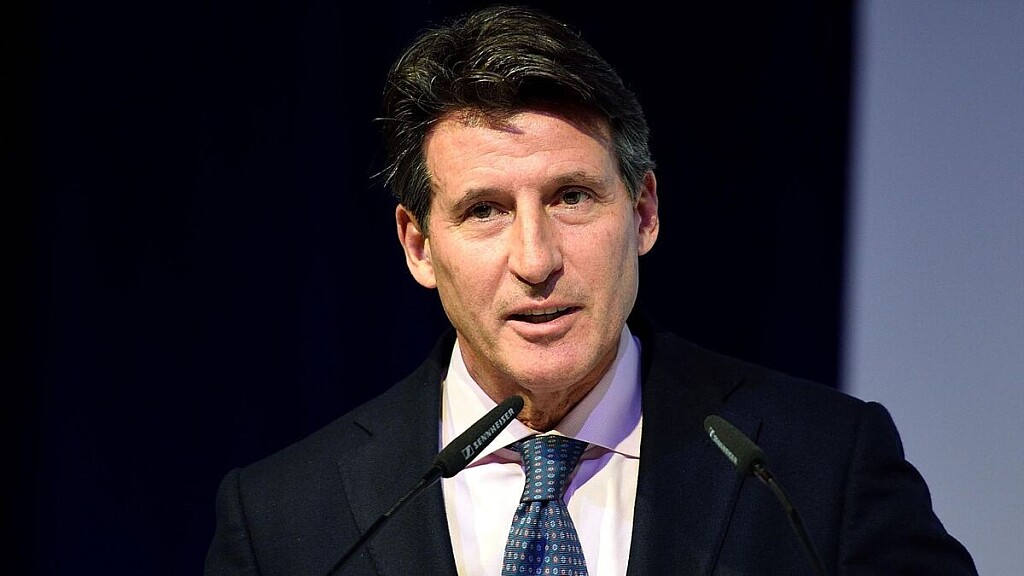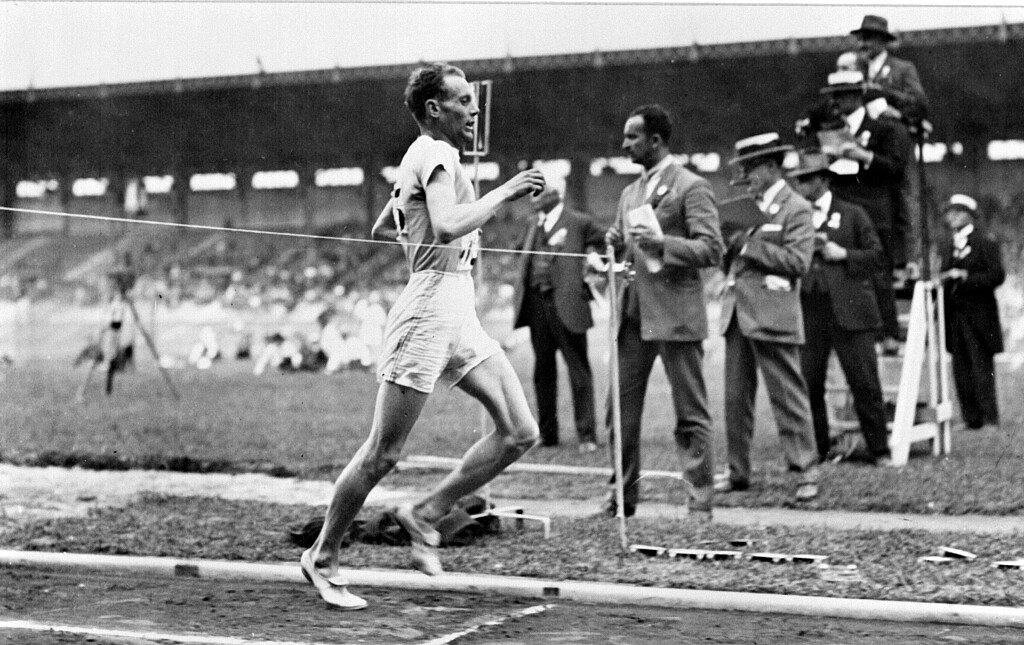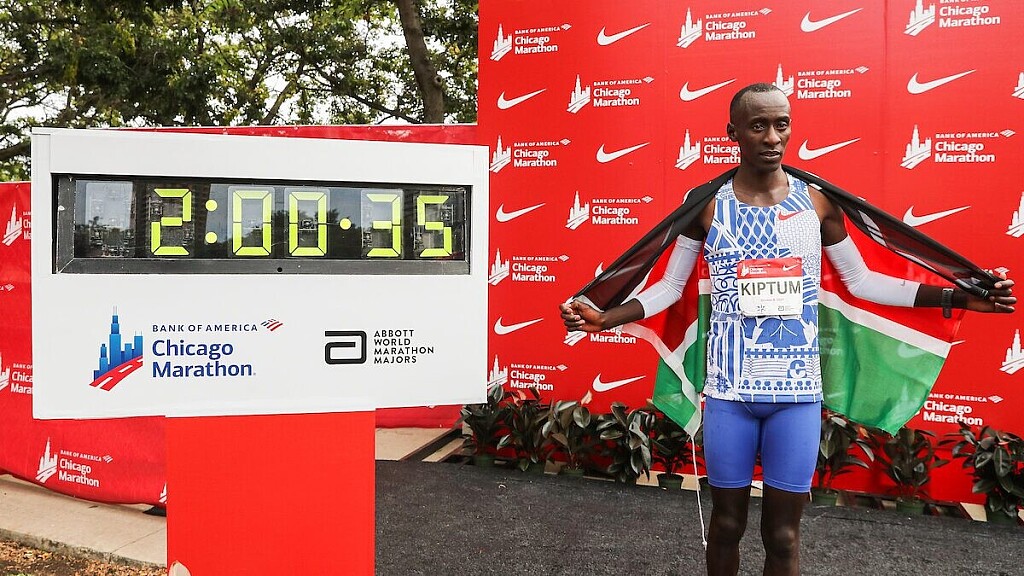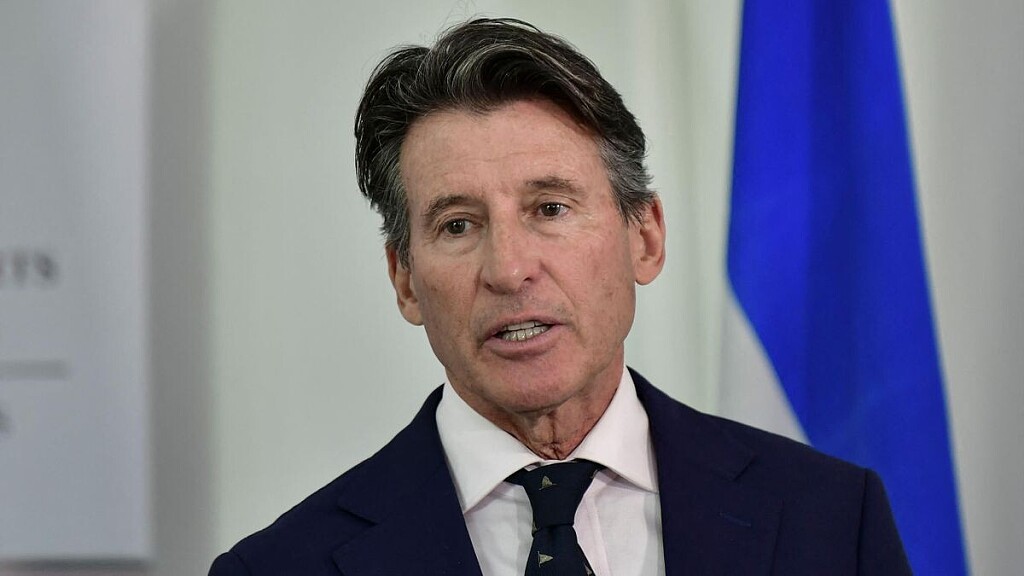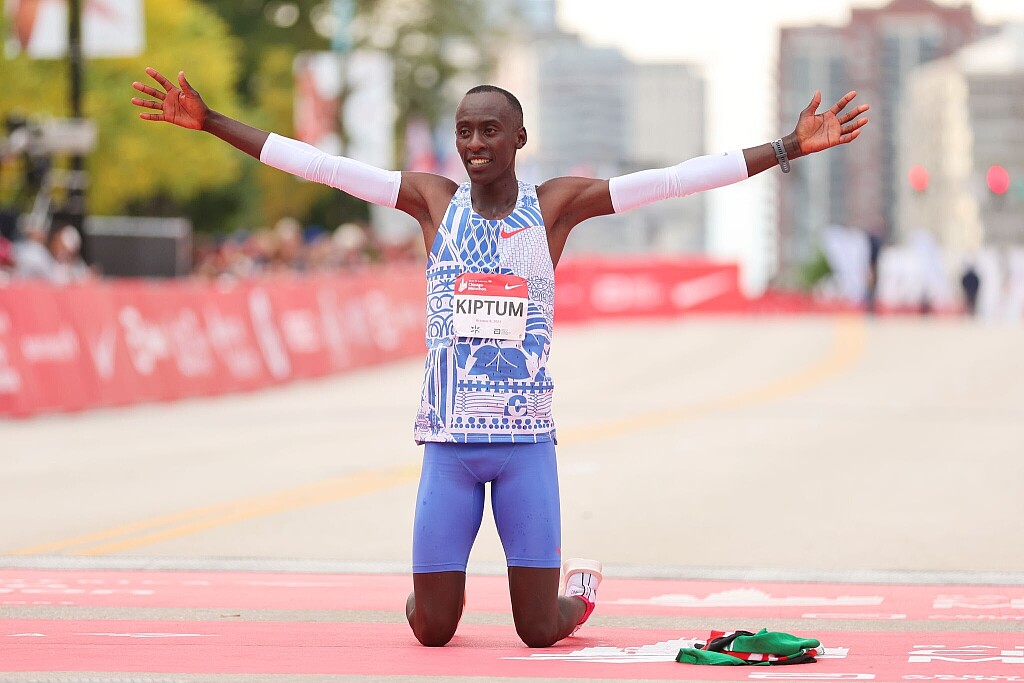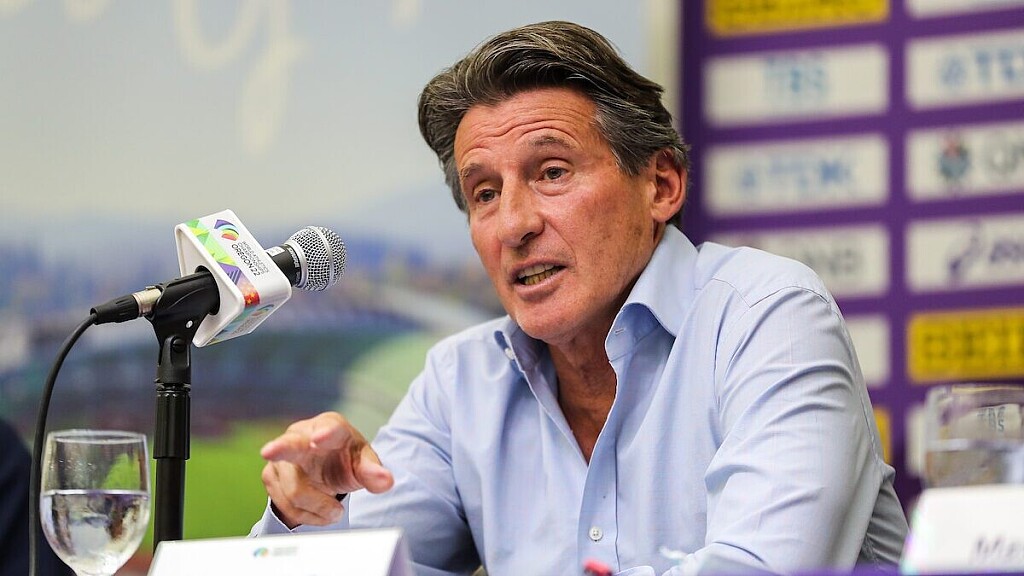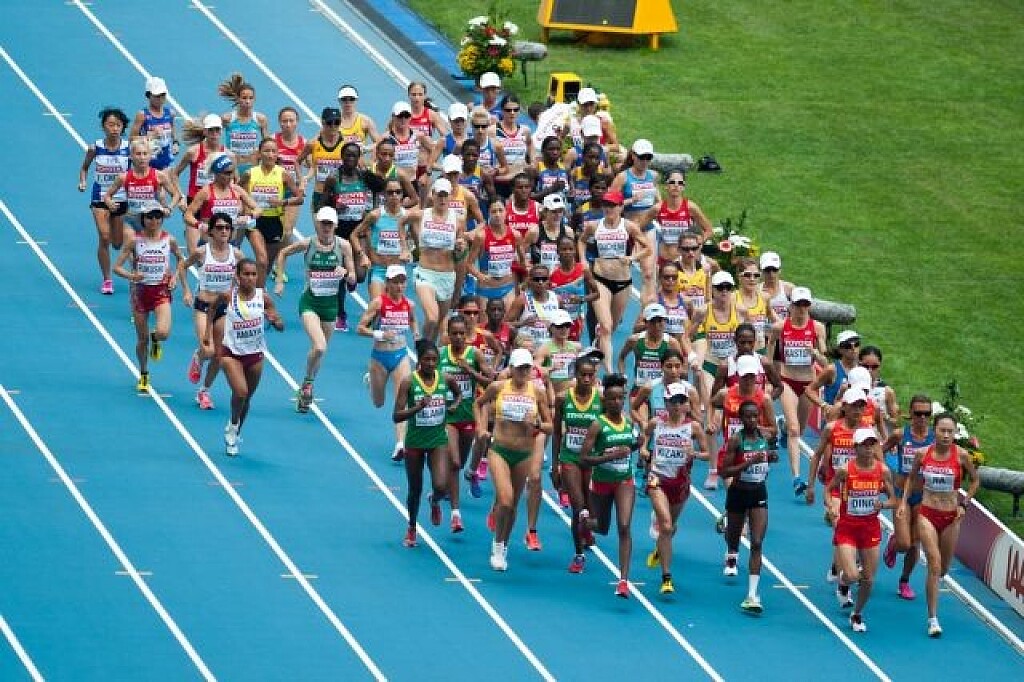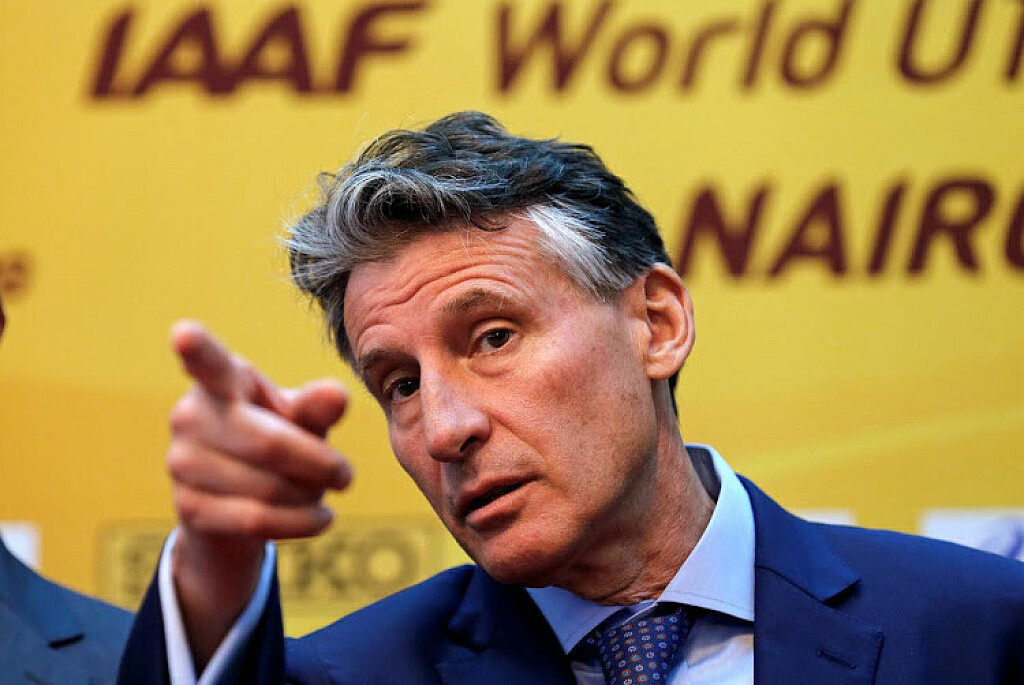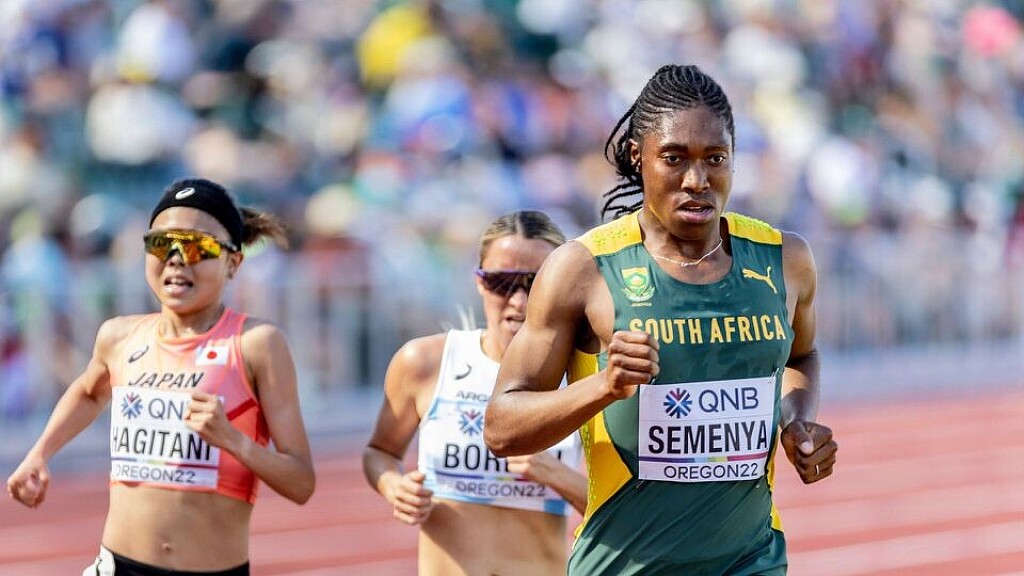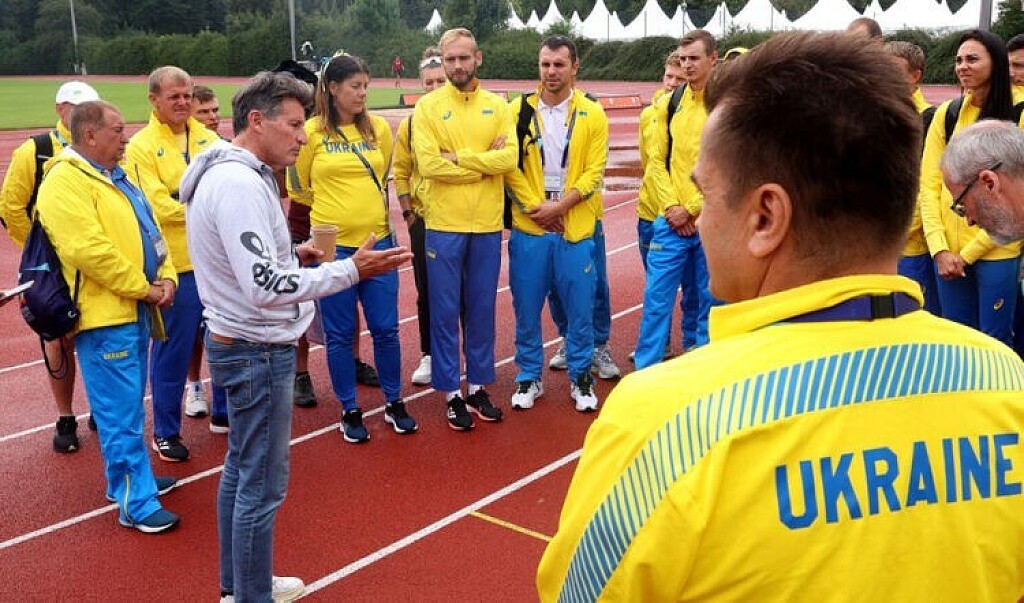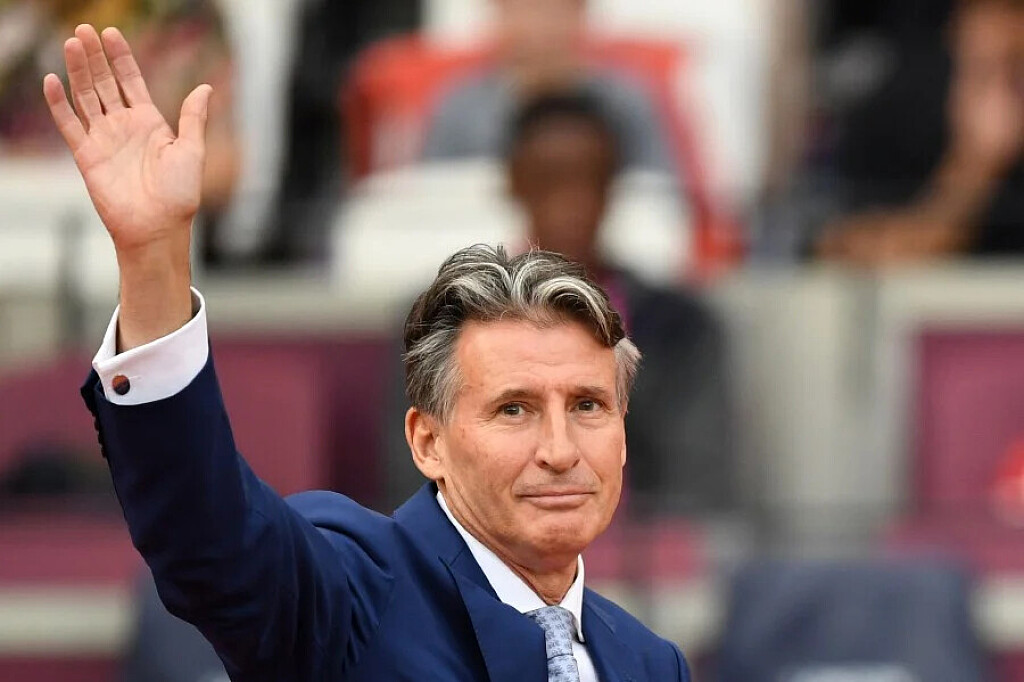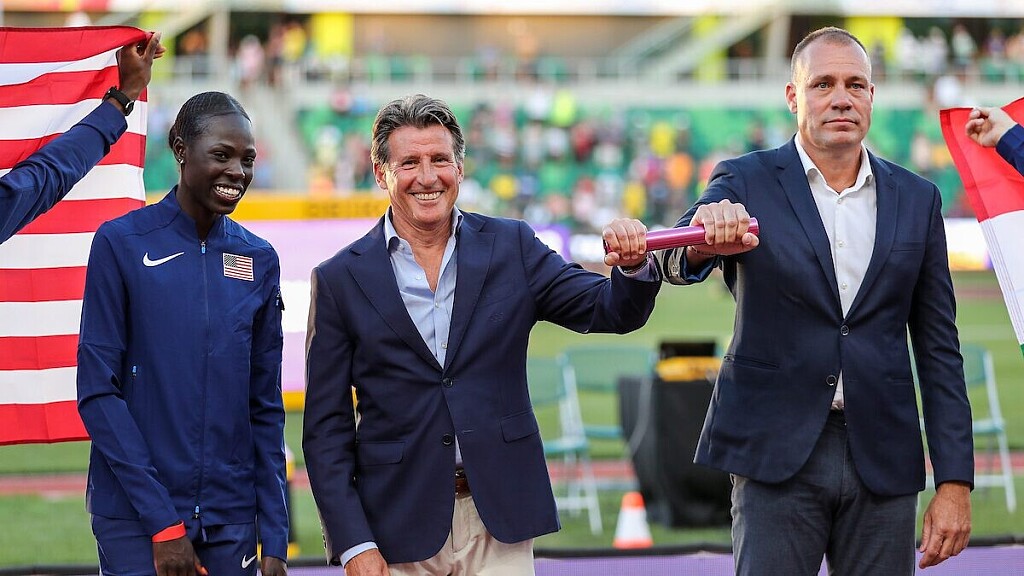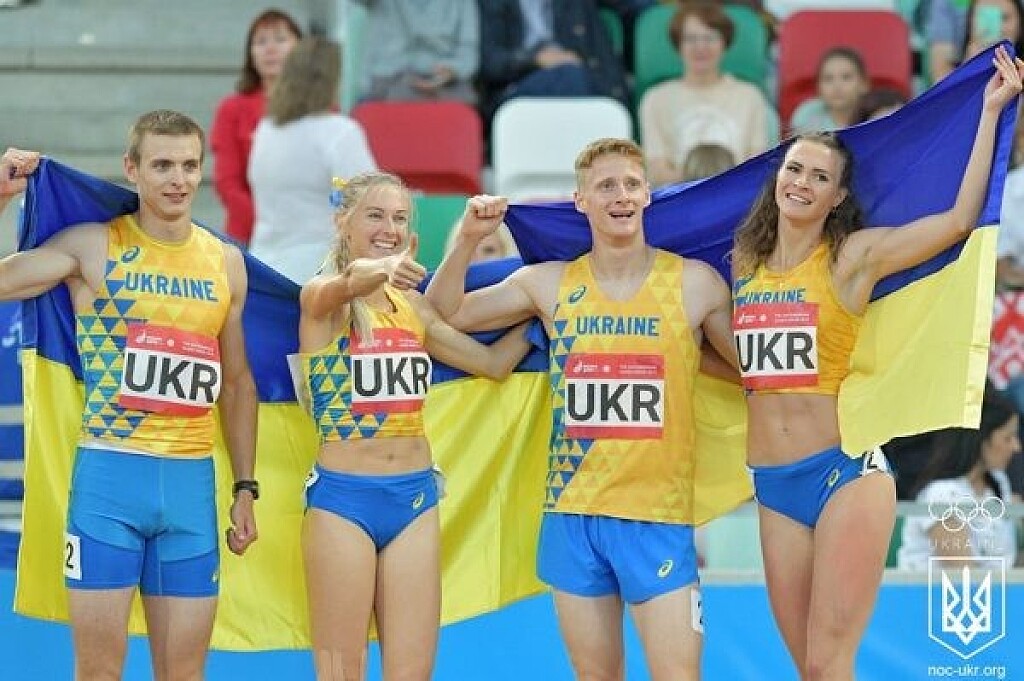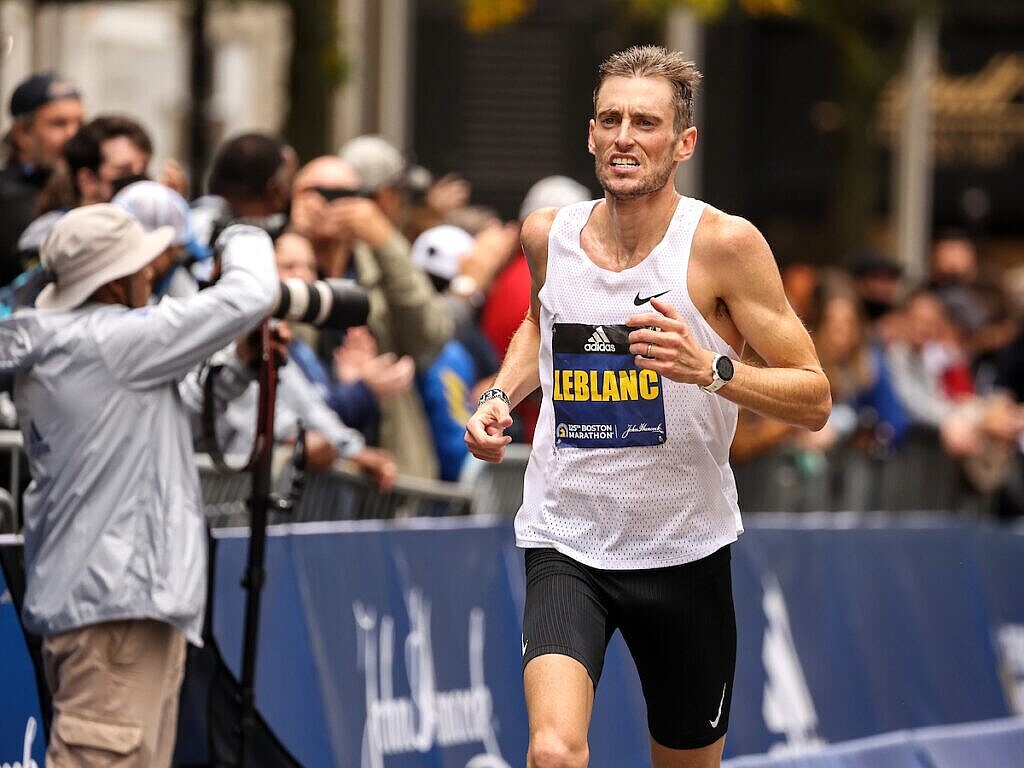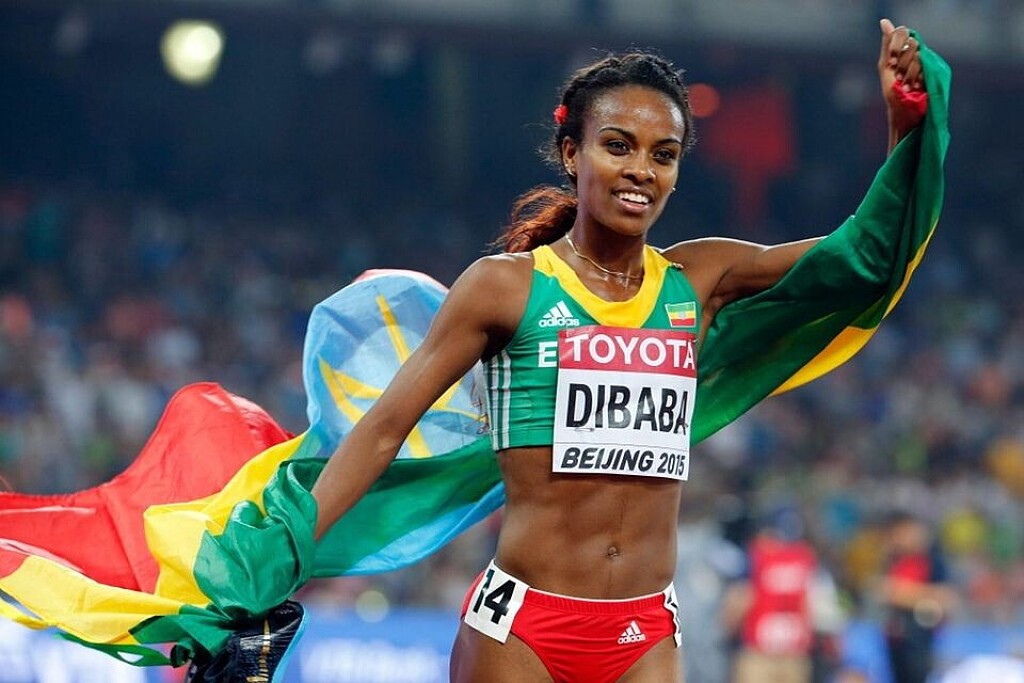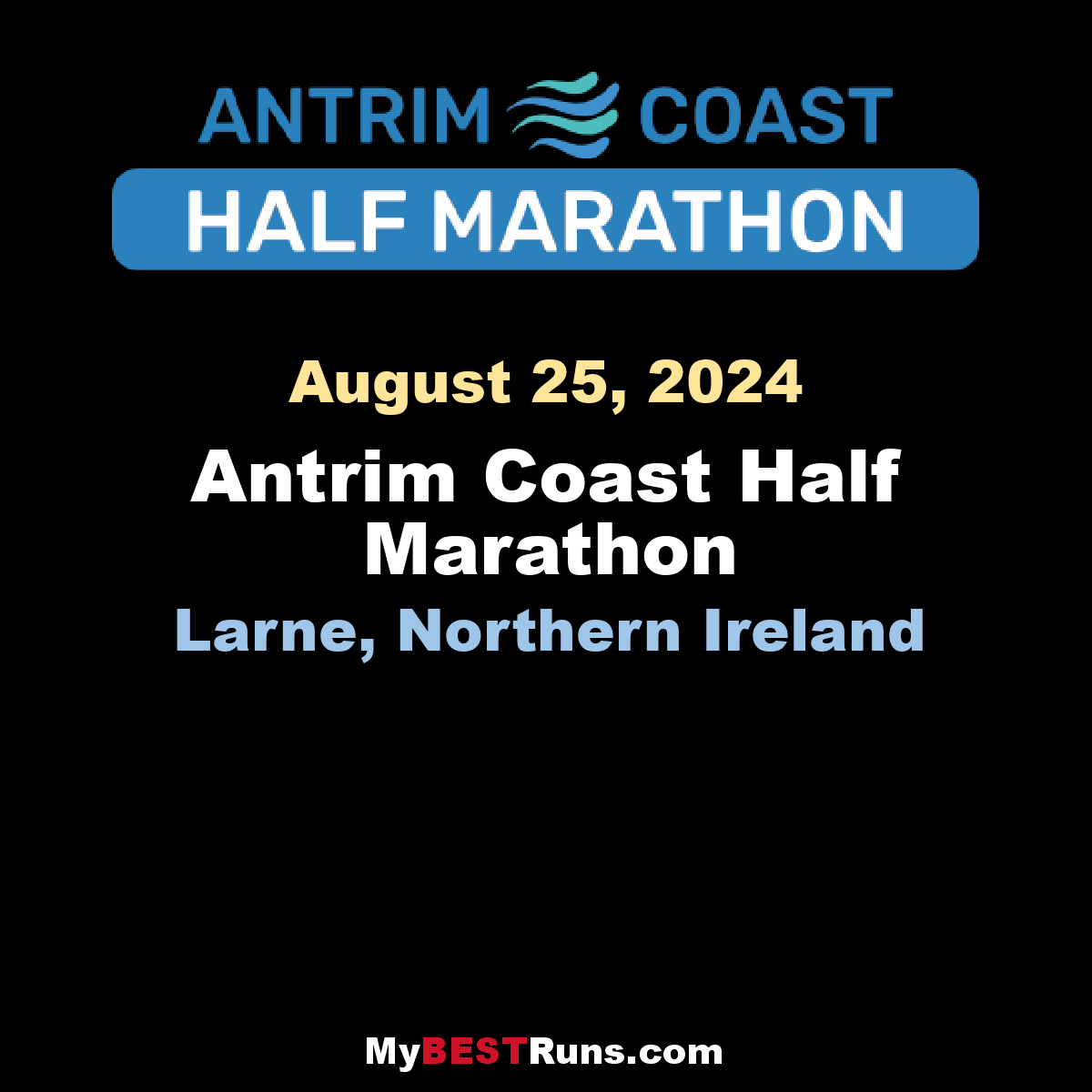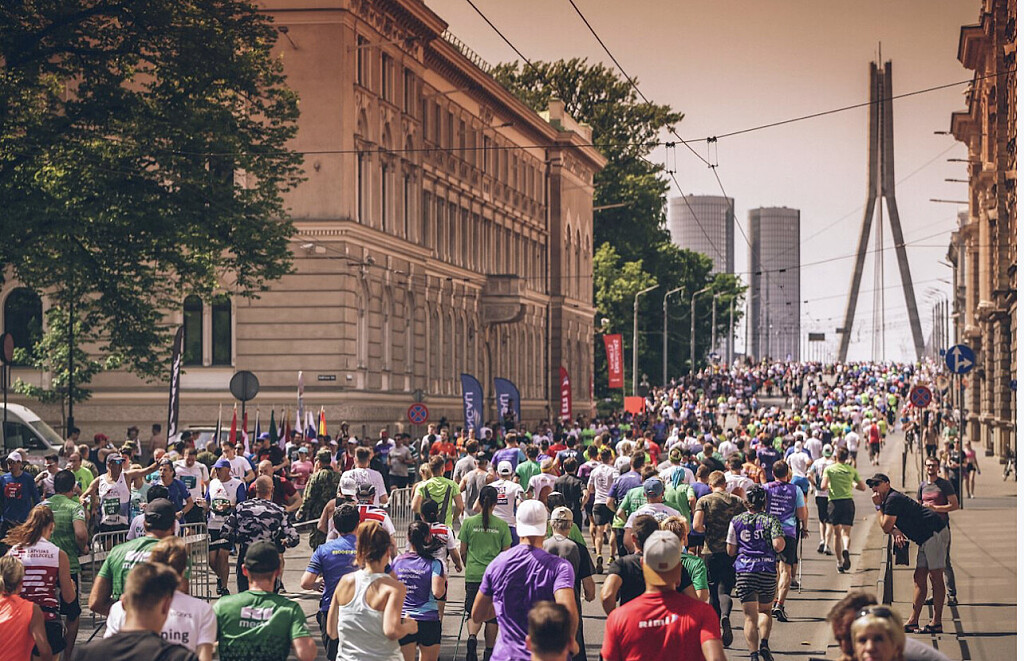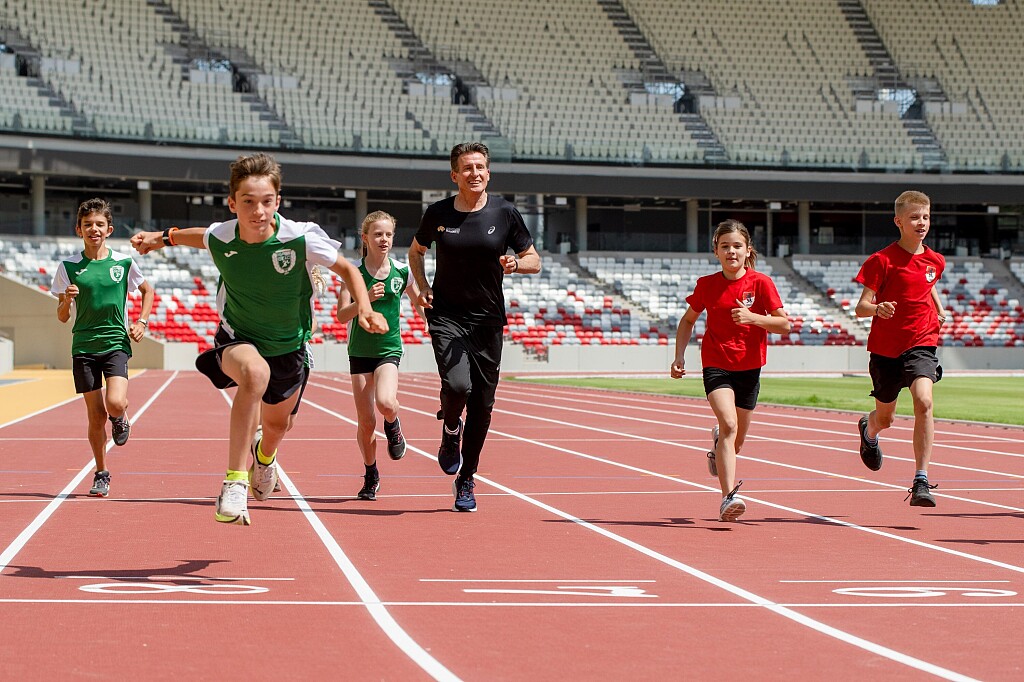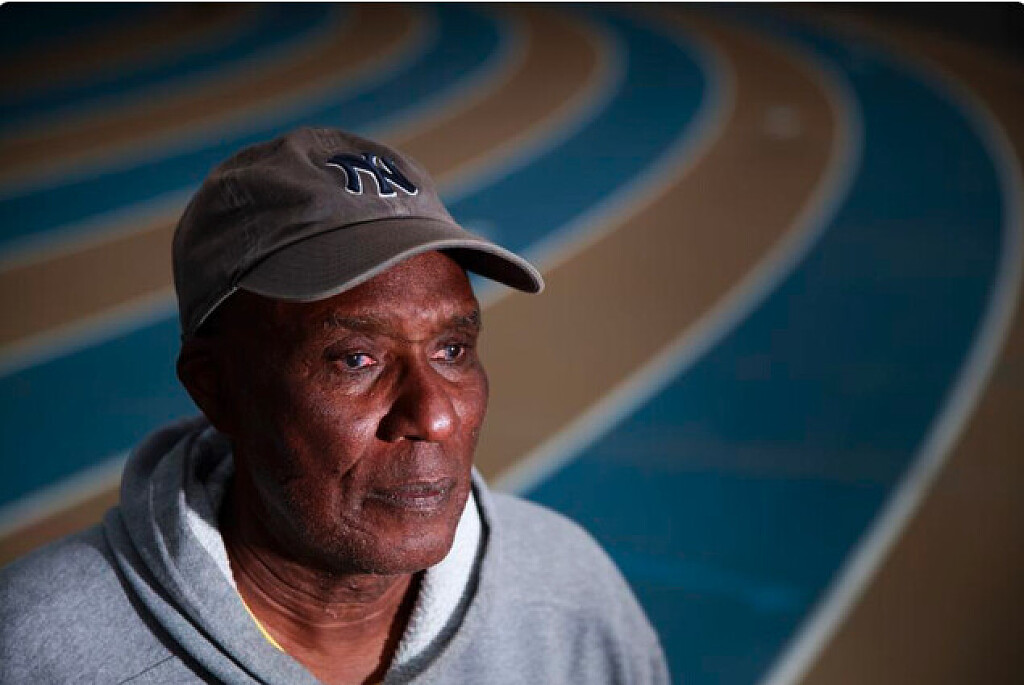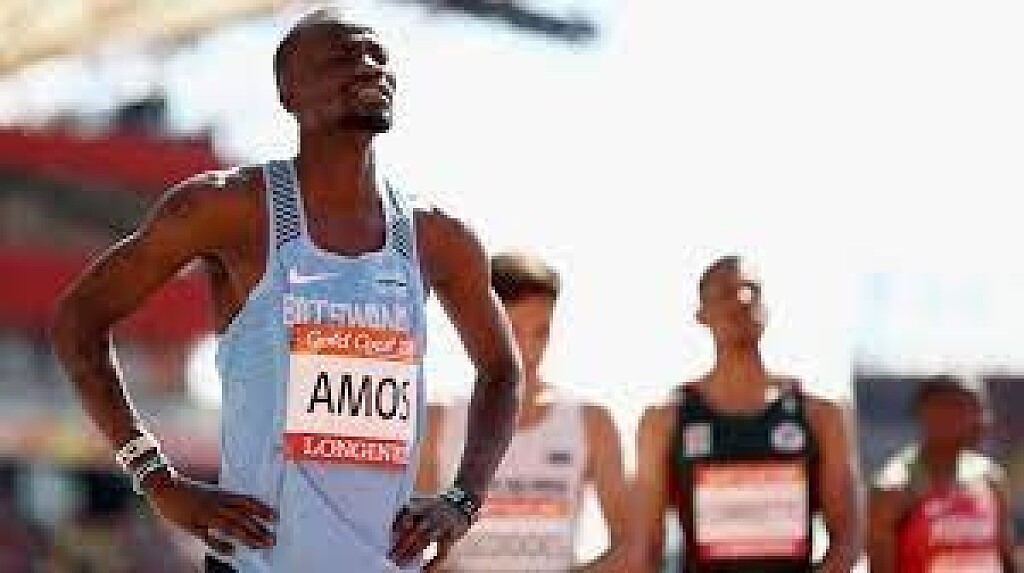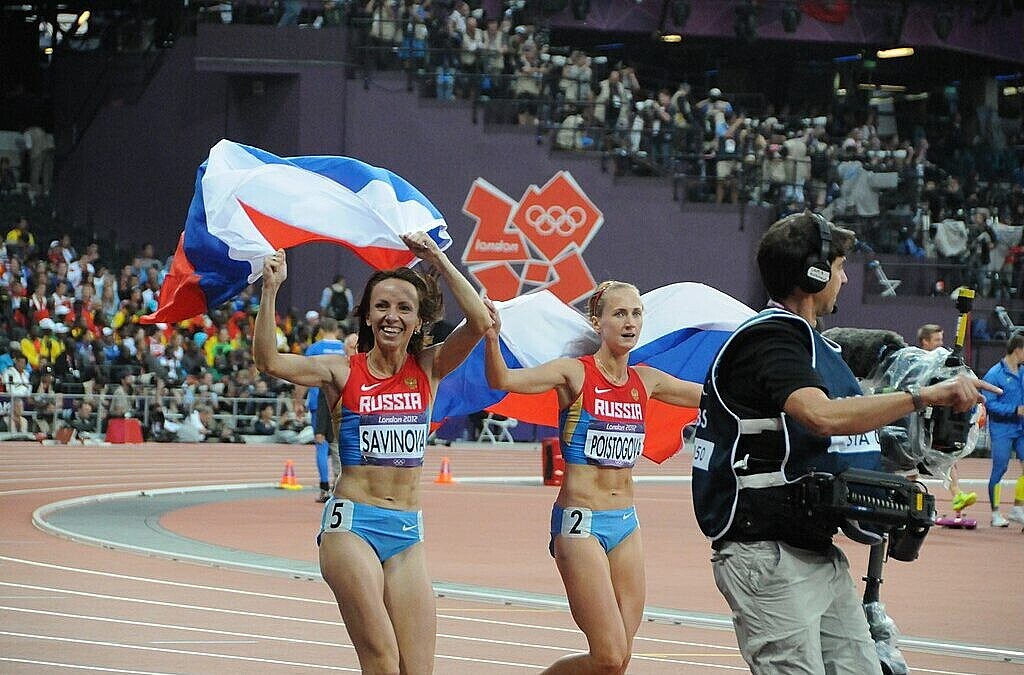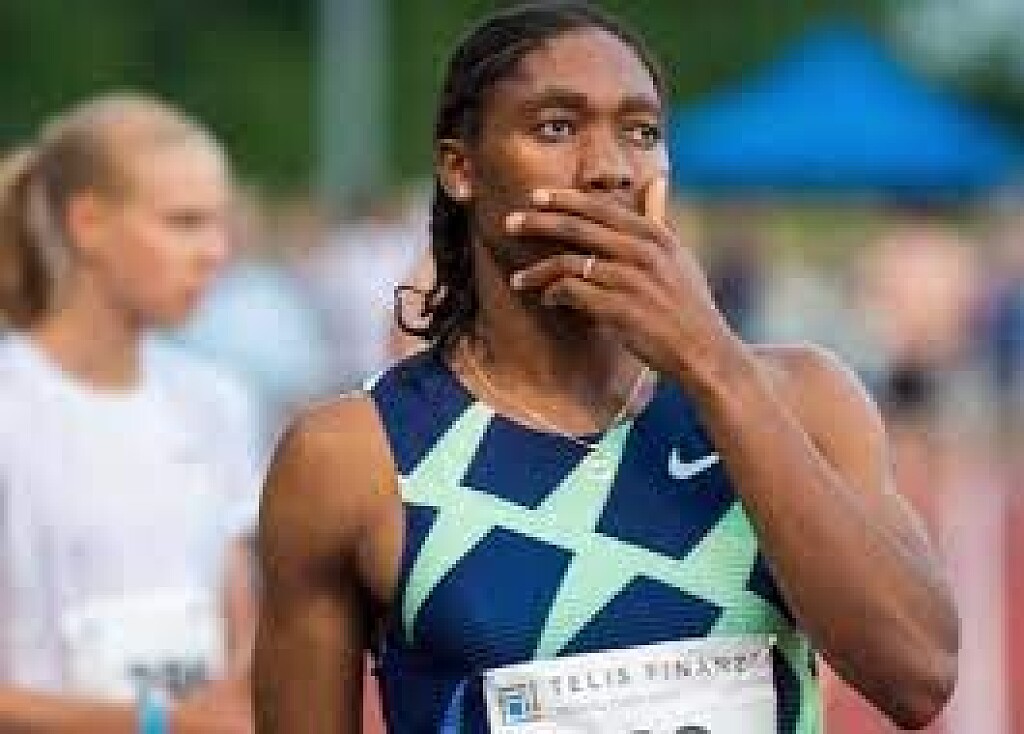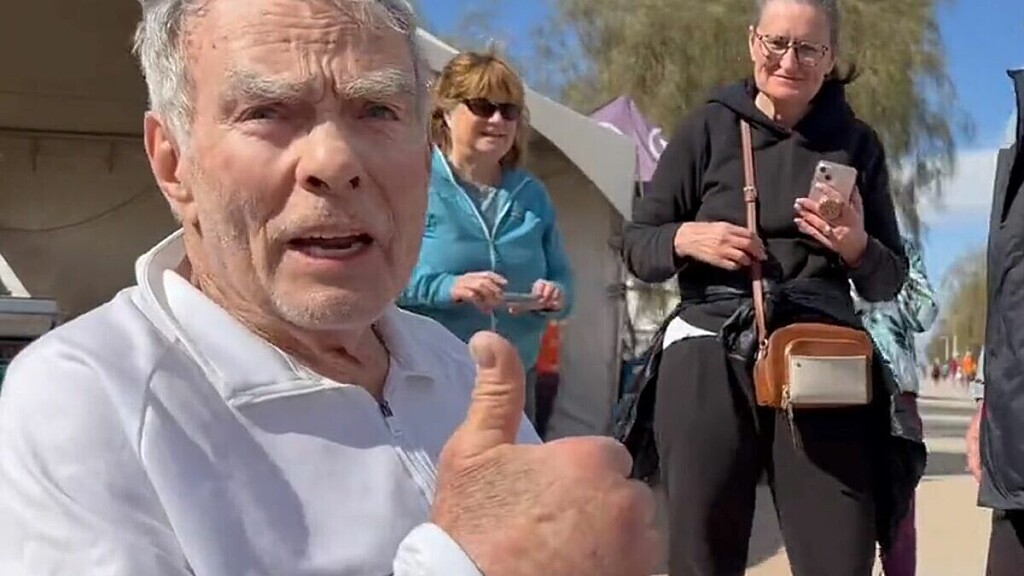Running News Daily
Running News Daily is edited by Bob Anderson. Send your news items to bob@mybestruns.com Advertising opportunities available. Train the Kenyan Way at KATA Kenya and Portugal owned and operated by Bob Anderson. Be sure to catch our movie A Long Run the movie KATA Running Camps and KATA Potato Farms - 31 now open in Kenya! https://kata.ke/
Index to Daily Posts · Sign Up For Updates · Run The World Feed
Articles tagged #Coe
Today's Running News
Susanna Sullivan — The Teacher Who Runs Among the World’s Best Set to run NYC Sunday
American marathoner Susanna Sullivan continues to prove that world-class athleticism and everyday life can coexist. A sixth-grade math and science teacher from McLean, Virginia, Sullivan has quietly become one of the top American women in marathon history — balancing the classroom with 120-mile training weeks and remarkable consistency on the roads.
From Humble Beginnings to World Class
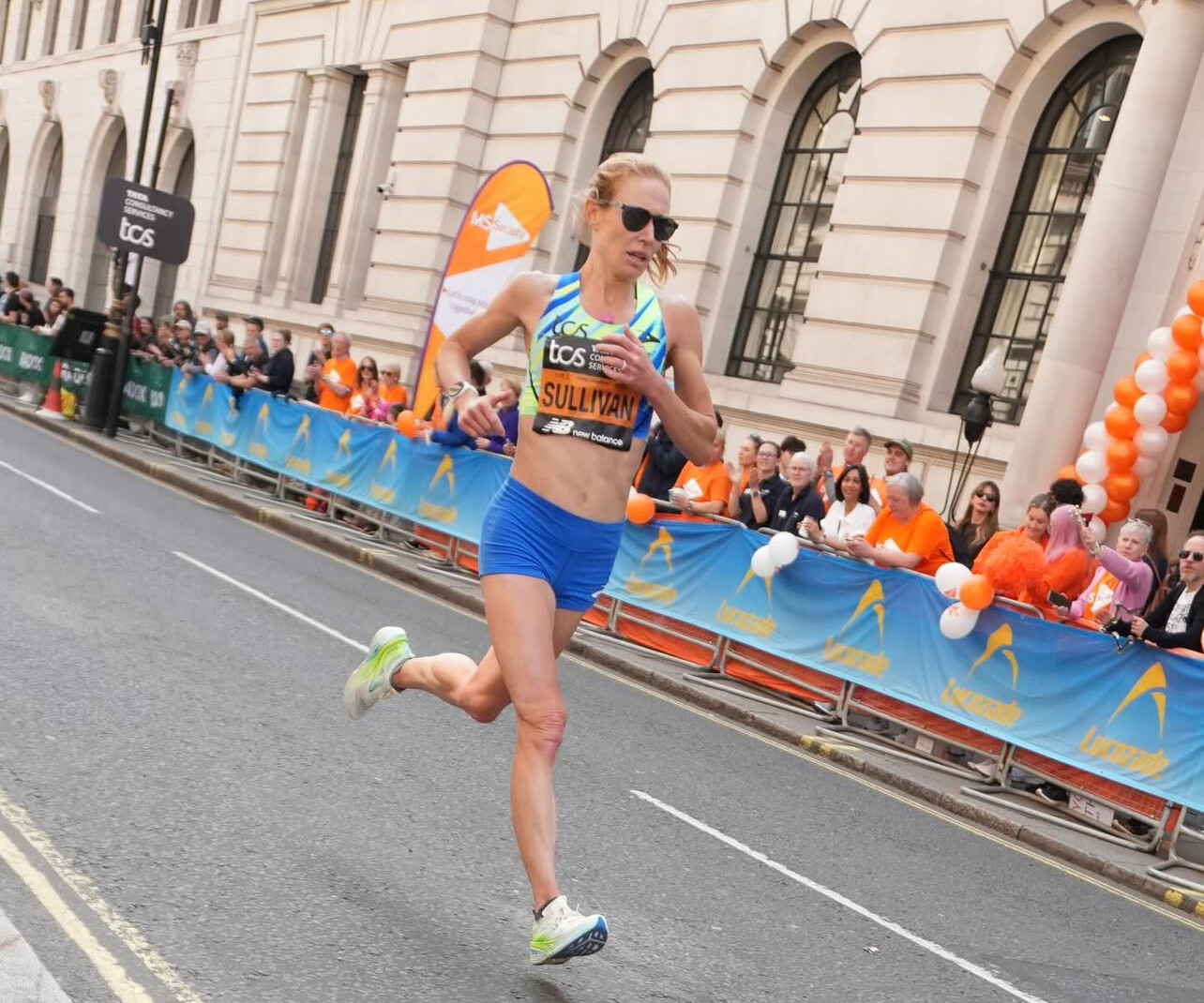
Born May 13, 1990, in West Palm Beach, Florida, and raised in Virginia, Sullivan’s early success came at George Mason High School, where she earned multiple state titles in cross-country and track. After competing at the University of Notre Dame, she battled injuries and fatigue but never lost her love for the sport.
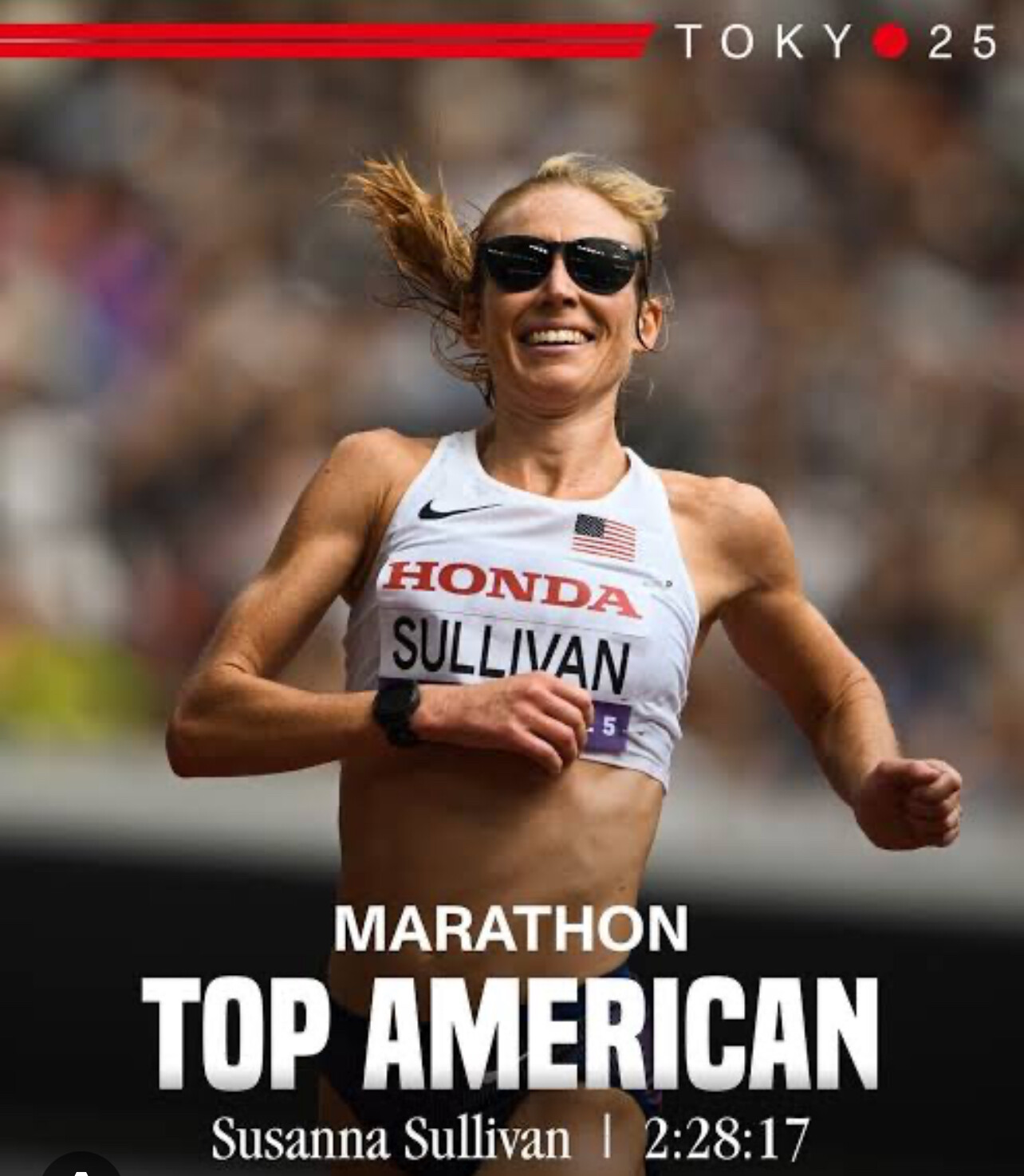
Her marathon debut came in 2015 at Grandma’s Marathon in Minnesota, where she clocked 2:35:37 for 9th place. Over the next decade, she quietly built momentum, cutting time from race to race. The breakthrough arrived in 2024 at the Chicago Marathon, where she finished 7th overall — and first American — in 2:21:56, a personal best that placed her among the top ten fastest U.S. women of all time.
Fourth at the 2025 World Championships in Tokyo
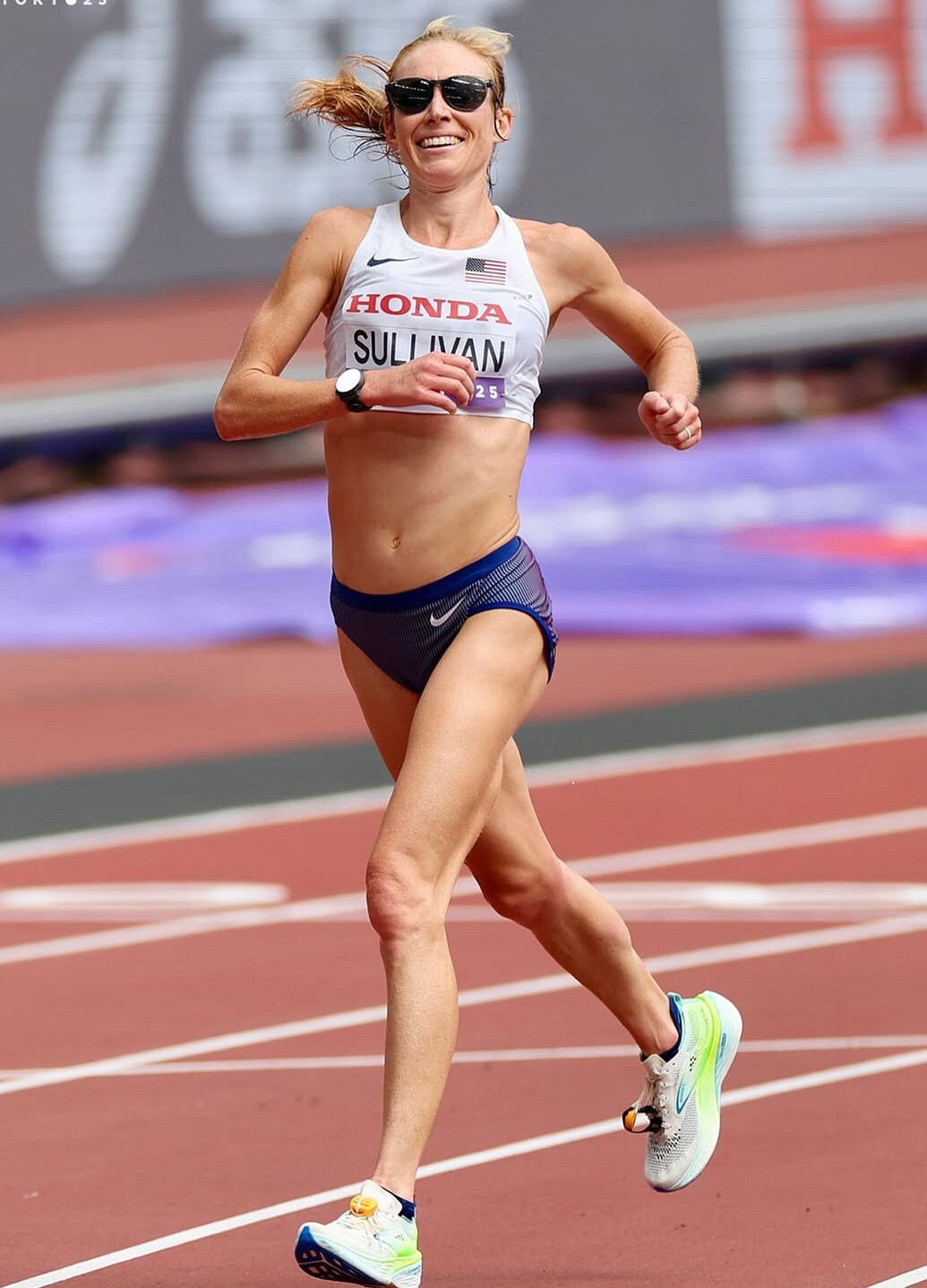
On September 14, 2025, Sullivan delivered one of her finest performances at the World Athletics Championships Marathon in Tokyo, finishing fourth in 2:28:17.
Under sweltering heat and high humidity, Sullivan courageously led much of the race, setting the pace through 25 kilometers before the eventual medalists pulled away. Her performance — the top American finish — underscored her strength, tactical intelligence, and resilience on one of the sport’s biggest stages.
It also marked a full-circle comeback. Two years earlier, at the 2023 World Championships, Sullivan fractured her kneecap mid-race and limped home in 58th place. Her return to the top five in Tokyo symbolized perseverance and renewed confidence.
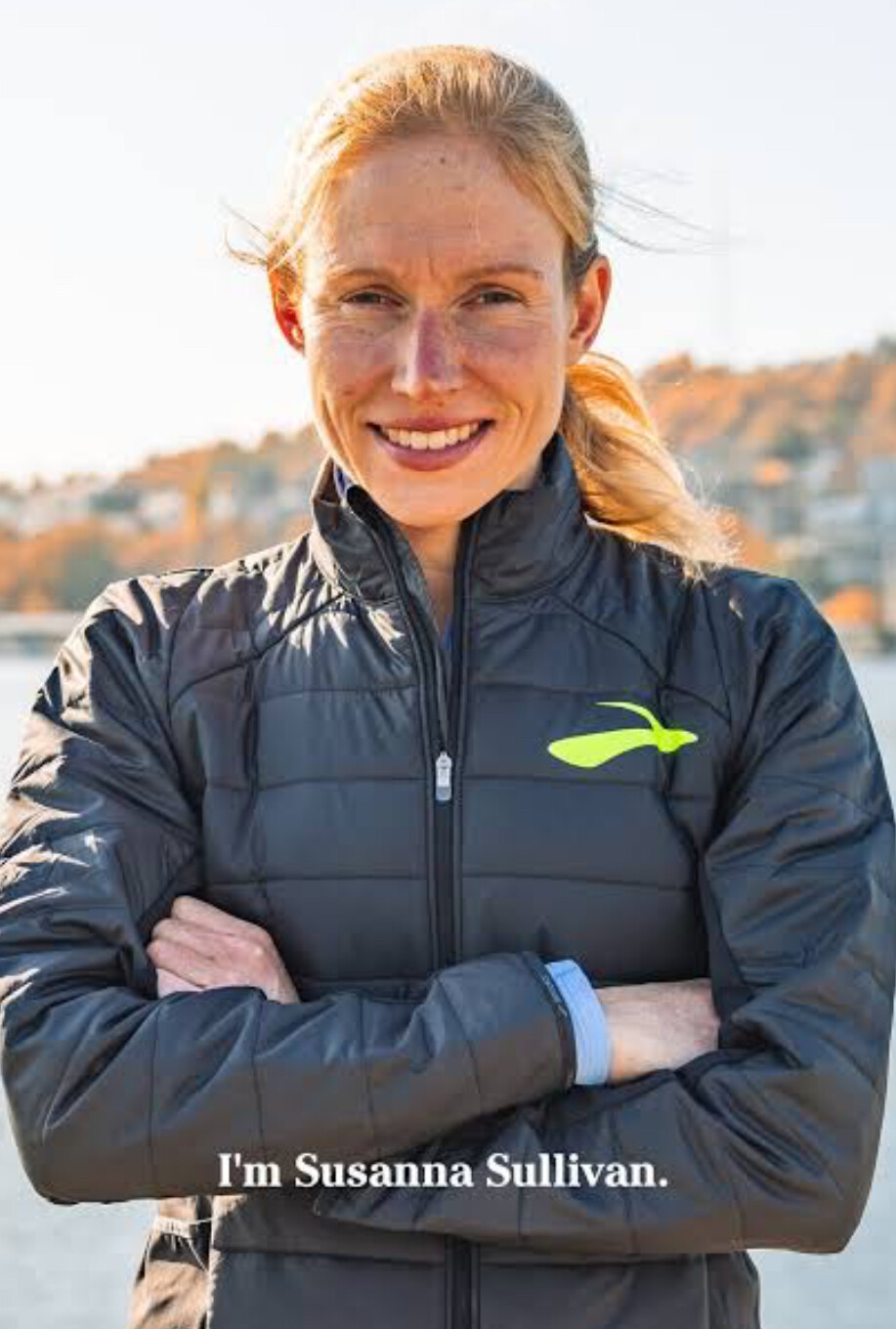
The Balance of Two Worlds
While most professional runners build their lives around training, Sullivan still starts her mornings in the classroom. She teaches sixth-grade advanced math and science, grading papers and designing lessons between workouts.
“Running gives me perspective,” she has said in interviews. “It keeps me grounded. Teaching reminds me there’s more to life than splits and finish times.”
Her ability to balance two demanding worlds has made her an inspiration for runners who juggle careers, families, and athletic dreams.
On to New York
Next up, Sullivan is set to compete in the 2025 TCS New York City Marathon on Sunday, November 2. She enters as one of the leading Americans to watch in a stacked international field that includes Olympians and major-marathon champions.
After her stellar run in Tokyo, many eyes will be on how she handles the challenging hills and bridges of New York — a course that rewards experience and toughness rather than speed alone. Few embody those traits better than Sullivan.
Lessons from Her Journey
• Patience and perseverance — her steady rise from 2:35 to 2:21 shows the value of long-term commitment.
• Balance — proof that excellence isn’t limited to full-time athletes.
• Resilience — recovering from injuries and setbacks only to climb higher.
• Leadership — both in the classroom and in leading a world championship field
Career Highlights
• Marathon PR: 2:21:56 – Chicago (2024)
• World Championships Tokyo (2025): 4th Place, 2:28:17
• London Marathon (2023): 10th Place, 2:24:27 (top American)
• Cherry Blossom 10-Mile (2022): Champion, 52:32
• Half Marathon PR: 1:08:59 – January 2025
A Runner to Watch
Susanna Sullivan’s story reminds us that greatness doesn’t always come from perfect conditions or full-time focus. Sometimes it comes from a quiet classroom in Virginia, where a teacher grades homework — and then goes out to train like one of the best marathoners in the world.
Her journey is far from over, and as she lines up in New York, she represents not just American distance running but every runner chasing balance, progress, and purpose — one mile at a time.
by Boris Baron
Login to leave a comment
Michael Johnson’s Grand Slam Track Faces $13M Crisis After Investor Fallout
Michael Johnson’s ambitious new track and field league, Grand Slam Track, is facing a major financial crisis after a key investor backed out of their funding commitment, leaving the startup owing athletes and vendors over $13 million.
Launched in early 2025 with the goal of transforming the economics of elite track competition, Grand Slam Track promised unprecedented prize money across four high-profile meets. Athletes were told they could earn up to $100,000 per event, far surpassing the standard payouts in the sport.

But just months into its debut season, the reality behind the scenes has shifted dramatically.
“A major investor failed to fulfill their full commitment,” Johnson told Front Office Sports. “That put us in a major, major cash flow issue.”
Millions Owed to Athletes
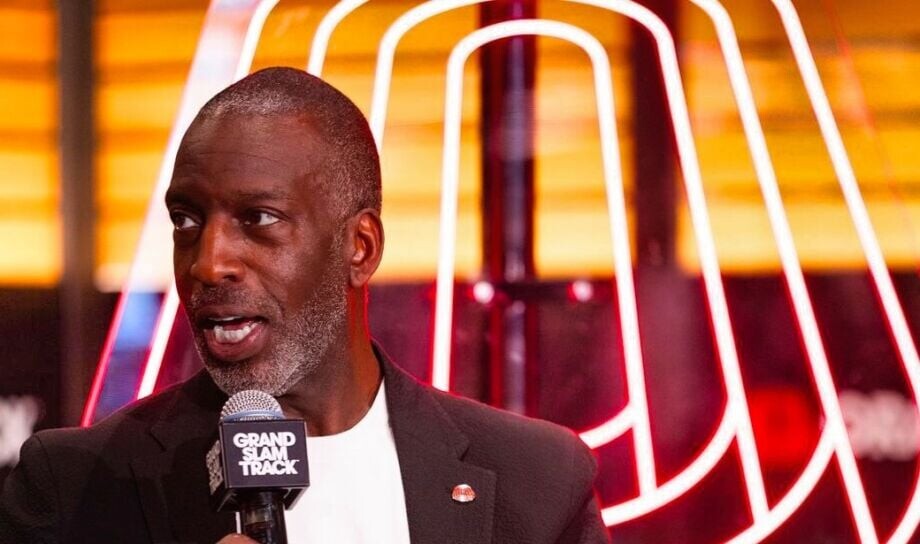
Only appearance fees from the opening event in Kingston, Jamaica have been paid out. Payments for subsequent events in Miami and Philadelphia are still pending, and no compensation was issued for the Los Angeles event, which was ultimately canceled.
In total, Grand Slam Track now owes at least $13 million to athletes, plus an undisclosed amount to vendors and venues. The startup also defaulted on payments to key partners, including approximately $78,000 owed to the Ansin Sports Complex in Florida.
Athletes have voiced their frustration publicly. Sprinter Gabby Thomas and British star Zharnel Hughes are among those still awaiting payments. The company has informed agents that Kingston prize money will be paid by end of July, with all other dues—including from the canceled LA meet—settled by September.
World Athletics Steps In
The growing controversy has caught the attention of World Athletics President Sebastian Coe, who said the organization is “monitoring the situation closely.” In recent interviews, Coe cautioned against “vanity projects” that are heavy on promise but light on execution, adding that athletes and agents have raised formal concerns with the global governing body.
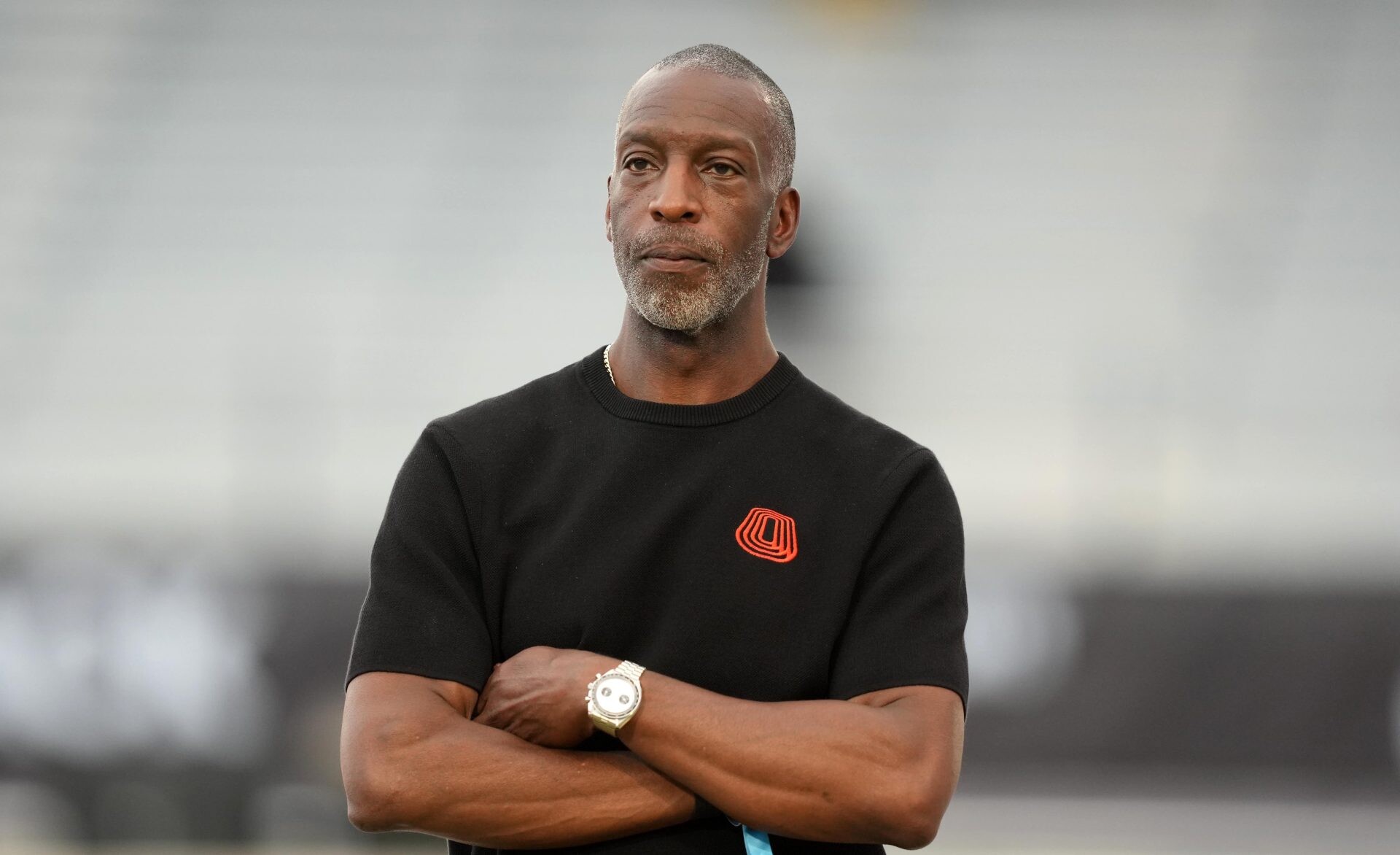
“We have been in discussions with the Association of Athletics Managers,” Coe said, “and we are aware of the growing tension.”
Who Backed Out?
Johnson has so far declined to name the investor who reneged on their funding, but according to sources, the pullout happened days after the Kingston event. The investor allegedly redirected their capital elsewhere due to shifting global financial conditions, including tariff changes.
Can GST Recover?
Despite the turmoil, Johnson says the mission of Grand Slam Track is far from over. A new investor—reportedly Vista Equity’s Robert Smith—joined prior to the Philadelphia event, and Johnson insists the team is working “around the clock” to secure additional capital.
“We’ve got to get this right,” he said. “Our priority is to make sure our athletes and vendors are paid before we even think about next season.”
As of now, all 2025 payments remain outstanding, and the 2026 season hangs in the balance.
by Boris Baron
Login to leave a comment
Strong Performances Highlight KATA 5K & 10K Time Trials in Thika Kenya
It was a good morning for a competitive and inspiring KATA monthly time trial number 46, featuring both 5km and 10km distances for men and women. The event showcased rising talent, strong comebacks, and several personal bests.
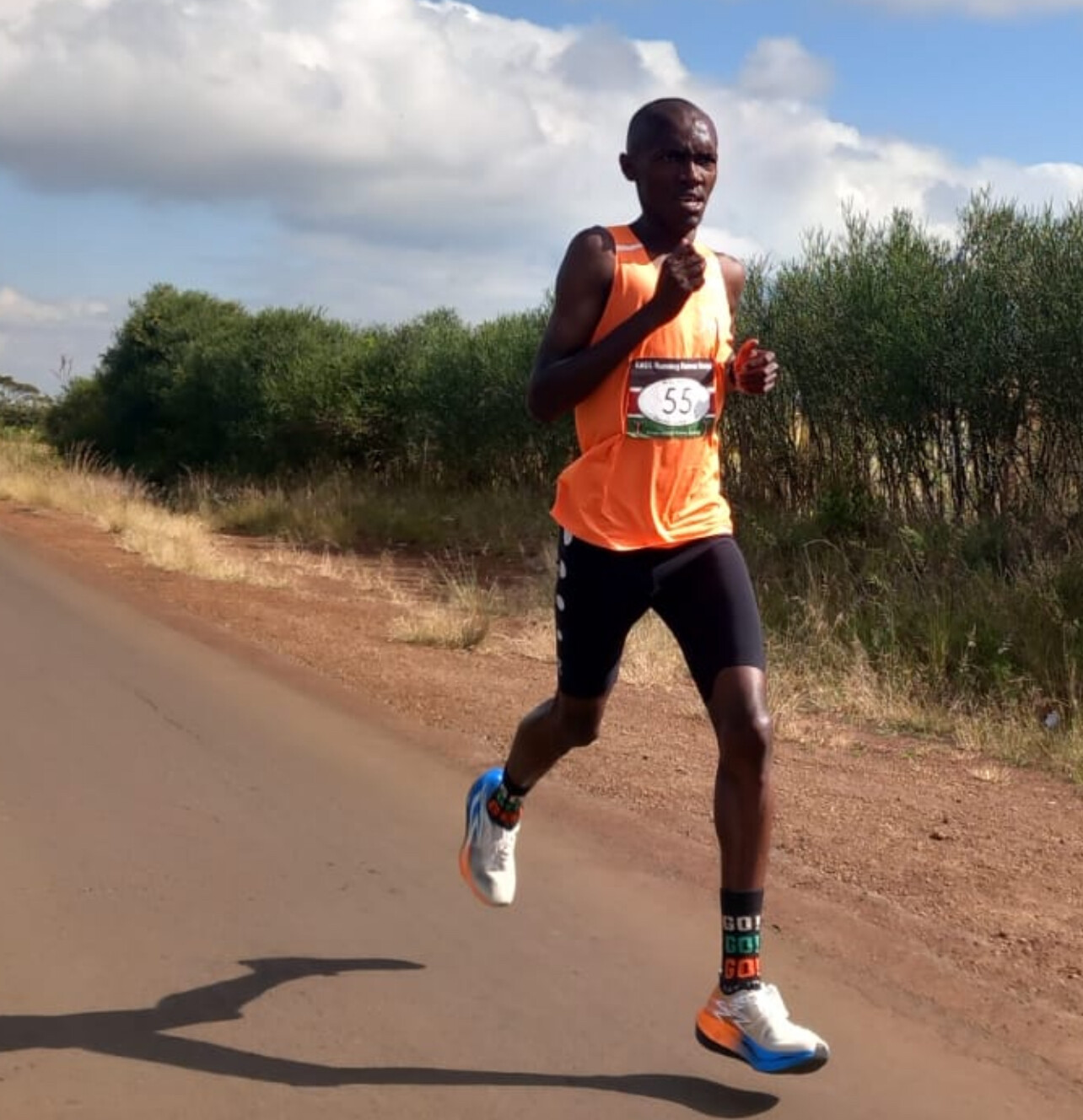
In the men’s 5km, 19-year-old Godfrey Kahora led the charge, clocking a swift 15:45 to secure the top spot. Justus Nyamai, only 17, returned from a two-month injury break to run a personal best of 16:42, showing immense promise for the future. Fellow 17-year-old Collins Mutungi, new to competitive running, impressed in third with a solid 17:32.
On the women’s side, Anastasia Muthoni took a well-earned win in 19:29, edging out 15-year-old Ann Karanja, who finished just a second behind in 19:30, setting a new personal best. Tabitha Wanjiru, also 15, placed third.
The 10km men’s race was tightly contested, with Zachary Kirika (24) prevailing in a sharp 29:45 (second photo), closely followed by Kelvin Kemoi (23) in 29:57. In the women’s 10km, Jacinta Kamau (24) took top honors in 36:08 (third photo), ahead of Caren Kipcoech (24) in 37:09 and Caren Chepkemoi (23) in 38:09.

Full Results

5km Women
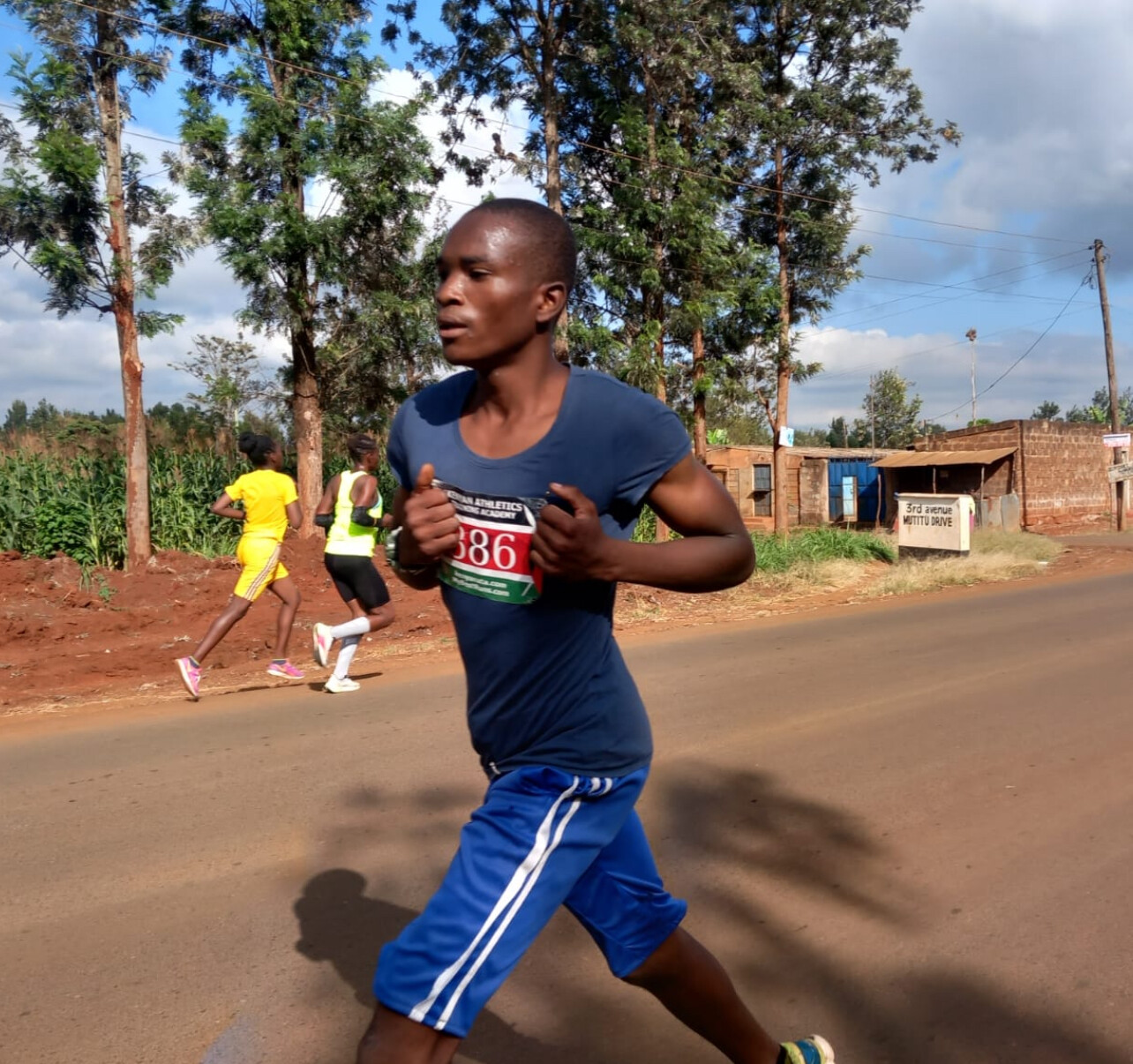
1. Anastasia Muthoni – Age 23 – Bib 464 – 19:29
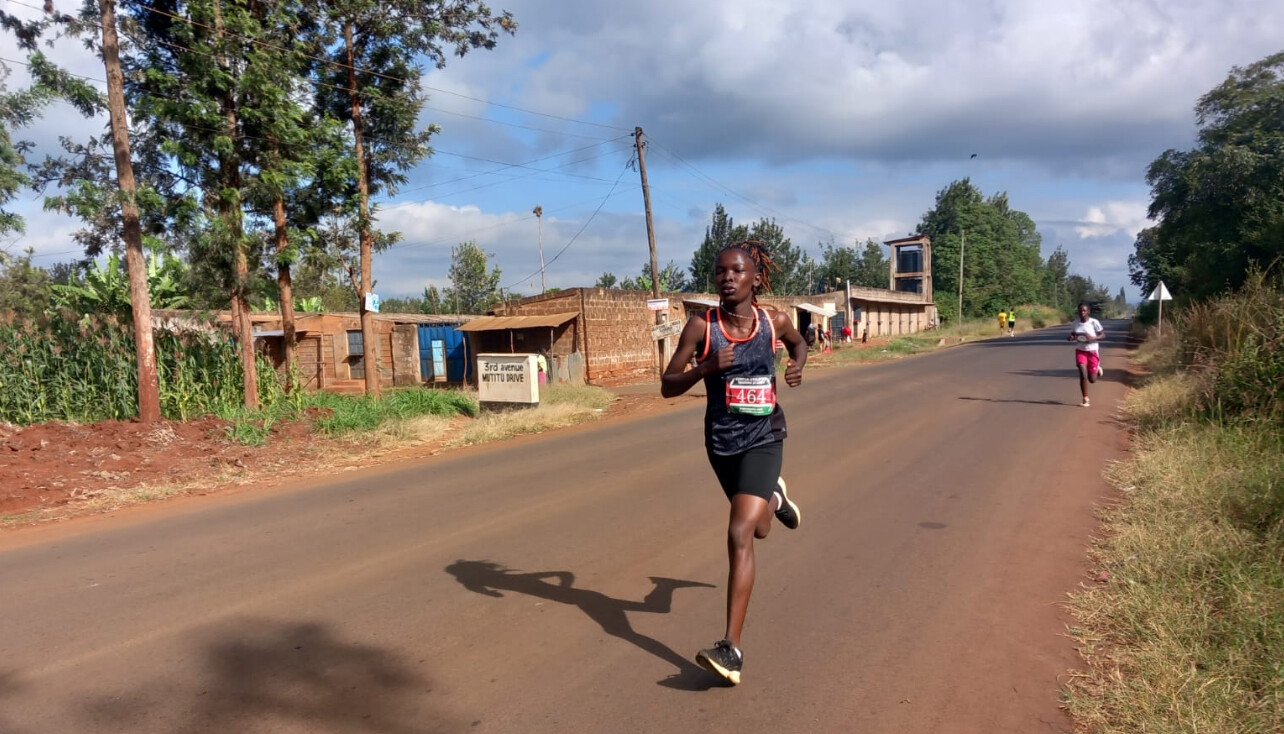
2. Ann Karanja – Age 15 – Bib 29 – 19:30
3. Tabitha Wanjiru – Age 15 – Bib 63 – 23:51
5km Men
1. Godfrey Kahora – Age 19 – Bib 409 – 15:45
2. Justus Nyamai – Age 17 – Bib 265 – 16:42
3. Collins Mutungi – Age 17 – Bib 51 – 17:32
4. Peter Waititu – Age 17 – Bib 243 – 17:41
5. Brandon Mutungi – Age 17 – Bib 149 – 17:44
6. Eric Mwaura – Age 18 – Bib 256 – 18:38
7. Kelvin Musila – Age 18 – Bib 386 – 20:15
10km Women
1. Jacinta Kamau – Age 24 – Bib 66 – 36:08
2. Caren Kipcoech – Age 24 – Bib 14 – 37:09
3. Caren Chepkemoi – Age 23 – Bib 261 – 38:09
4. Lucy Muritu – Age 40 – Bib 431 – 44:16
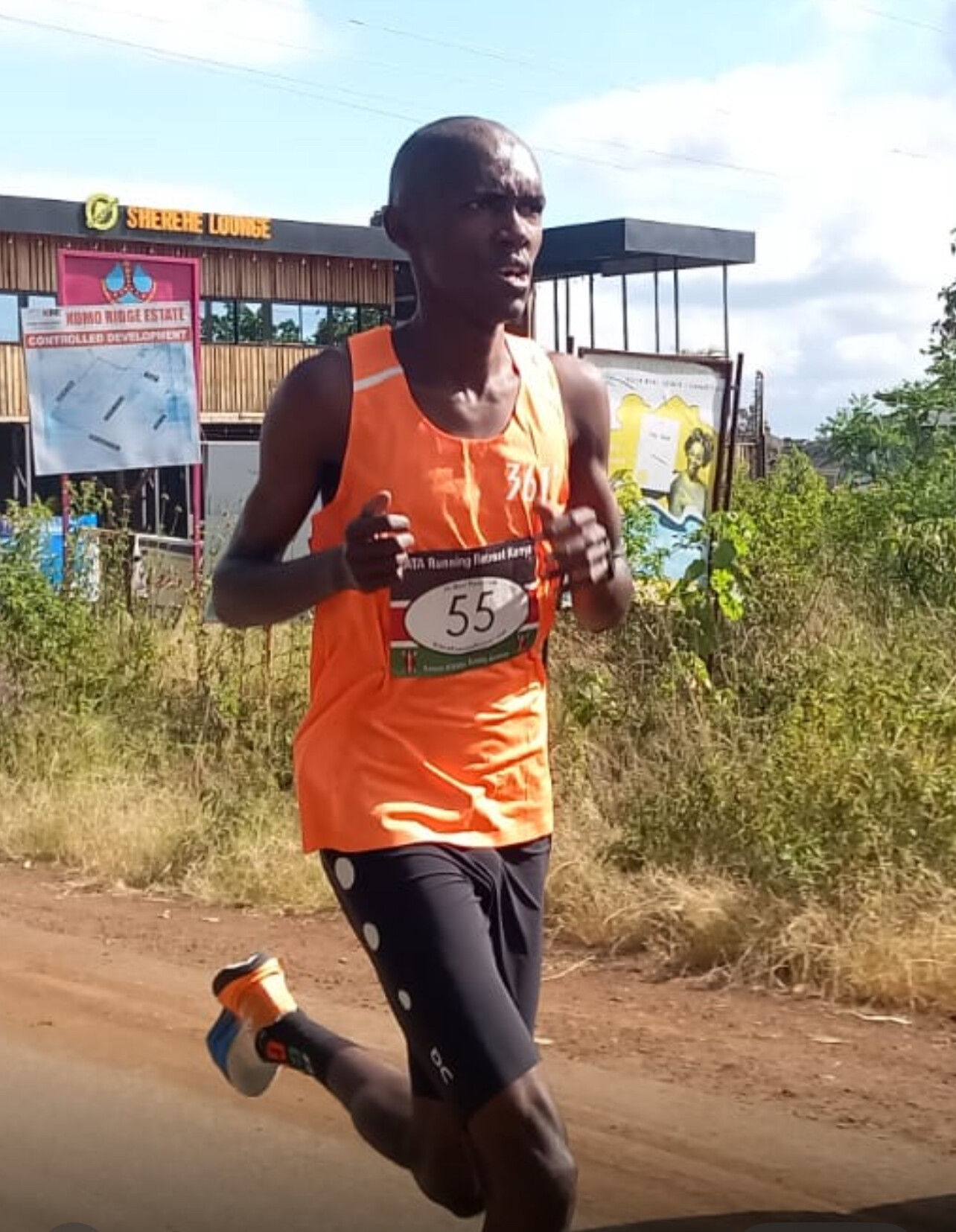
10km Men
1. Zachary Kirika – Age 24 – Bib 55 – 29:45
2. Kelvin Kemoi – Age 23 – Bib 56 – 29:57
3. Enoch Cherioyot – Age 20 – Bib 257 – 30:34
4. John Chege – Age 19 – Bib 40 – 30:36
5. Kelvin Ragui – Age 22 – Bib 53 – 30:59
6. Charles Ndirangu – Age 24 – Bib 1 – 31:18
7. Joseph Karanja – Age 42 – Bib 378 – 32:38
8. David Muriuki – Age 39 – Bib 3 – 32:54
9. Enoch Kipngeno – Age 22 – Bib 57 – 33:16
10. Vincent Kiprotich – Age 23 – Bib 43 – 34:18
11. Benson Gicheha – Age 34 – Bib 49 – 35:09
12. Harrison Mwangi – Age 21 – Bib 44 – 35:44
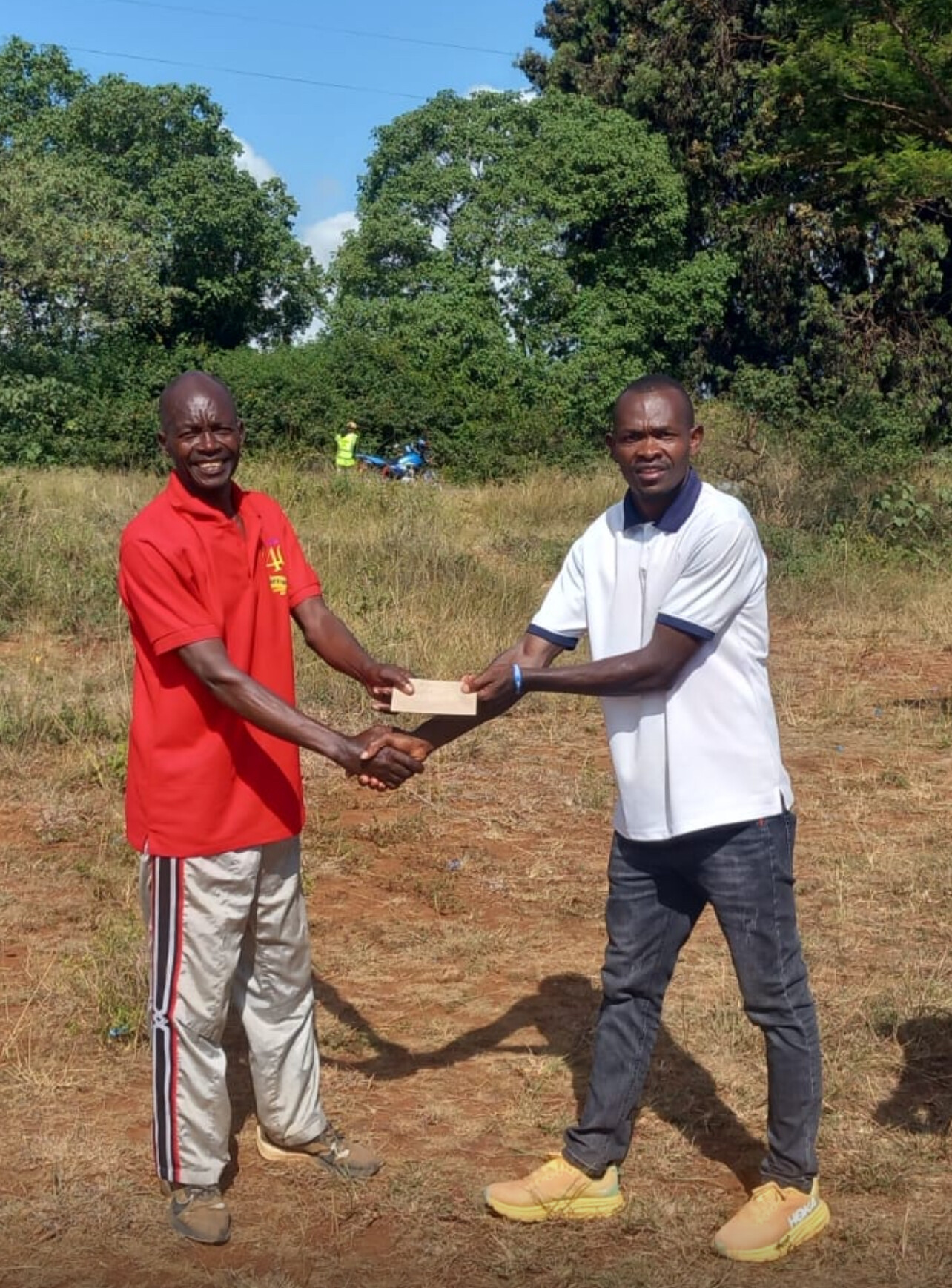
13. Charles Ndirangu – Age 67 – Bib 399 – 38:28
by Boris Baron
Login to leave a comment
KATA Time Trial Series
Welcome to the KATA Monthly Time Trial Held at the Kenyan Athletics Training Academy in Thika, Kenya, the KATA Monthly Time Trial is a unique and inclusive event designed to support runners of all levels in achieving their goals and showcasing their fitness. This event offers both 10K and 5K distances on an accurate, certified course, providing participants with...
more...Personal Bests and Breakthroughs at KATA Time Trial #45 in Kenya
The 45th edition of the KATA (Kenya Athletics Training Academy) Monthly Time Trial took place May 14 in Thika, Kenya, with 29 athletes tackling the 10K and 5K courses. Despite challenging weather, the energy and performance level were exceptional, with several runners delivering personal bests and breakthrough performances.
Women’s 10K: Jacinta Kamau Leads the Charge
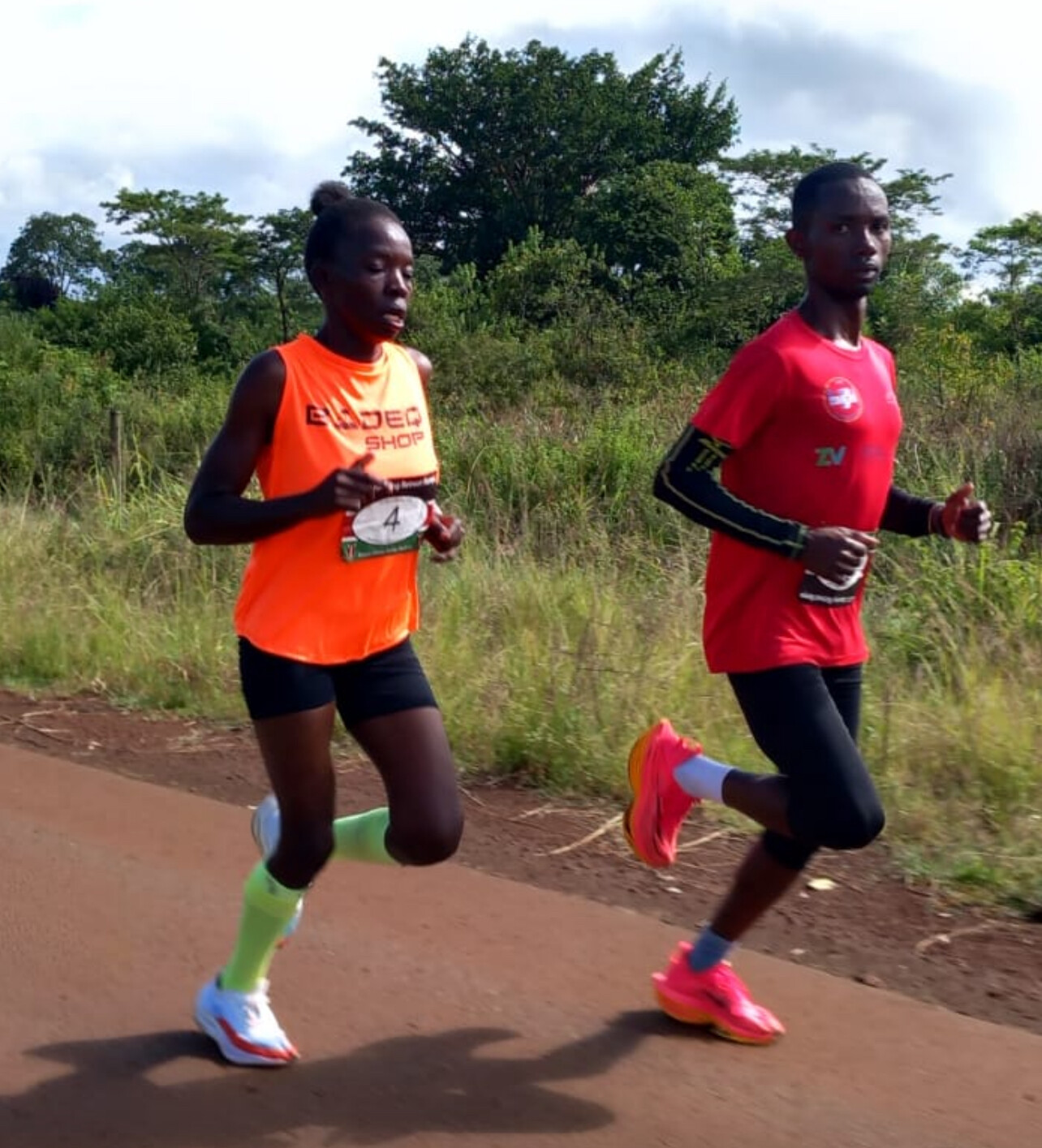
Jacinta Kamau headlined the women’s race, claiming victory with a personal best of 34:33, shaving 12 seconds off her previous best. Lois Karie followed closely in second, also notching a PB with 34:40—a remarkable improvement of over one minute from her previous mark of 36:56.

Veteran Naomi Nduta claimed third in 35:52, while Caren Kipcoech also impressed, finishing fourth in 36:22, a PB improvement of more than a minute.
Top 10 Results – Women’s 10K
1. Jacinta Kamau (24) – 34:33 (bib 4)
2. Lois Karie (24) – 34:40
3. Naomi Nduta (35) – 35:52
4. Caren Kipcoech (24) – 36:22
5. Virginia Wanjiru (22) – 37:12
6. Naomi Wambui (40) – 37:17
7. Susan Njuu (40) – 37:29
8. Karen Chepkemoi (23) – 40:12
9. Lucy Muritu (40) – 44:10
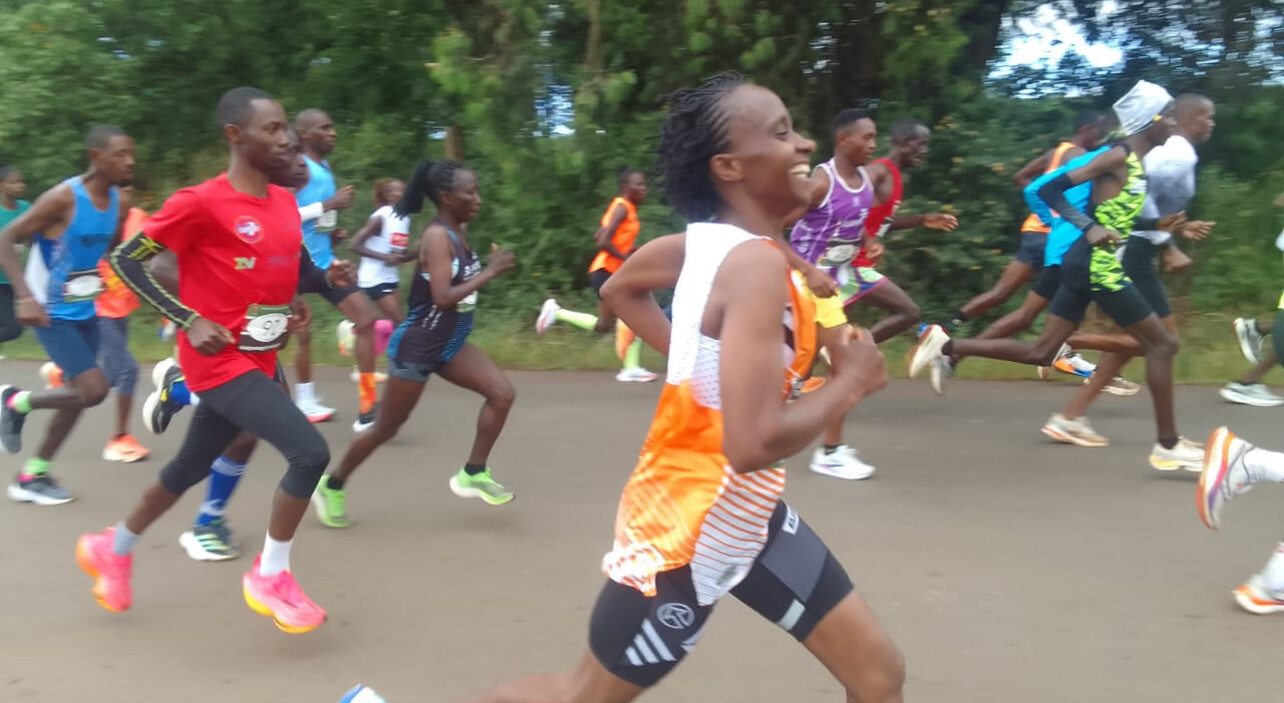
Men’s 10K: Kioko and Wanyoike Dominate, PBs Highlight Deep Field
Athanas Kioko surged to victory in the men’s 10K with a fast 29:03, followed closely by Peter Wanyoike in 29:05 and Zachariah Kirika in 29:25.
Notable improvements came from Kevin Kemoi, who posted 29:35 for fourth place, over 30 seconds faster than his previous best. Kelvin Ragui (5th) clocked 30:04, a 33-second improvement. But perhaps the most inspiring performance came from Charles Ndirangu, who finished eighth in 30:36—a massive 50-second PB. A former 400m sprinter, Ndirangu’s continued development is raising eyebrows.
in March Athenas Kioko finished second at the Los Angeles Marathon. "Our monthly time trial continues to attract first class talent," says KATA director Bob Anderson. (Top three is the first photo)
Top 14 Results – Men’s 10K
1. Athanas Kioko (30) – 29:03 (bib 49)
2. Peter Wanyoike (29) – 29:05 (bib 63)
3. Zachariah Kirika (24) – 29:25 (bib 22)
4. Kevin Kemoi (23) – 29:35
5. Kelvin Ragui (22) – 30:04
6. Raphael Karita (26) – 30:06
7. Boniface Mungai (29) – 30:22
8. Charles Ndirangu (24) – 30:36
9. John Chege (19) – 30:48
10. Bernard Gicheha (34) – 33:08
11. Johnson Kaberia (28) – 33:26
12. Joseph Wanjiru (39) – 34:33
13. Vincent Kiprotich (25) – 37:03
14. Charles Ndirangu (67) – 37:10
Men’s 5K: Anthony Kapua Cruises to Victory
In the 5K race, Anthony Kapua took command early and never looked back, winning in 15:08. Harrison Mwangi (16:52) and Brandon Mutungi (17:02) rounded out the top three, with strong showings from several juniors.
Top 6 Results – Men’s 5K
1. Anthony Kapua (22) – 15:08
2. Harrison Mwangi (21) – 16:52
3. Brandon Mutungi (17) – 17:02
4. Collins Mutungi (17) – 17:32
5. Dennis Mondo (21) – 17:36
6. Peter Waititu (17) – 18:18
A Rising Academy
The Kenya Athletics Training Academy continues to build momentum, nurturing promising talent in a highly supportive environment. With consistent performance improvements and growing athlete confidence, the future looks bright.
Next KATA Time Trial: June 11, 2025 – Thika, Kenya
Train the Kenyan way at www.KATARunningRetreat.com @ two locations: Kenya and Portugal
Stay tuned for more updates at MyBestRuns.com
by Boris Baron
Login to leave a comment
KATA Time Trial Series
Welcome to the KATA Monthly Time Trial Held at the Kenyan Athletics Training Academy in Thika, Kenya, the KATA Monthly Time Trial is a unique and inclusive event designed to support runners of all levels in achieving their goals and showcasing their fitness. This event offers both 10K and 5K distances on an accurate, certified course, providing participants with...
more...Oscars Bump the LA Marathon Off Its March 15 Date — What Runners Need to Know
The 2026 Los Angeles Marathon will not take place on March 15 as originally planned. That date now belongs to the Oscars.
After weeks of behind-the-scenes negotiations, Los Angeles Mayor Karen Bass brokered an agreement between the McCourt Foundation, which organizes the marathon, and the Academy of Motion Picture Arts and Sciences. The result: Hollywood’s biggest night stays on schedule, while 25,000 runners, thousands of volunteers, and months of race prep will now pivot to a new date—yet to be announced.
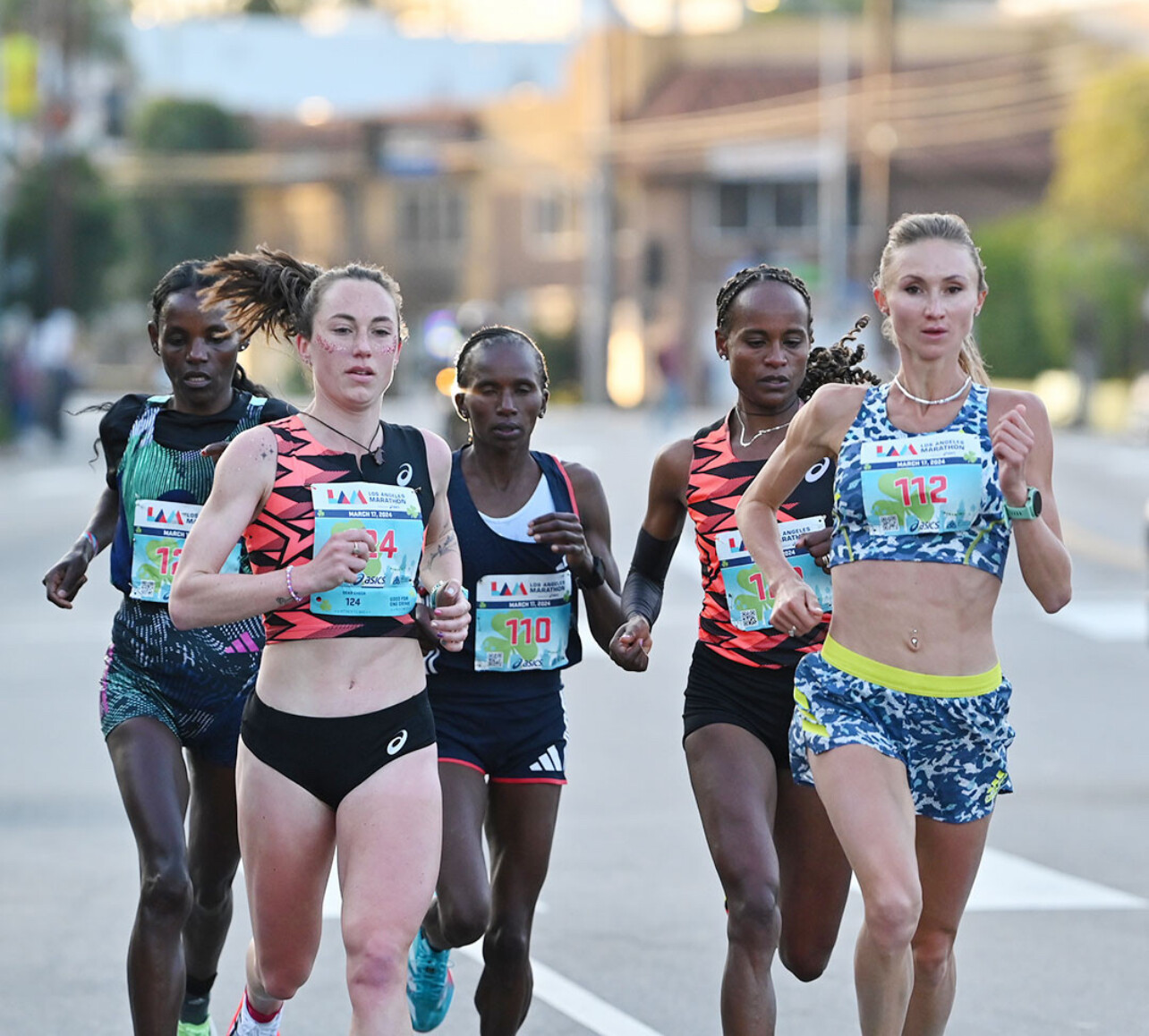
Why the Change Matters to Runners
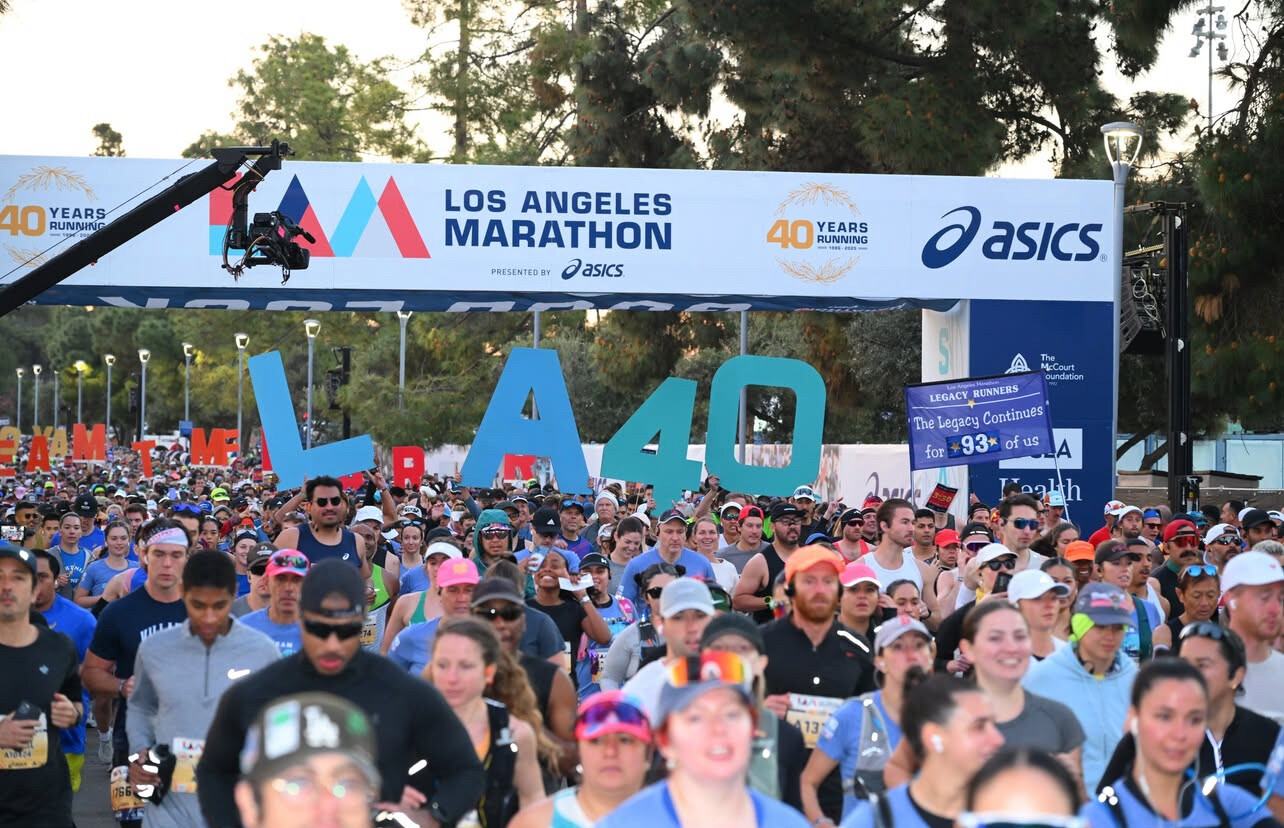
For serious runners, a marathon isn’t just a weekend event—it’s the culmination of a finely tuned training cycle that can last four to six months. Moving the race date throws off race-day pacing, tapering schedules, and peak performance planning. A March 15 marathon typically means starting heavy training in November. Runners may now need to reset their cycles entirely, depending on how late in March the new date lands.
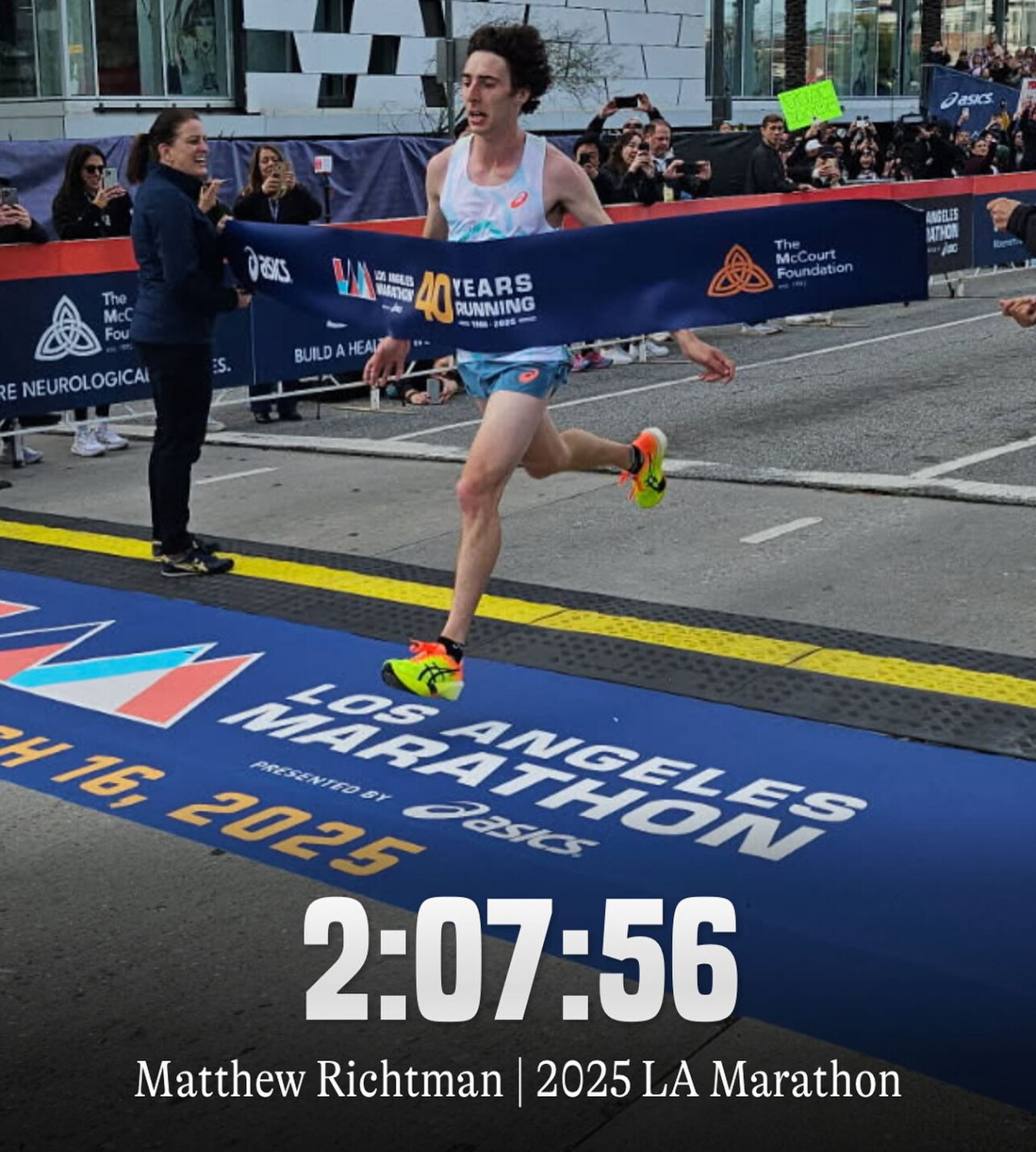
From a logistics standpoint, the Oscars and the marathon simply couldn’t coexist. The LA Marathon runs directly past the Dolby Theatre—home of the Academy Awards. Cleaning the course and securing the red carpet area within a few hours of 25,000 runners moving through was always going to be unrealistic.
“There are two major facilities—Dodger Stadium and Century City—connected by what’s really a 26-mile stage,” said Murphy Reinschreiber, COO of the McCourt Foundation. “The number of people, communities, and businesses impacted by a date change is mind-boggling.” And yet, the show must go on—for Hollywood.
Runners Left in Limbo
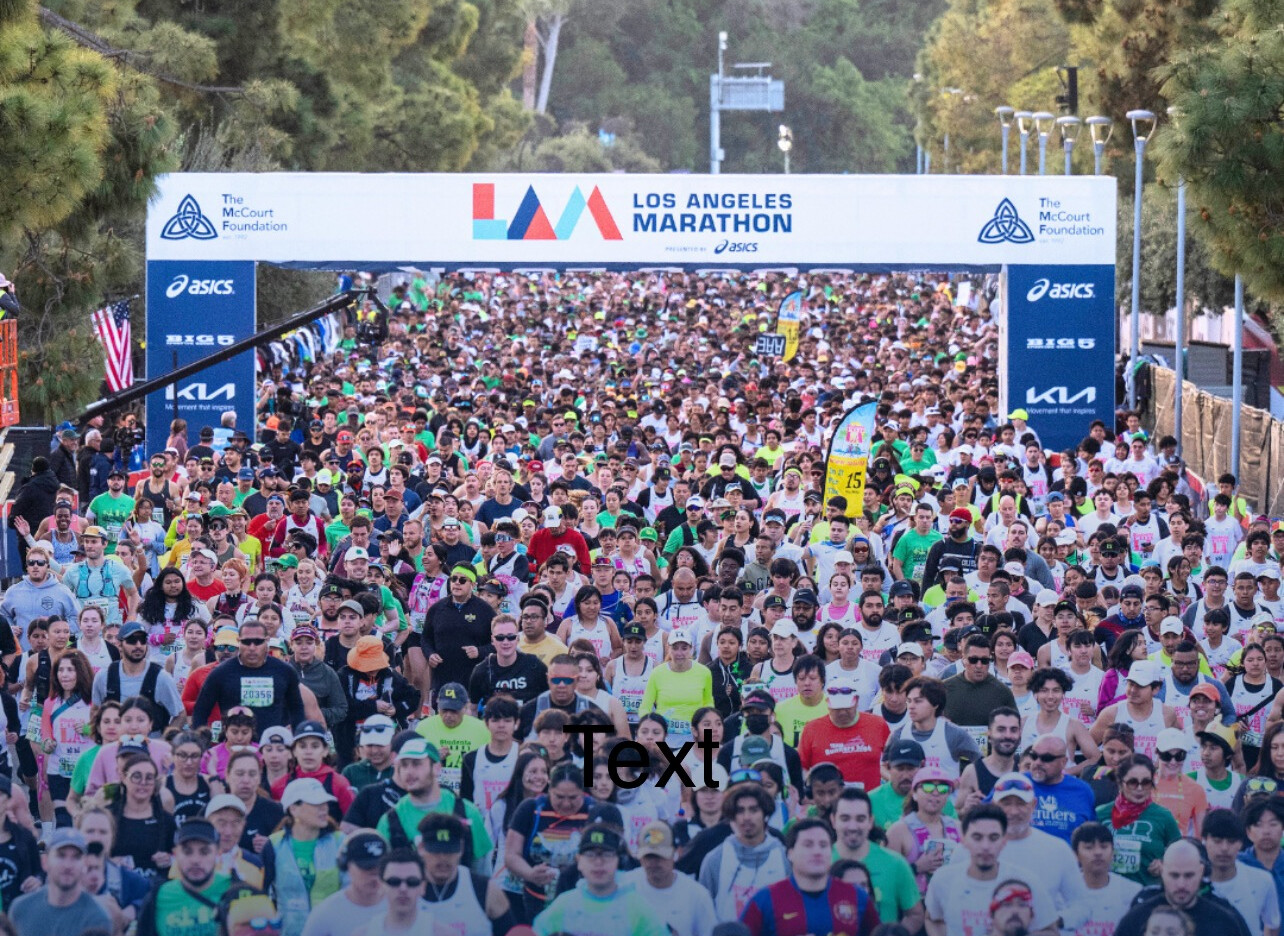
Over 5,000 people had already registered for the 2026 marathon. Organizers are offering full refunds, but for many runners, that doesn’t undo the disruption to travel plans, accommodations, or their training momentum.
While the Academy has agreed to keep the third Sunday of March reserved for the marathon in future years, 2026 is a reminder that endurance sports—even ones with 25,000 participants—still take a back seat to red carpets and TV ratings in Los Angeles.
To add further complexity, the LA Marathon has a history of calendar shifts. It moved to Memorial Day in 2009, ran alongside the Olympic Trials in 2016, and was postponed to November during the pandemic. But this latest move—prompted not by weather or global events, but by entertainment scheduling—feels like a blow to the running community.
Looking Ahead
No new race date has been announced yet. Runners hoping to use LA 2026 as a Boston qualifier or spring PR race will need to keep options open—and perhaps reconsider race calendars altogether.
As the marathon world continues to grow and intersect with larger city-wide events, this situation serves as a reminder: even the best-planned races aren’t immune to outside forces.
by Boris Baron
Login to leave a comment
Boston Marathon Eliminates Qualifying Times for 2027-2028
If you’ve ever dreamed of running the Boston Marathon but felt shut out by strict qualifying standards, there’s exciting news on the horizon. In a sweeping and historic change, the Boston Athletic Association (B.A.A.) announced Tuesday morning that qualifying times will be eliminated for the 2027 and 2028 races—ushering in a new era of inclusivity for one of the world’s most iconic marathons.
For decades, qualifying times have been the cornerstone of the Boston Marathon. Introduced in 1970 to manage growing participation and maintain a high level of competition, these benchmarks have pushed runners to achieve excellence. Yet while they have inspired elite performances, they have also left countless passionate runners on the outside looking in.
The decision to remove qualifying times comes on the heels of a record-breaking applicant pool for the 2025 race. In a candid statement, B.A.A. officials explained that the change is driven not only by a commitment to making the event accessible to a broader audience but also by the undeniable demand from the running community. By opening the race to a wider field, the organization aims to celebrate the diverse spirit of marathon running and redefine what it means to be part of this legendary event.
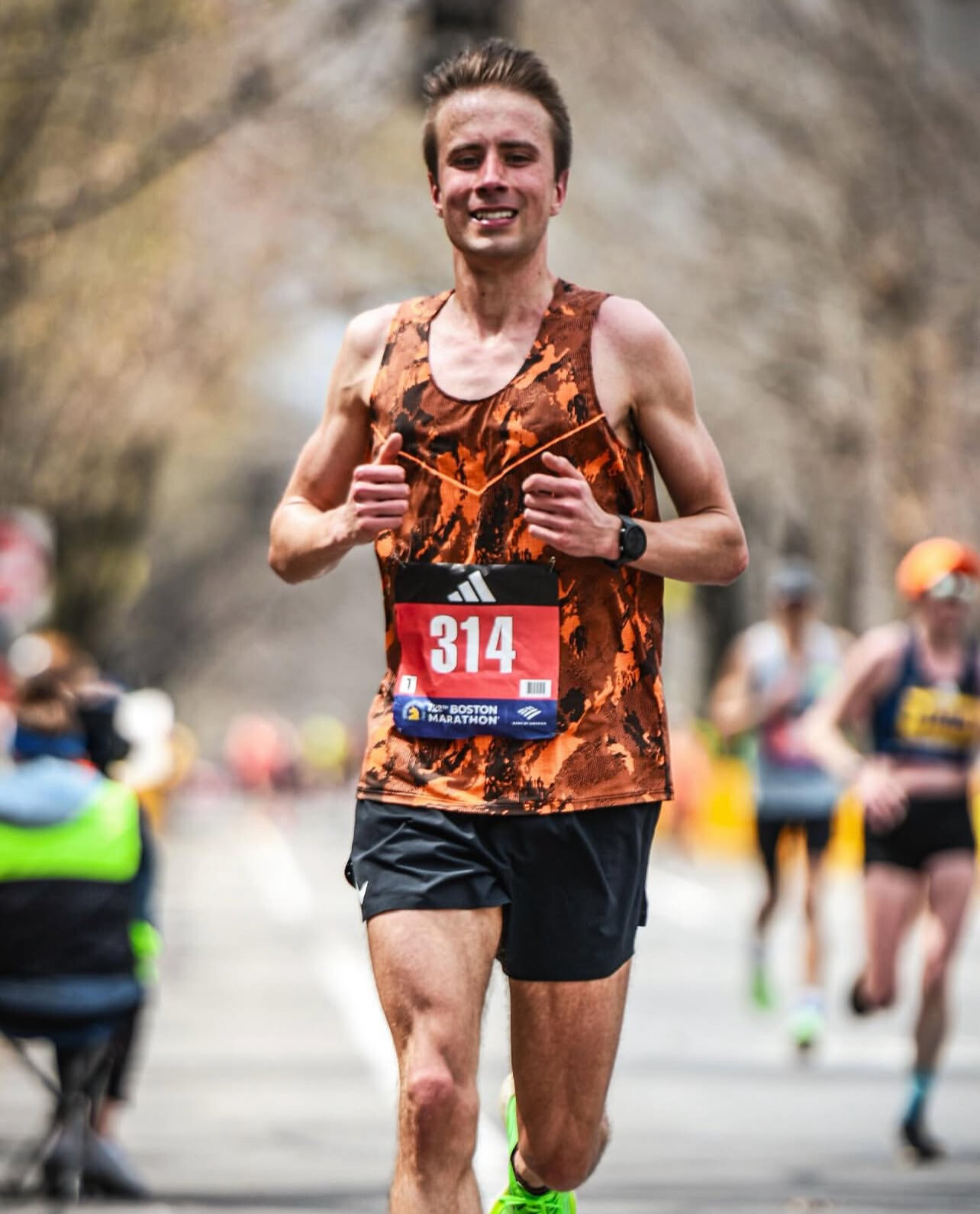
Under the current system, prospective runners must meet stringent time standards based on their age group. For instance, the current qualifying benchmarks for the upcoming race season are as follows:
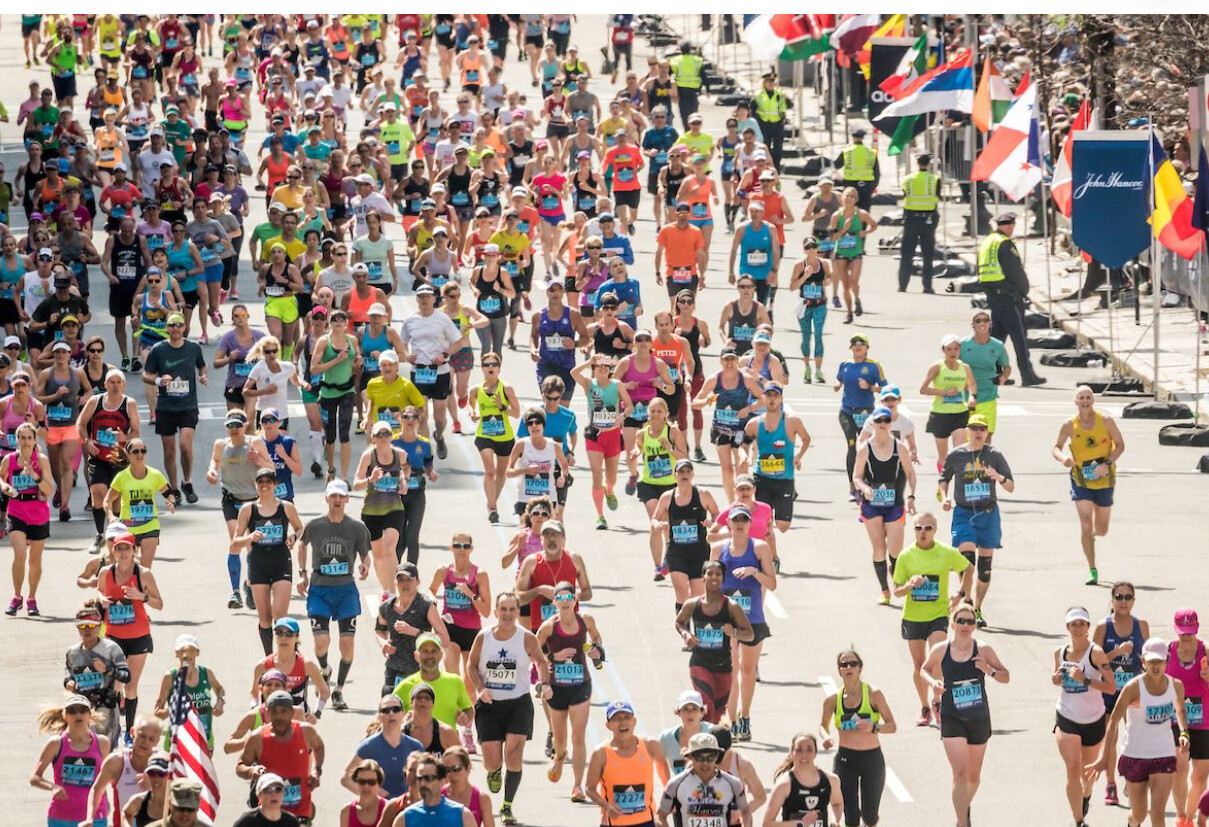
Men
• Ages 18–34: 2 hours 55 minutes
• Ages 35–39: 3 hours 00 minutes
• Ages 40–44: 3 hours 05 minutes
• Ages 45–49: 3 hours 15 minutes
• Ages 50–54: 3 hours 20 minutes
• Ages 55–59: 3 hours 35 minutes
• Ages 60–64: 3 hours 50 minutes
• Ages 65–69: 4 hours 05 minutes
• Ages 70–74: 4 hours 20 minutes
• Ages 75–79: 4 hours 35 minutes
• Ages 80 and over: 4 hours 50 minutes
Women
• Ages 18–34: 3 hours 25 minutes
• Ages 35–39: 3 hours 30 minutes
• Ages 40–44: 3 hours 35 minutes
• Ages 45–49: 3 hours 45 minutes
• Ages 50–54: 3 hours 50 minutes
• Ages 55–59: 4 hours 05 minutes
• Ages 60–64: 4 hours 20 minutes
• Ages 65–69: 4 hours 35 minutes
• Ages 70–74: 4 hours 50 minutes
• Ages 75–79: 5 hours 05 minutes
• Ages 80 and over: 5 hours 20 minutes
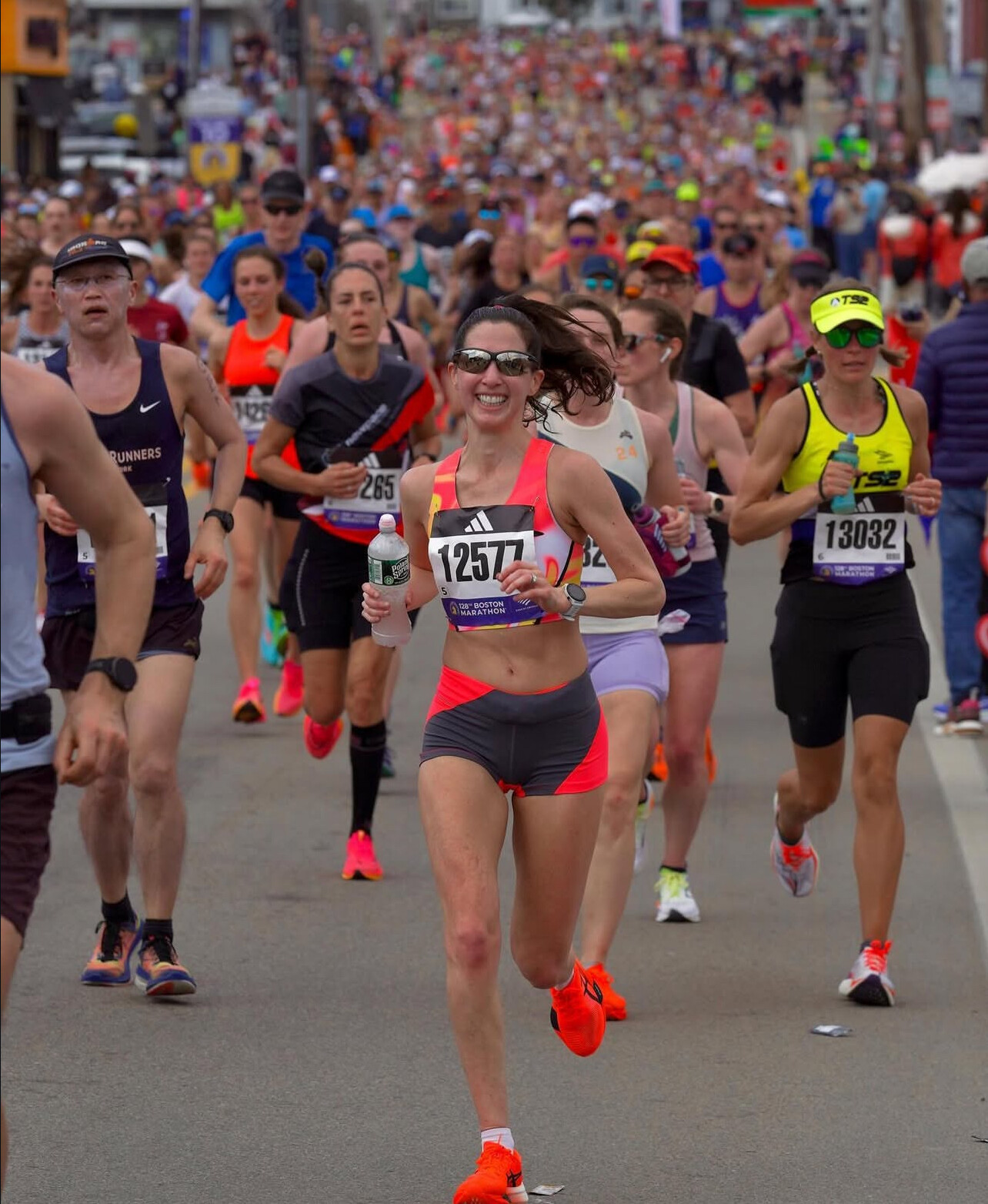
For many runners, these time cutoffs have represented nearly insurmountable hurdles, forcing them to either settle for smaller local races or abandon the dream entirely. With the new open-entry format, the Boston Marathon will no longer serve as an exclusive club for the fastest runners; instead, it will become a celebration of perseverance, community, and the sheer joy of running.
Critics have argued that removing qualifying times might dilute the race’s competitive legacy, while supporters contend that it will invigorate the event by welcoming a richer diversity of participants. The B.A.A. remains confident that this transformative change will not only boost participation but also cement the Boston Marathon’s status as a truly inclusive sporting event.
For runners who have long trained in vain to meet the rigid standards, this decision is a game changer—a symbolic moment that recognizes passion and perseverance over arbitrary numbers. As the running community braces for the upcoming races under this new model, one thing is clear: the Boston Marathon is set to redefine itself, embracing the idea that the spirit of competition can coexist with a commitment to accessibility.
Stay tuned to My Best Runs for further updates and in-depth coverage as we track the unfolding impact of this bold new chapter in marathon history.
by Boris Baron
Login to leave a comment
Boston Marathon
Among the nation’s oldest athletic clubs, the B.A.A. was established in 1887, and, in 1896, more than half of the U.S. Olympic Team at the first modern games was composed of B.A.A. club members. The Olympic Games provided the inspiration for the first Boston Marathon, which culminated the B.A.A. Games on April 19, 1897. John J. McDermott emerged from a...
more...Kirsty Coventry Becomes First Female IOC President in a Controversial Election
In a historic and contentious election, Kirsty Coventry has been elected as the first female and first African president of the International Olympic Committee (IOC). The election, held in Costa Navarino, Greece, saw Coventry secure 49 out of 97 votes in the first round, defeating other high-profile candidates, including Juan Antonio Samaranch Jr. and Lord Sebastian Coe.
Her victory marks a significant milestone in the IOC’s 131-year history, but it has not come without controversy. While she is celebrated as one of the greatest Olympic athletes from Africa, her political ties to Zimbabwe have raised concerns about how she will lead the Olympic movement into the future.
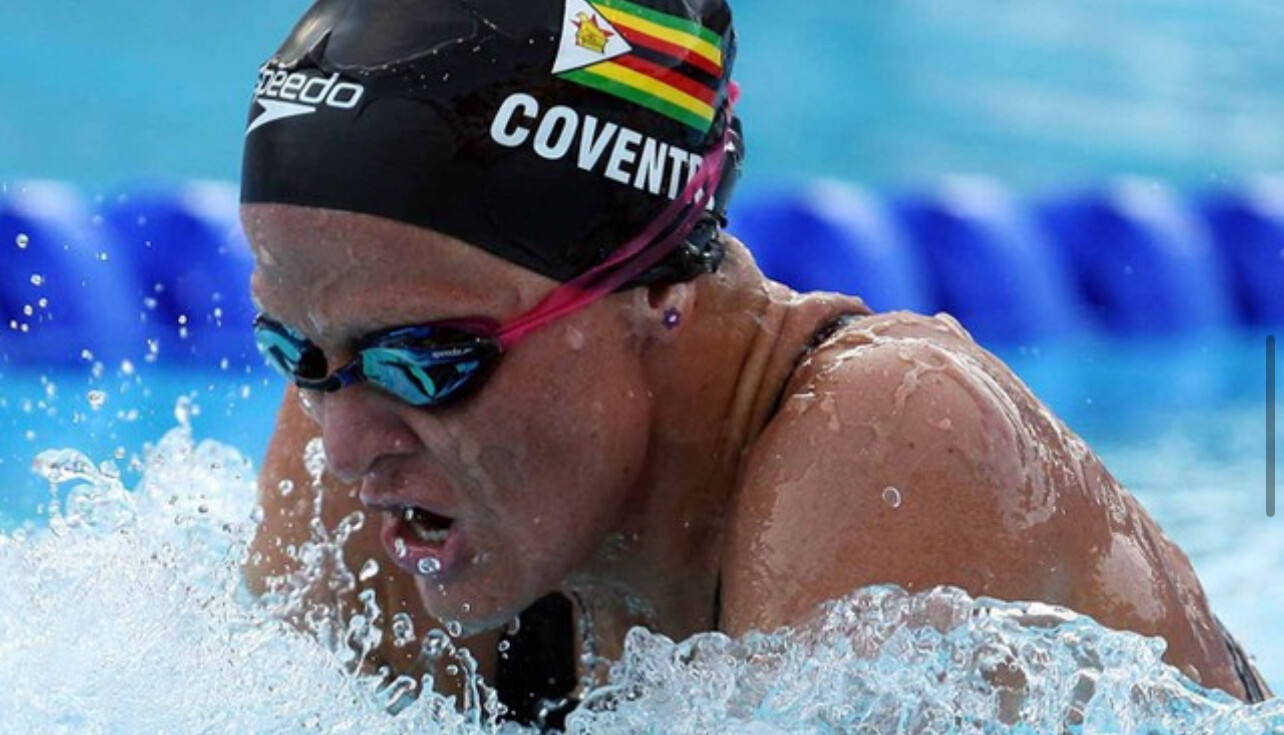
Kirsty Coventry: An Olympic Champion Turned Global Sports Leader
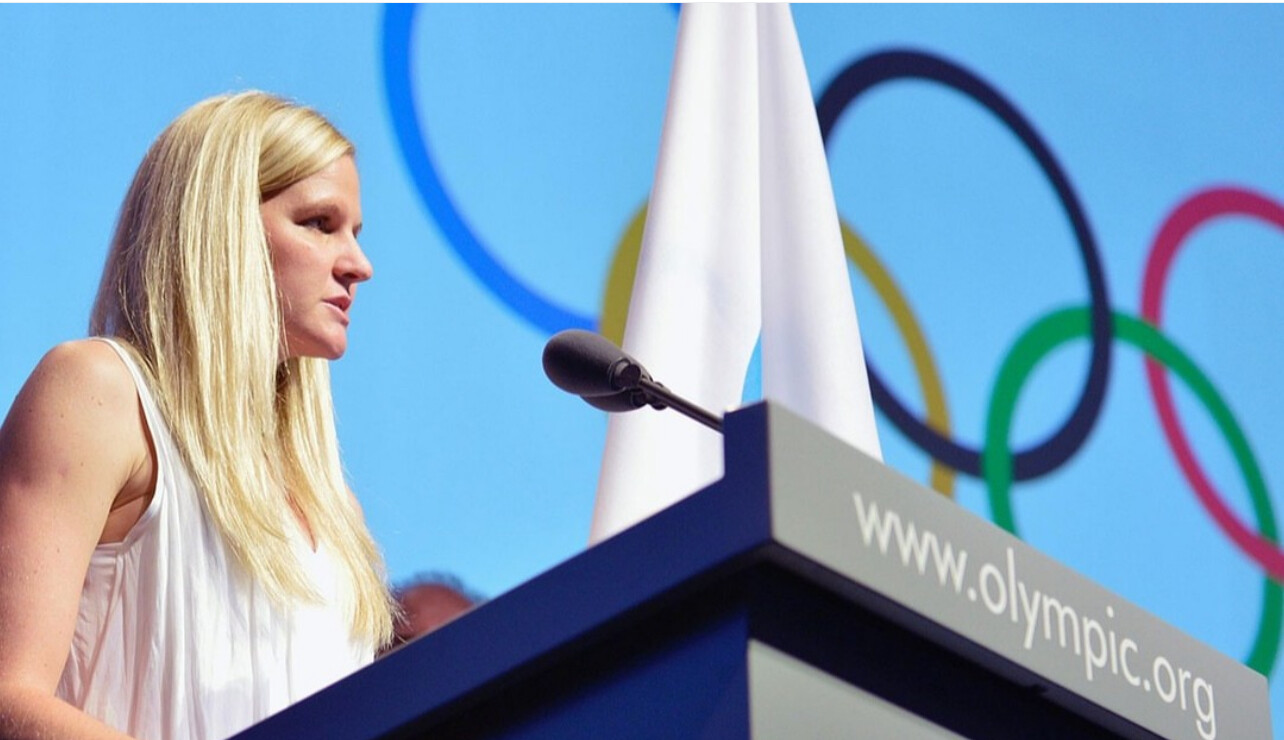
Before stepping into sports administration, Kirsty Coventry was a dominant force in competitive swimming. Born in Zimbabwe, she became one of the greatest backstrokers of all time, earning seven Olympic medals across five Olympic Games.

Her breakthrough moment came at the 2004 Athens Olympics, where she won gold in the 200m backstroke, along with silver and bronze medals in other events. Four years later, at the 2008 Beijing Olympics, she added four more medals to her collection, solidifying her reputation as Africa’s most decorated Olympian.

Beyond her success in the pool, Coventry set multiple world records, won two World Championship titles, and became a role model for young athletes across the African continent. After retiring from competition, she transitioned into sports governance, serving as Chair of the IOC Athletes’ Commission and playing a key role in Olympic policy-making.
However, her political involvement in Zimbabwe—where she served as Minister of Youth, Sport, Arts, and Recreation—has generated criticism. Some view her efforts as beneficial for youth sports development, while others argue that her association with a government accused of human rights violations could impact the IOC’s credibility.
Unexpected Results and IOC Power Struggles
Coventry’s election defied many expectations. Sebastian Coe, the two-time Olympic gold medalistand president of World Athletics, was widely seen as a frontrunner. However, he received only eight votes, a shocking defeat that underscores the complex political dynamics within the IOC.
Coe’s supporters believed his leadership in global athletics and Olympic advocacy would make him the ideal candidate, but the vote suggests that power within the IOC is shifting in new directions. Coventry’s victory signals a desire for a fresh perspective, though questions remain about how she will navigate the challenges ahead.
Challenges Ahead for Coventry’s Leadership
As she prepares to take office on June 23, 2025, Coventry faces several pressing issues that will shape her presidency:
• Financial and Sponsorship Issues – The IOC’s business model is under scrutiny, with shifting audience engagement and declining sponsorship deals requiring new revenue strategies.
• Doping and Fair Play – Strengthening anti-doping policies and restoring trust in fair competition remain major concerns.
• Inclusion and Political Tensions – The debate over transgender athletes, athlete activism, and geopolitical tensions around upcoming Games demand careful navigation.
• Upcoming Olympic Games – With the 2028 Los Angeles Olympics and 2032 Brisbane Games ahead, Coventry must oversee event planning, sustainability efforts, and global participation.
The Future of the IOC Under Coventry
Kirsty Coventry’s election is both a groundbreaking achievement and a contentious decision. As the first woman and first African to lead the world’s most powerful sports organization, she carries the weight of expectation, scrutiny, and Olympic tradition.
Will she modernize the Olympic movement and steer it into a new era of inclusivity and transparency? Or will her political controversies and IOC power struggles overshadow her leadership?
One thing is certain—Coventry’s presidency will shape the future of the Olympic Games in ways never seen before.
For more updates on this developing story and the world of Olympic sports, stay tuned to My Best Runs.
by Boris Baron
Login to leave a comment
LA 2028 Summer Olympics Games
Discover how the Los Angeles Candidature Committee describes their vision for the Games and the legacy they plan to leave behind: For centuries, people have been following the sun to California – to a coastal paradise of beautiful weather, inspiring landscapes and an ocean of possibilities. Since it was first settled, LA – the City of Angels – has built...
more...Who Had the Best Era in Track & Field? A Generational Showdown
Track and field has long been the stage for some of the most electrifying athletic performances in history. Each generation has produced legends who have redefined what is possible in sprinting, distance running, and field events. But which era stands above the rest?
From the Silent Generation pioneers to the Gen Z record-breakers, every period has contributed to the evolution of the sport. Let’s break down each era’s greatest stars and their lasting impact on track and field.
Gen Z (Born 1997 - 2012): The Future of Track & Field
The newest generation of elite athletes is already making waves on the world stage. With the benefit of cutting-edge training, nutrition, and recovery techniques, these young stars are smashing records at a rapid pace.
Notable Sprinters & Field Athletes:
• Sydney McLaughlin-Levrone (USA) – 400m hurdles world record holder and Olympic champion
• Mondo Duplantis (Sweden) – Pole vault world record holder
• Erriyon Knighton (USA) – One of the fastest teenagers ever in the 200m
Notable Distance Runners:
• Jakob Ingebrigtsen (Norway) – Olympic 1500m champion, European mile record holder
• Joshua Cheptegei (Uganda) – 5000m and 10,000m world record holder
• Jacob Kiplimo (Uganda) – Half marathon world record holder (57:31)
• Gudaf Tsegay (Ethiopia) – World champion in the 1500m, dominant in middle distances
Gen Z athletes are not only breaking records but also shaping the future of the sport through their influence on social media and global visibility. With their combination of speed, endurance, and access to modern sports science, they may soon surpass all who came before them.
Defining Traits: Explosive, record-breaking, tech-savvy
Millennials (Born 1981 - 1996): The Superstars of the Modern Era
No discussion of dominant track and field generations is complete without mentioning Usain Bolt. The Jamaican sprinting legend captured the world’s attention with his charisma and untouchable world records.
Notable Sprinters:
• Usain Bolt (Jamaica) – Fastest man in history (100m: 9.58, 200m: 19.19)
• Allyson Felix (USA) – Most decorated female Olympian in track history
• Shelly-Ann Fraser-Pryce (Jamaica) – One of the most dominant sprinters of all time
Notable Distance Runners:
• Eliud Kipchoge (Kenya) – The greatest marathoner of all time, first to break two hours in a marathon
• Mo Farah (UK) – Dominated the 5000m and 10,000m at two Olympic Games
• Genzebe Dibaba (Ethiopia) – 1500m world record holder
• Ruth Chepngetich (Kenya) – First woman to break the 2:10 barrier in the marathon, setting a world record of 2:09:56 at the 2024 Chicago Marathon
Millennials excelled across all track and field disciplines. They ushered in an era of professional distance running dominance, with African runners setting standards in middle and long distances. Meanwhile, Kipchoge’s sub-2-hour marathon attempt was a historic milestone in human endurance.
Defining Traits: Charismatic, dominant, endurance revolutionaries
Gen X (Born 1965 - 1980): The Tough and Versatile Competitors
Gen X athletes were the bridge between the amateur days of track and the fully professional era. They pushed the sport forward with fierce rivalries and new records, while also seeing the globalization of track and field.
Notable Sprinters:
• Maurice Greene (USA) – Former world record holder in the 100m (9.79)
• Marion Jones (USA) – One of the most dominant sprinters of the late ‘90s
Notable Distance Runners:
• Haile Gebrselassie (Ethiopia) – Olympic and world champion, former marathon world record holder
• Paul Tergat (Kenya) – Pioneered marathon running dominance for Kenya
• Tegla Loroupe (Kenya) – First African woman to hold the marathon world record
This era marked a golden age for distance running, with Gebrselassie and Tergat setting the stage for the marathon revolution that would come in the next generation. With increased sponsorships, the road racing circuit became more competitive, and Kenyan and Ethiopian dominance solidified.
Defining Traits: Tough, globalized, long-distance pioneers
Baby Boomers (Born 1946 - 1964): The Golden Age of Track & Field
The Baby Boomers took track and field into the modern Olympic era, producing some of the most iconic figures in the sport’s history.
Notable Sprinters:
• Carl Lewis (USA) – Nine-time Olympic gold medalist across sprints and long jump
• Florence Griffith-Joyner (USA) – 100m (10.49) and 200m (21.34) world record holder
Notable Distance Runners:
• Sebastian Coe (UK) – 800m and 1500m Olympic champion, middle-distance legend
• Steve Prefontaine (USA) – One of the most influential distance runners in history
• Miruts Yifter (Ethiopia) – 5000m and 10,000m Olympic champion
This era brought middle and long-distance running into the mainstream, with rivalries like Coe vs. Ovett and Prefontaine vs. the world captivating fans. The Baby Boomers were the first generation of professional-level training and saw athletes truly dedicated to their craft year-round.
Defining Traits: Bold, revolutionary, multi-talented
Silent Generation (Born 1928 - 1945): The Pioneers of Kenya’s Dominance
This generation laid the foundation for modern track and field, producing legends whose influence still resonates today.
Notable Distance Runners:
• Kip Keino (Kenya) – The pioneer of Kenya’s dominance in distance running, winning Olympic gold in the 1500m (1968) and 3000m steeplechase (1972)
• Emil Zátopek (Czechoslovakia) – Triple gold in 5000m, 10,000m, and marathon at the 1952 Helsinki Olympics
• Paavo Nurmi (Finland) – Nine-time Olympic gold medalist in long-distance events
Kip Keino’s triumph over Jim Ryun in the 1500m final at the 1968 Mexico City Olympics is considered one of the greatest upsets in Olympic history. Competing at high altitude, Keino used a fast early pace to break Ryun, ushering in an era of Kenyan middle-distance dominance that continues today.
Defining Traits: Groundbreaking, resilient, visionary
Which Generation Had the Greatest Impact?
Each generation of track and field athletes has contributed to the sport’s evolution in unique ways:
• Millennials brought global superstardom (Bolt, Felix, Fraser-Pryce, Kipchoge, Chepngetich)
• Gen X athletes were fierce competitors in a rapidly changing sport (Greene, Gebrselassie, Tergat)
• The Baby Boomers set records that still stand today (Carl Lewis, Flo Jo, Coe, Prefontaine)
• The Silent Generation laid the foundation for modern track and field (Owens, Zátopek, Kip Keino)
• Gen Z is already breaking records and shaping the future of the sport (McLaughlin-Levrone, Ingebrigtsen, Cheptegei)
While it’s hard to declare one era the best, one thing is certain: the sport of track and field continues to evolve, with each generation pushing the limits of human performance.
Which generation do you think is the greatest? Let us know in the comments!
by Boris Baron
Login to leave a comment
Sebastian Coe Advocates for Olympic Rescheduling and Tackles Online Abuse
In light of escalating global temperatures, Lord Sebastian Coe, President of World Athletics and a prominent candidate for the International Olympic Committee (IOC) presidency, has proposed a reevaluation of the traditional summer scheduling of the Olympic Games.
He suggests that, by 2040, it may be necessary to adjust the global sports calendar to accommodate these climatic shifts. Drawing parallels to events like the 2022 FIFA World Cup in Qatar, which was held successfully in November and December to avoid extreme heat, Coe emphasizes the need for flexibility in scheduling major sporting events. He questions the feasibility of hosting events like the World Athletics Championships in cities such as Budapest or Paris during August, given the rising temperatures.
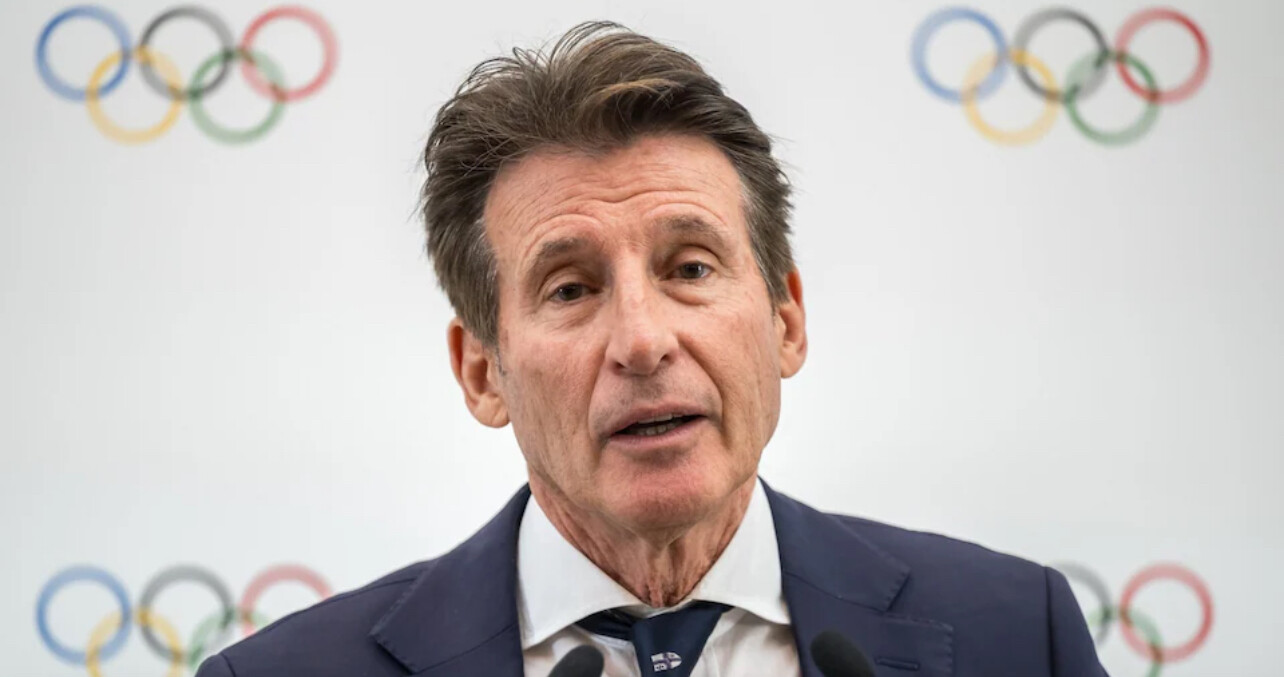
In addition to climate concerns, Coe has expressed a strong commitment to combating online abuse directed at athletes. He has labeled the perpetrators of such abuse as “pond life” and underscored the necessity for more robust measures to protect athletes, especially women, from harassment on social media platforms.

Highlighting incidents involving athletes like Emma Raducanu and Eilish McColgan, Coe has pledged to engage with tech industry leaders, including Elon Musk and Mark Zuckerberg, to enhance safeguards against online abuse. He also proposes the establishment of a task force dedicated to protecting female athletes from gender-based violence.

These initiatives reflect Coe’s broader vision for the future of global sports, emphasizing adaptability in the face of environmental challenges and a proactive stance against the misuse of digital platforms to harm athletes.
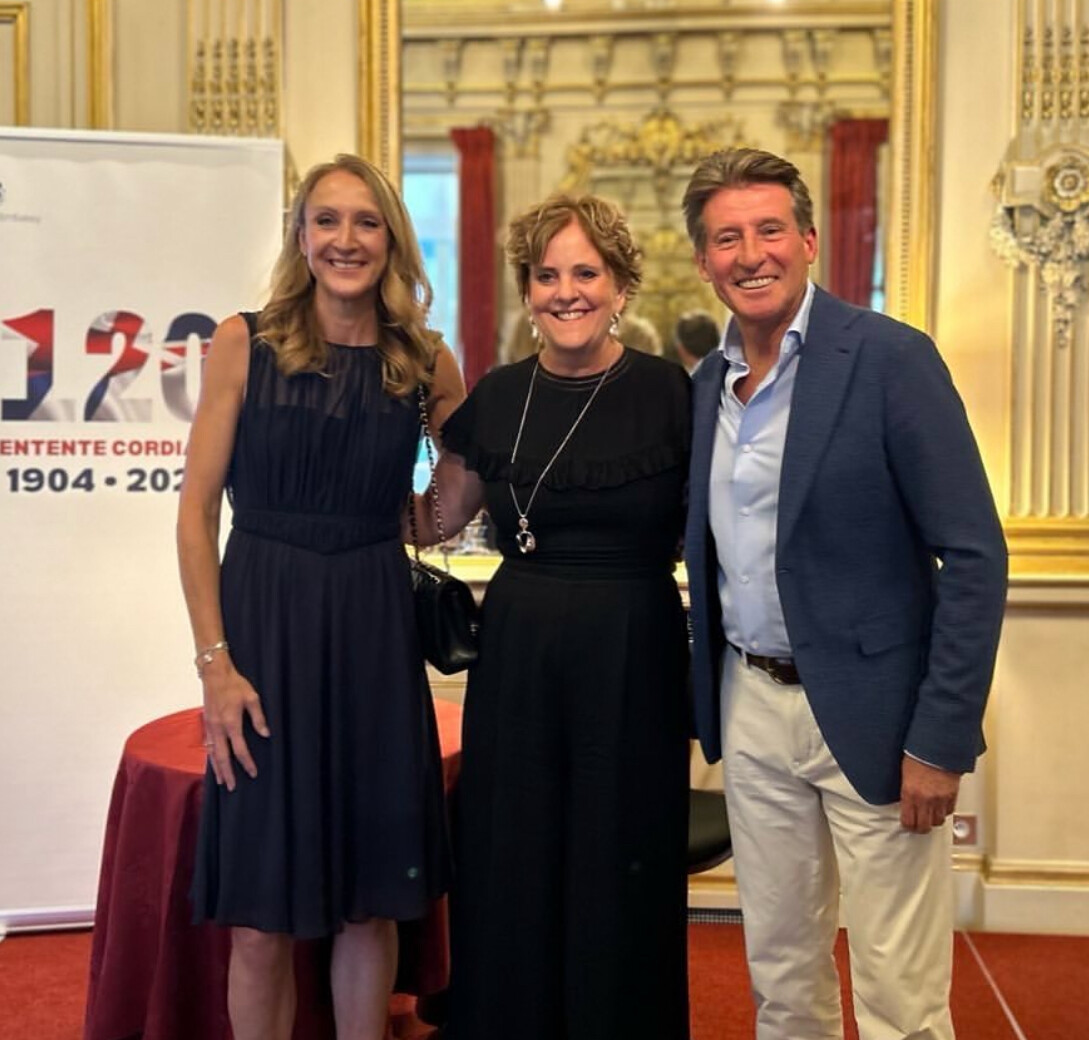
Upcoming Summer Olympics
• 2028: Los Angeles, United States, from July 14 to July 30, 2028.
• 2032: Brisbane, Australia, from July 23 to August 8, 2032.
These dates and locations have been confirmed by the International Olympic Committee.
Additionally, Coe has proposed bold ideas, such as potentially moving some indoor sports from the Summer Olympics to the Winter Games, to modernize the event and address challenges posed by climate change.
While these proposals are not directed specifically at the Los Angeles 2028 or Brisbane 2032 Games, they reflect Coe’s broader vision for the future of the Olympics.
Login to leave a comment
Commonwealth Games 2026: Mile Race Returns and Mixed 4x400m Relay Introduced
The Glasgow 2026 Commonwealth Games will mark a historic shift in athletics, with the reintroduction of the mile race, replacing the traditional 1500m event, and the addition of the mixed 4x400m relay. The Games will take place from July 23 to August 2, 2026, featuring a 10-sport programme across four venues, with Scotstoun Stadium hosting the athletics competitions.
The Return of the Commonwealth Mile

For the first time since 1966, the mile race will make its return, paying tribute to the legendary "Miracle Mile" at the 1954 Vancouver Commonwealth Games, where England’s Roger Bannister and Australia’s John Landy—the first two athletes to break the four-minute barrier—battled head-to-head in one of the most iconic races in history.
World Athletics President Sebastian Coe welcomed the decision, emphasizing the mile’s significance within the Commonwealth:
"The one mile is the quintessential Commonwealth athletics event whose return to the Games in Glasgow 2026 I very much welcome. The mile is easy to understand—four laps of the track—and remains a standard everyday measurement across the Commonwealth."
He further highlighted the race’s rich legacy:
"From 1930 through to 1966, the mile was the blue-riband event of each Games. Its place in international sports lore was secured when Sir Roger Bannister broke the four-minute barrier in May 1954. The magic of the mile continues to resonate with sports fans, and a ticket to watch its Commonwealth final will be one of the must-have seats in Glasgow next year."
New Additions: Mixed 4x400m Relay and Expanded Para Athletics Programme
Alongside the return of the mile, the mixed 4x400m relay will be introduced, further enhancing the athletics programme. Additionally, for the first time in Commonwealth Games history, para athletes will compete across all three major disciplines—jumping, throwing, and track events—cementing a new era of inclusivity in the sport.
The full event lineup is available on the Glasgow 2026 Commonwealth Games website, showcasing a programme designed to honor tradition while embracing innovation.
by Boris Baron
Login to leave a comment
The Commonwealth Games
The Commonwealth Games are coming to Victoria - bringing an action packed sports program to our regional cities and delivering a long-term legacy for our future. From 17 to 29 March 2026, Geelong, Bendigo, Ballarat, Gippsland and Shepparton will be on the world stage, attracting millions of viewers and creating thousands of jobs. The multi-city model will...
more...The Indian Running Sensation Making Strides Without Shoes
If you have not heard of Barefoot Bobby yet, it's time to take notice. The 58-year-old runner from Bangalore, India, has captured the imagination of the running world with his unconventional yet inspiring approach to the sport of running entirely barefoot. Bobby's remarkable journey reached a new milestone last Sunday at the 2024 Mumbai Marathon, where he clocked one of the fastest times of his career, finishing in 3:11:47. His incredible performance earned him third place in the competitive men's 55-59 age group.
Bobby, whose real name is Ramesh Patel, began running barefoot nearly 30 years ago, initially as a practical choice due to a lack of access to proper running shoes. Over time, what started as a necessity became his signature style. Running without shoes, Bobby says, keeps him connected to the ground and allows him to feel every stride more naturally.
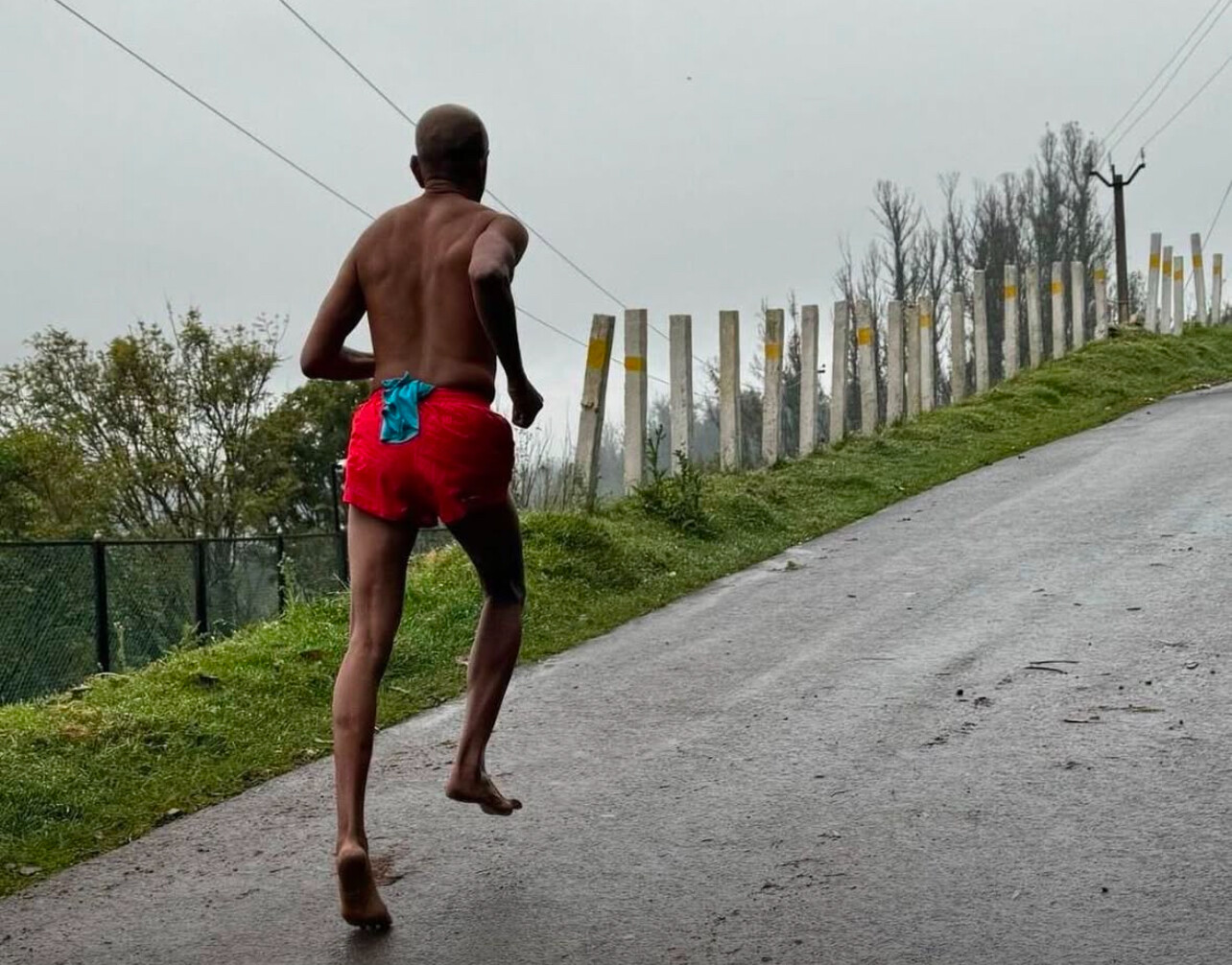
At the Mumbai Marathon, Bobby's effortless stride and unyielding pace drew cheers from spectators along the route. His 3:11:47 finish wasn’t just a personal achievement; it was a testament to his resilience and the strength of his training, which includes long runs on Bangalore's rugged trails.
"I've always believed that running barefoot is a way to honor the simplicity of the sport," Bobby shared after the race. "The road doesn't care if you wear the latest gear or go barefoot. What matters is your passion and dedication."
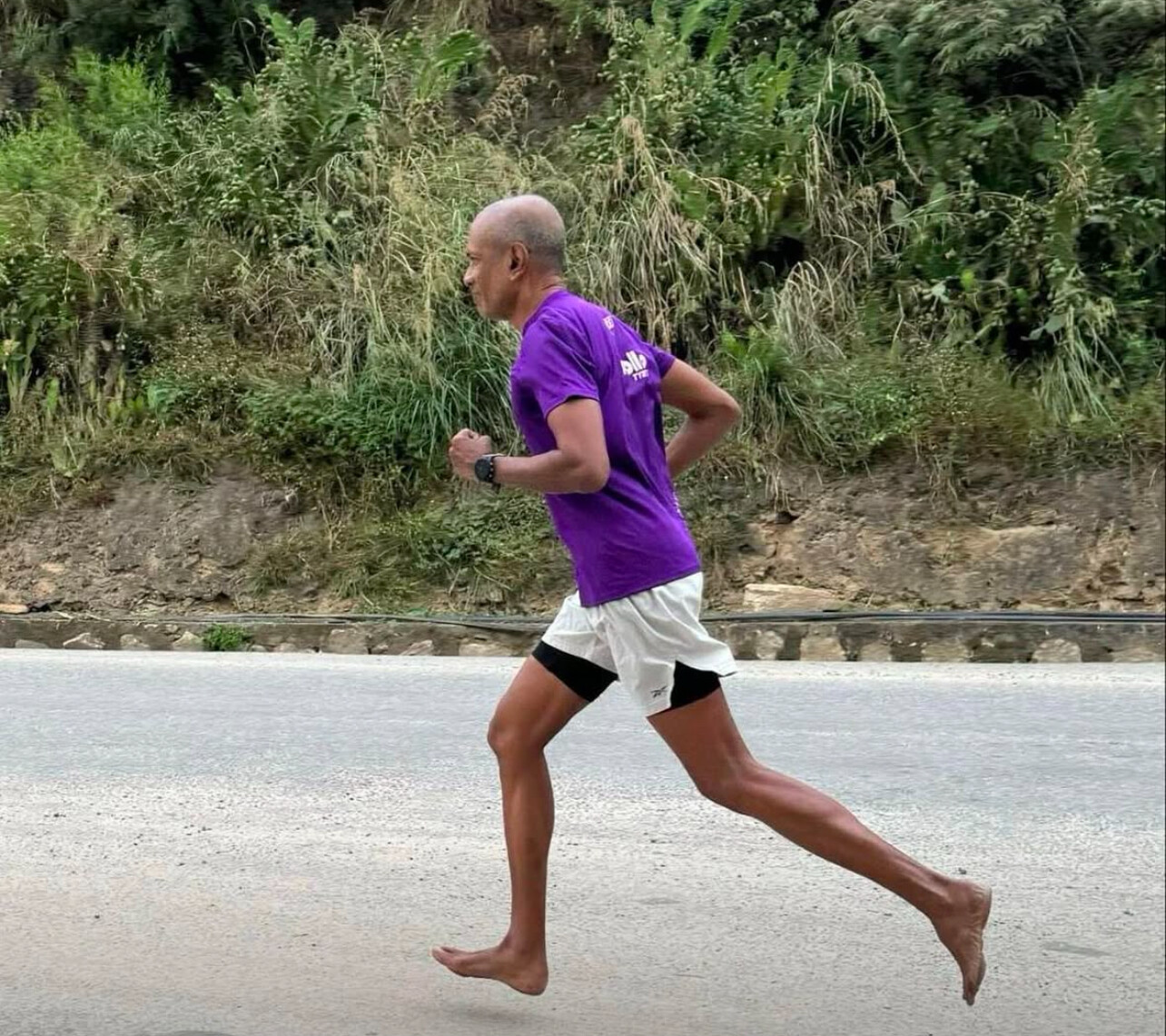
Bobby's story has inspired runners worldwide, proving that innovation and tradition can coexist on the marathon course. At 58, he shows no signs of slowing down, and his sights are set on breaking the 3-hour barrier in the coming years.
Barefoot Bobby's journey reminds us all that running is about more than just physical performance is about heart, determination, and embracing your unique path.
by Boris Baron
Login to leave a comment
World Athletics president pushing cross country for 2030 Olympics
It’s no secret that World Athletics president Seb Coe has ambitions to take over the International Olympic Committee (IOC) president position in the organization’s 2025 election. He looks to succeed Thomas Bach, who has served as president of the IOC for 12 years. Coe’s presidential manifesto pledges a clean and fair Olympics, and potentially the addition of some traditional summer and fall sports to the Winter program—including cross country.
During Coe’s year-end meeting with the media, he alluded to the need for the Winter Olympics to become “more accessible and open to new ideas.” The highest participation for the Winter Games was 93 countries at the 2018 Games in PyeongChang, South Korea, whereas the Paris 2024 Summer Games saw athletes from over 200 nations.

To expand the global audience, Coe believes the addition of fall or indoor sports into the Winter program could attract athletes and viewers from regions of the world that might not have snow. Cross country (running) and cyclo-cross (cycling) are at the forefront of this push, offering the opportunity to expand the Winter Games without straying too far from its profile or mission.
Cross country has faltered on the World Athletics calendar since the pandemic. The 2023 championships held in Bathurst, Australia, were too late in the season (February, two months after the cross-country season), which made it a lengthy commitment of time and travel for any athlete. The 2024 meet, originally scheduled for Croatia on Feb. 10-11, was reassigned to Serbia on March 30 when it emerged that Croatia was not ready to host. Although Serbia did all it could on six months’ notice, the event was heavily criticized for its course, spectator-friendly experience, and timing, as it was held (again) well after the cross-country season.
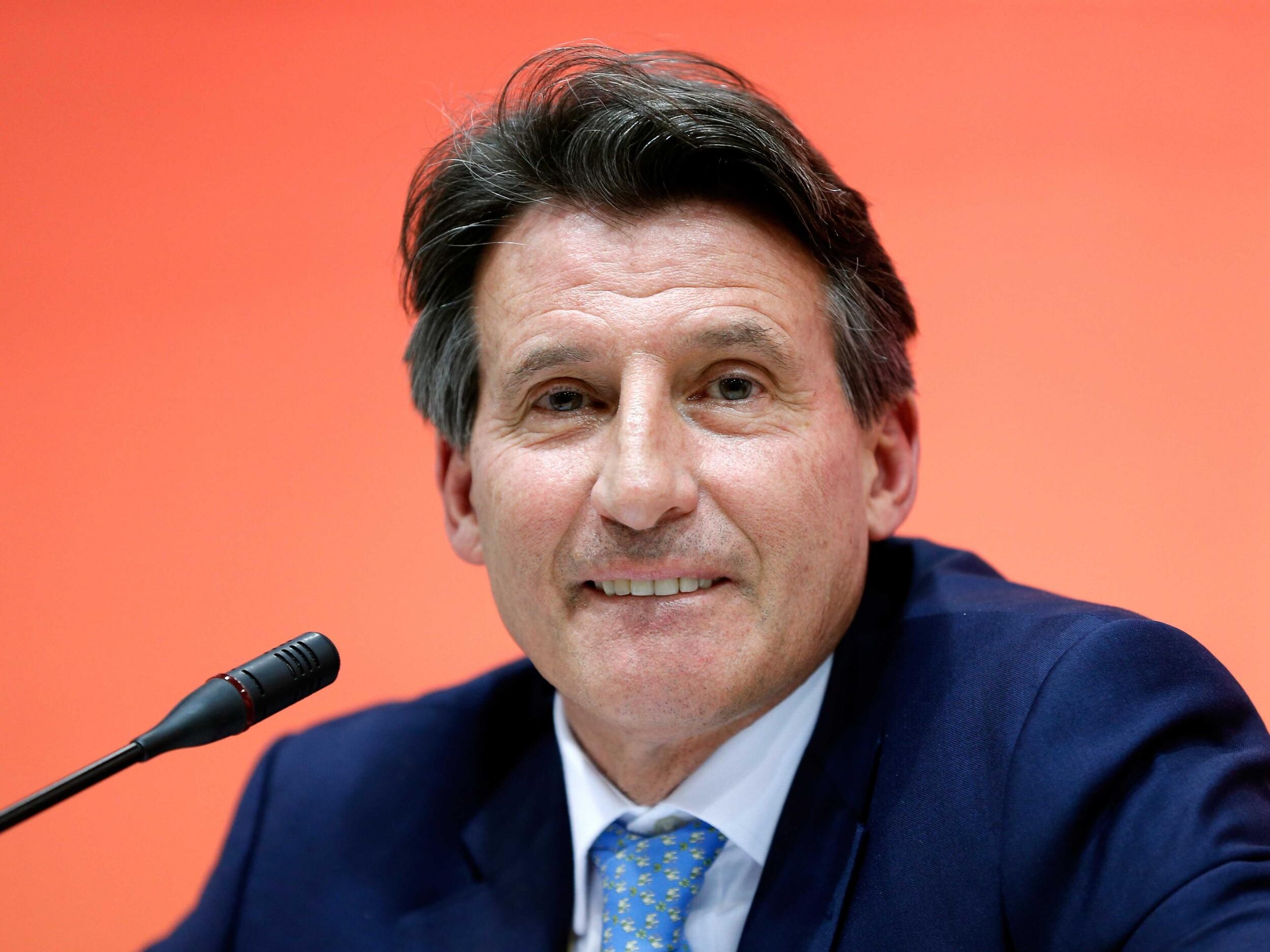
Coe has made it clear, on multiple occasions, that he believes there is a place for cross country in the professional running calendar, but there needs to be a way to make it more attractive to fans. “I’m a great adherent of cross country, and I think it’s a really important part of the endurance paradigm,” said Coe. “But it needs help… it needs space.”
The program for the 2026 Winter Olympics in Milan-Cortina D’Ampezzo, Italy is already set, but Coe is targeting the inclusion of the two sports by the 2030 and 2034 Olympics, which were awarded to the French Alps and Salt Lake City earlier this year.
If Coe is elected as the next president of the IOC in March 2025, he will vacate his current position as the head of World Athletics. The 68-year-old has served as World Athletics president since 2015 and was re-elected to a third (and final) four-year term in 2023. Coe was a two-time Olympic gold medalist during his own career and delivered the immensely popular London Olympics as chairman of the local organizing committee.
by Marley Dickinson
Login to leave a comment
World Athletics Council commits to action against gender-based violence
Gender based violence is on the rise and the governing body is keen to ensure that it is rooted out in the sport
The World Athletics Council has expressed its commitment to taking action against gender-based violence by making a series of other decisions ranging from competition updates to further driving the organisation’s innovation agenda during the 236th World Athletics Council Meeting in Monaco on December 3-4.
Building on the extensive work done by World Athletics to expand safeguarding measures in the sport, the World Athletics Council – working alongside the Athletes' Commission and Gender Leadership Taskforce – has identified campaigning against gender-based violence as a priority.

Kenya is one of the counties that is keen to tame the rising tide of gender-based violence and have conducted a series of nationwide forums aimed at raising awreness.
One in three women worldwide face violence in their lifetime, with recent high-profile cases in Africa sending shockwaves through the sport. Gender-based violence is a global issue, with all 18 members of the Athletes' Commission – from 18 different countries across all six areas – highlighting the impact and extent of gender-based violence in their regions.

While the Athletes' Commission recognises that the sport may not have the power to implement policy due to lack of jurisdiction outside of the sporting landscape, World Athletics can use the space in which it does have jurisdiction to drive change through three main areas: raising awareness, education, and lobbying for change.
Commenting on this clear mandate, World Athletics President Sebastian Coe said: "I am particularly encouraged by our athletes' commitment to address the subject of gender-based violence as a priority and the discussions on the role that World Athletics can play to address it.
“The fact that both our Athletes’ Commission and our Gender Leadership Taskforce have put the critical item on their agendas fills me with confidence in our stakeholders' understanding that we have a responsibility that goes far beyond what is happening on the field of play. I look forward to working together with them on supporting our female athletes and to enshrine the results of this work in our safeguarding policies.”
The Athletes’ Commission would like World Athletics to take a leadership role, for practical ideas that can help across the globe, and recommends that World Athletics explores partnerships with relevant organisations to combine forces and push for change.
by Evans Ousuru
Login to leave a comment
Hassan and Tebogo named World Athletes of the Year
Olympic champions Sifan Hassan and Letsile Tebogo have been announced as World Athletes of the Year at the World Athletics Awards 2024 in Monaco.
Following a vote by fans, Hassan and Tebogo received top honors on an evening that saw six athletes crowned in three categories – track, field and out of stadium – before the overall two winners were revealed.
Tebogo was confirmed as men’s track athlete of the year, with Sydney McLaughlin-Levrone receiving the women’s honour. Hassan claimed the women’s out of stadium crown and Tamirat Tola the men’s, while Mondo Duplantis and Yaroslava Mahuchikh were named field athletes of the year.
This year’s Rising Stars were also celebrated, with Sembo Almayew and Mattia Furlani receiving recognition.
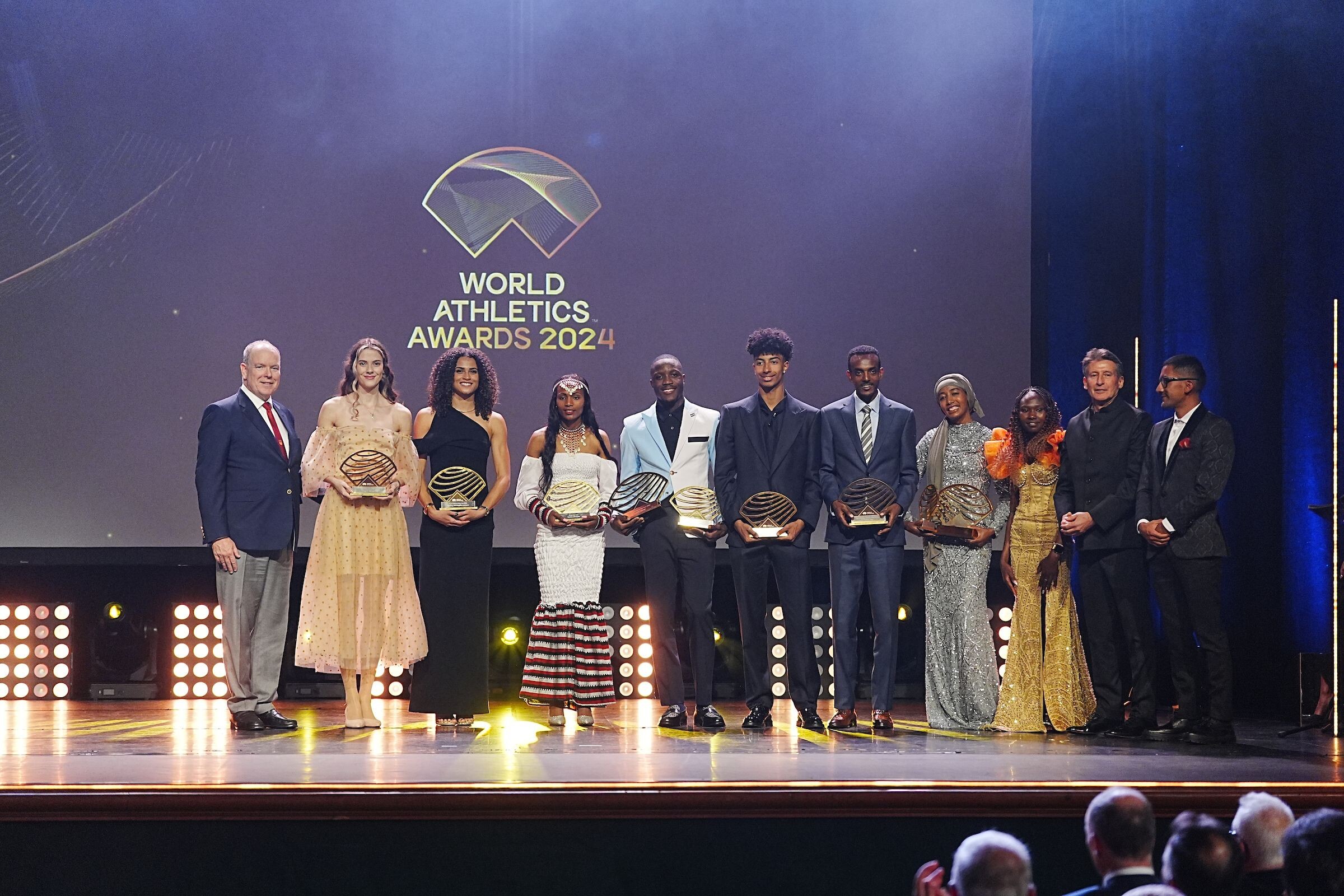
World Athletes of the Year for 2024
Women’s World Athlete of the Year: Sifan Hassan (NED)Men’s World Athlete of the Year: Letsile Tebogo (BOT)
Women’s track: Sydney McLaughlin-Levrone (USA)Women’s field: Yaroslava Mahuchikh (UKR)Women’s out of stadium: Sifan Hassan (NED)Men’s track: Letsile Tebogo (BOT)Men’s field: Mondo Duplantis (SWE)Men’s out of stadium: Tamirat Tola (ETH)

Women’s Rising Star: Sembo Almayew (ETH)Men’s Rising Star: Mattia Furlani (ITA)
“At the end of what has been a stellar year for athletics, we are delighted to reveal our list of World Athletes of the Year – both in their respective disciplines and overall,” said World Athletics President Sebastian Coe. “This group of athletes represents the very best of our sport and has this year redefined what is possible in terms of athletic performance.
“Our 2024 cohort set new standards in heights, speed and distance, including six world records and a host of Olympic and national records between them.
“I congratulate all our award winners, and all of the athletes nominated for these honors, and I thank them for inspiring us all with their performances this year.”
World Athletes of the Year Hassan and Tebogo both won gold and claimed multiple medals at the Paris 2024 Olympic Games.
Dutch star Hassan’s medal treble in Paris was capped by her winning the final athletics gold medal of the Games with her triumph in the marathon in an Olympic record of 2:22:55. That performance came just 37 hours after Hassan claimed bronze in the 10,000m, and six days after her first medal in the French capital – also bronze – in the 5000m.
As a result, she became the first woman to win medals in the 5000m, 10,000m and marathon at the same Games, and the first athlete since Emil Zatopek, who won all three men’s titles in Helsinki in 1952.
Tebogo also made history in Paris when he won the 200m, as he claimed a first ever Olympic gold medal in any sport for Botswana. He ran an African record of 19.46 – a time that moved him to fifth on the world all-time list – and that performance followed his sixth-place finish in the 100m final. He went on to form part of Botswana’s silver medal-winning men’s 4x400m team.
He dipped under 20 seconds for 200m a total of nine times in 2024, with those performances topped by his Olympic title-winning mark which remained the fastest of the year.
His fellow track athlete of the year, McLaughlin-Levrone, improved her own world 400m hurdles record twice, to 50.65 and 50.37, and claimed Olympic gold in that event as well as in the 4x400m. Tola, who joined Hassan in being named out of stadium athlete of the year, won the Olympic marathon title in Paris in an Olympic record.
World records were set by both field athletes of the year. Mahuchikh cleared 2.10m to improve the world high jump record before winning Olympic gold, while Duplantis revised his own world pole vault record three times, eventually taking it to 6.26m, and won the Olympic title.
"Thank you to the fans, to everybody who voted," said Hassan, who was in Monaco to receive her two awards. "I never thought I was going to win this one. This year was crazy. It’s not only me – all the athletes have been amazing. I’m really grateful. What more can I say?"
Standing alongside Hassan on the stage at the Theatre Princesse Grace, Tebogo said: "It feels amazing to know that the fans are always there for us athletes. It was a great year.
"This means a lot," he added. "It’s not just about the team that is around you, there are a lot of fans out there that really want us to win something great for the continent. It was a real surprise to hear my name because I didn’t expect this."
Almayew and Furlani named Rising Stars of 2024
Not only did Sembo Almayew and Mattia Furlani achieve great things as U20 athletes in 2024, they both also secured success on the senior stage.
Almayew finished fifth in the 3000m steeplechase final at the Paris Olympics, going close to her own national U20 record with her 9:00.83 performance, before she travelled to Lima where she won the world U20 title, setting a championship record in the process. With that win, the 19-year-old became the first ever Ethiopian world U20 women’s steeplechase champion.
Furlani improved the world U20 long jump record to 8.38m at the European Championships on home soil in Rome to secure silver, and he won two more senior major medals at the World Indoor Championships, where he got another silver, and the Olympic Games, where he claimed bronze.
In Glasgow – at the age of 19 years and 24 days – Furlani became the youngest athlete ever to win a world indoor medal in the horizontal jumps.
Knight wins President’s Award
The winner of the President’s Award was also announced in Monaco on Sunday (1), with Nike co-founder Phil Knight receiving the honour in recognition of his constant inspiring support for athletics and the development of the sport.
The President's Award, first awarded in 2016, recognises and honours exceptional service to athletics. Past winners of the award include the Ukrainian Athletics Association, British journalist Vikki Orvice, Swiss meeting director Andreas Brugger, Jamaican sprint superstar Usain Bolt, the Abbott World Marathon Majors, and 1968 men’s 200m medallists Tommie Smith, Peter Norman and John Carlos for their iconic moment on the podium in Mexico.
“Phil Knight’s passion for athletics is pretty much lifelong,” said Coe. “He developed an almost father-son relationship with his coach, the legendary Bill Bowerman, whose training approach was a departure from the orthodoxies of the day and who not only guided Knight’s career on the track but became a central figure when Phil took his first tentative steps in the running shoe business that became the dominant global force Nike.
“His love of athletics runs through Nike. It is a business created and driven by runners, with Phil never afraid to be the front runner.”
Knight said: “Thank you, Seb Coe, for the ultimate honour of the President’s Award, given by World Athletics. I am in great company, with Tommie Smith and John Carlos, and Usain Bolt. Obviously, I didn’t run as fast as those guys, but I am in such high company that I am thrilled by the award. Track and field has always been an important part of Nike – it has always been a central part of who Nike is.
“I do think running will continue to grow. Not only does Seb and his team do a great job promoting the sport, but it is a sport that not only is enjoyable, but it is probably the best fitness activity you can do. So, for me to win this honour, it is very meaningful.”
During the ceremony, a moment was taken to remember last year’s men’s out of stadium athlete of the year Kelvin Kiptum, the marathon world record-holder who died in a road traffic accident in February, as well as other figures from the sport who have passed away in 2024.
by World Athletics
Login to leave a comment
World Athletics considers launching World Treadmill Championships
With an increasing number of virtual events and races taking place in the world of sports, athletics might follow suit. According to the Daily Mail, in an effort to grow the virtual running scene and appeal to the millions of daily gym treadmill runners, World Athletics has proposed a World Treadmill Championships.
In the past few years, integrating tech and indoor exercise equipment into sports has become increasingly popular. Cycling, rowing and triathlon have already seen success in their global championships that take place using indoor exercise equipment to simulate virtual races.
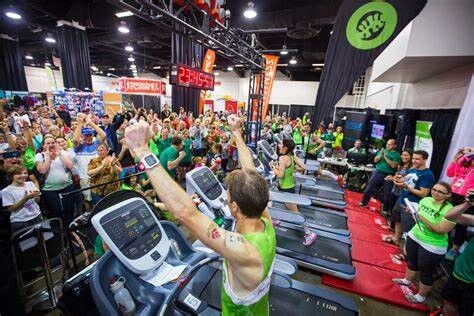
World Athletics also hopes to embrace these technological advancements and aim to attract new audiences. “You might have to watch this space, but ultimately, why not?’ World Athletics President Sebastian Coe told Mail Sport. “We have got to take our sport to where people are. That is crucial. Whether it is through virtual, whether it is through Esports, whether it is through treadmill, these are all the things that we want to really explore.”
Since the running boom–the exponential growth in running’s popularity since the COVID-19 pandemic–World Athletics recognizes that now is the perfect time to increase the opportunities for this audience. World Athletics CEO Jon Ridgeon revealed that the governing body is working with a tech partner to enter and develop the virtual running scene. Fans speculate that the partner might be Zwift, an online cycling and running program that already hosts the UCI Cycling Esports World Championships.

The announcement has received backlash on social media. “Our Global Governing body is really trying to make Wii sports championships. What are we doing man?” American Olympic hurdler Freddie Crittenden commented on Athletics Weekly’s Instagram post. Some users argue that the sport would be more popular if made more accessible for viewers, while others comment that the announcement feels like an April Fool’s joke.
In fact, the concept was originally proposed by Canadian Running’s own Marley Dickinson last year as an April Fool’s joke.
by Cameron Ormond
Login to leave a comment
The wait is almost over. The men’s Olympic 1500 meters is almost upon us
The 1500 is always one of the crown jewels of the Olympic program, and the burgeoning rivalry between Olympic champion Jakob Ingebrigtsen of Norway and world champion Josh Kerr of Great Britain has sent anticipation levels through the roof in 2024. The last two global 1500-meter finals were unforgettable, and this year’s race is shaping up as an all-time classic after the two men have spent the last 12 months trading verbal barbs.
On the night of August 6 in the Stade de France, one of three things will happen:
1) Ingebrigtsen will win his second Olympic 1500-meter title at the age of 23, joining Seb Coe (1980, 1984) as the only man to repeat as champion.
2) Kerr will win gold, just as he did at last year’s World Championships, bringing Ingebrigtsen’s record in global 1500m finals to 0-4 since his triumph at the 2021 Olympics (with one being the 2022 World Indoors loss).
3) Someone else will win the title in one of the great Olympic upsets. Could it be 19-year-old phenom Niels Laros? Or perhaps two-time Olympic Trials champion Cole Hocker of the United States?
As long as the race isn’t marred by a fall — which has sadly become all too common in middle-distance races this year — it’s hard to envision a scenario in which this race is not totally awesome.
by Jonathan Gault
Login to leave a comment
Paris 2024 Olympic Games
For this historic event, the City of Light is thinking big! Visitors will be able to watch events at top sporting venues in Paris and the Paris region, as well as at emblematic monuments in the capital visited by several millions of tourists each year. The promise of exceptional moments to experience in an exceptional setting! A great way to...
more...Can Dogs Protect You From Grizzly Bears? Science Says Yes.
Want to recreate, farm, or just safely live near grizzly bears? A new study shows that adopting a dog can provide protection—for both you and the bears.Think your trusty dog is no match for a ferocious grizzly bear? Turns out the simple presence of a livestock guardian dog can reduce visits from grizzly bears by 87.8 percent, according to a new study conducted in Montana. That result should be encouraging to anyone who lives near expanding grizzly populations in the Northern Rockies or, according to the researcher responsible for the study, those of us recreating in grizzly habitat, too.
“Humans have relied on dogs for protection from wild animals for thousands of years for a reason,” says Julie Young, the Utah State University wildlife scientist who conducted the research alongside Montana Fish, Wildlife, and Parks. “They work.”

Young’s study placed five livestock guardian dogs (LGDs) at four farmsteads in northern Montana with “a chronic history of bears accessing grains and other attractants next to their homes,” and kept dogs away from five similar farmsteads as a control.
“It’s like watching two frat boys shout ‘Hold me back, bro,’” she illustrates. Both species avoid physical altercations through instinct. A dog’s scents, barking, and presence are enough to force most bears to turn tail.
Since grizzly populations in the lower 48 states gained Endangered Species Act protections in the seventies, their number has grown to nearly 2,000 bears. Bear populations are largely split between the ecosystems surrounding Yellowstone and Glacier national parks. As the bears go looking for new habitat, they’re traveling east, onto the prairies where they historically thrived before the arrival of European settlers. That’s bringing the species into conflict with humans in new areas, threatening both their survival, and the safety of human families in places that, until a few years ago, never had to think about coexisting with large apex predators.
The result? “There were 58-fold fewer camera-trap detections of bears visiting farmsteads with LGDs and an increase in behaviors suggesting bear discomfort compared to paired [control farmsteads],” the study found. “After LGDs were deployed, there was an 87.8 percent reduction in GPS-collar locations of bears within 300 meters of farmsteads relative to before.”
Most importantly, no bears, humans, or dogs had to be harmed to achieve those results. “The bears simply avoided the farms with dogs,” Young explains.
Young believes this revelation could impact the safety of humans as well. She’s studied interactions between LGDs and large predators before. But that research focused on the ability of livestock guardian dogs to protect herds. To her, the big question here was whether or not the same behaviors and result could be applied to families and their physical property—not just sheep and goats.
“The farmers were worried that the dogs might be aggressive toward their children,” says Young.Young selected the canine breed Kangals for the study. These dogs are a purebred line of the Anatolian Shepherd, an ancient livestock guardian breed from Turkey. Kangals are the most athletic of the giant breeds, and reportedly highly aggressive.
Young explains that she chose the Kangal because, it “is an ancient breed specifically bred to guard against large predators.” Great Pyrenees and Akbash, which are common on western farms, are not. The researcher says that contrasts the strengths of what she calls, “the generic white dog,” which is more commonly used to protect against smaller predators like coyotes.This is where the study becomes relevant to me and my family. Six years ago, we adopted a rescue puppy that we thought was a mutt, but turned out to be a pure-bred Kangal. We split time between Bozeman, in southwest Montana, and a family cabin in northern Montana. Grizzly bears are an ever-present fact of life at that cabin. We frequently come across their tracks and signs elsewhere. In addition to a layered security protocol runs from limiting attractants to heavy-caliber firearms, we rely on our dogs to keep us safe.
I want to shoot a bear even less than I want to get my face torn off by one, and Teddy, our Kangal, is an important part of preventing either event from occurring.
“We know that Kangals can bond with shepherds,” says Young. And now, with evidence from this new research, we also know that they not only bond with families, their farms, and children, but that those farmers like having the dogs around as well.
“All four farms chose to keep the Kangals, and are recommending them, too,” says Young. “Famers in the control group are also now seeking out the dogs.”
The study’s results builds on the findings of other research. Young compared the effectiveness of Kangals to other livestock guardian dog breeds for a paper published in 2019, while a 25-year study in Namibia found the breed reduced livestock losses to big cats by 91 percent. Research published in Turkey in 2017 indicated that Kangals bonded more strongly with humans than sheep.I asked Young if these results could be applied to our cabin and our camping trips. “Paired with other measures, dogs can be a successful tool at deterring bears in any setting,” she said. Young went on to explain that the study will give wildlife officials working in the field the evidence they need to bring dogs along with them for grizzly protection.
When I talk about using my dogs to ward off or potentially fight a bear, I’m often met with skepticism. Surely even a 125-pound ancient livestock guardian dog like Teddy couldn’t take on a 500-pound-plus griz, right? So I also asked Young to explain that dynamic.
So there you have it: Scientific evidence that, unlike bear spray, a dog with significant guarding instincts is effective at deterring the largest land predator in the world. That should help reduce conflicts with humans as the species continues to expand into its historic habitat. If you do everything else right, a dog can be an additional tool for avoiding grizzly bears the next time you recreate in the places they call home.
by Outside Online
Login to leave a comment
Historic shift in Olympic schedule coming to LA 2028 Games
On Friday, World Athletics and the Los Angeles 2028 Olympic organizing committee announced a major change to the competition schedule for the 2028 Olympics. For the first time in Olympic history, athletics will take centre stage during the opening week, switching places with swimming.
The new schedule, which moves swimming events to the second week, aims to create more opportunities for athletics in terms of pre-Games promotion and Games-time viewership.

“We are excited to support this visionary timetable change for LA28,” said Sebastian Coe, president of World Athletics, in a press release. “This change underscores our commitment to innovation in athletics and elevating the global profile of our athletes. By prioritizing athletics in the first week, the Games will witness the most thrilling of starts, captivating audiences worldwide and setting the stage for an unforgettable Olympic journey.”
The marathon events will maintain their traditional placement over the final weekend, with medals being presented during the closing ceremony, continuing a legacy that dates back to the first modern Olympic Games in 1896. The track events at the 2028 Games will be held at the iconic L.A. Memorial Coliseum, which will make history as the first stadium to host events at three Olympic Games (1932 and 1984).
“We believe the positive effects of this change will extend beyond the two sports involved, strengthening the LA28 Games as a whole and ultimately benefiting all sports in the LA28 program,” said Janet Evans, chief athlete officer for LA 2028.
World Athletics and the organizing committee hope the high level of interest and excitement from the opening ceremony will carry into the athletics portion. The L.A. 2028 Games will run from July 14 to 30, 2028, featuring over 10,000 athletes from more than 200 nations competing in 35 sports.
This is the third time Los Angeles will host the Summer Olympics; it also hosted in 1984 and 1932.
Login to leave a comment
Kids’ Athletics helps to make Kakuma Refugee Camp a home
What does home mean to you? Home can be a place, a sense of belonging or a feeling of happiness. For refugees at the Kakuma camp and Kalobeyei, home could easily be a Kids’ Athletics gathering.
On the early morning of 25 April, the Kalobeyei Sports Complex within the refugee settlement came alive, buzzing with athletics activities. A total of 125 young people from five schools took part in the Kids’ Athletics event, held as part of a four-day Kids’ Athletics workshop.

In collaboration with World Athletics, the workshop was held in Kakuma Refugee Camp and Kalobeyei integrated settlements in north-western Kenya as part of the larger Athletics and Education programme implemented by AHEEN (African Higher Education in Emergencies Network). AHEEN, a network of African institutions, aims to keep young people that are in refugee communities in school and education, informed by principles of physical, social, cognitive and emotional wellbeing and sports science. On board for the workshop were UNHCR and Youth Education and Sports (YES), a refugee-led organisation that supports the development of sport and education for young people in the refugee context. Based in Kakuma, YES is a member of the AHEEN network.
Following the workshop, 23 teachers from four refugee schools and one from the host community applied their learning and delivered a fun event for the children. They were assisted by the U20 Athlete Refugee Team, a team supported by World Athletics as part of the AHEEN Athletics & Education programme.
“As the most universally accessible sport, it is vital that we reach down to the grassroots level to children across the globe to get them inspired about athletics. This is especially true in reaching youth who are displaced or in difficult situations outside of their control. Our Kids’ Athletics programme is the perfect vehicle to enable this by providing the flexibility we need to work with communities like the Kakuma Refugee Camp,” said World Athletics President Sebastian Coe.
“Taking Kids’ Athletics to these settings means it becomes much more than a sport programme. With a holistic approach, it combines social, emotional and mental elements to promote a sense of wellbeing, and this is at the heart of our project in the Kakuma Refugee Camp. This is what Kids’ Athletics stands for.
“There can be no doubt as to the importance of Africa to our sport. The depth of athletics talent on the African continent is unparalleled. It is therefore our duty as the global governing body of athletics to implement programmes like Kids’ Athletics to ensure that every child – including those who find themselves in refugee camps such as Kakuma – is offered the same chance to reach the highest echelons of our sport.
“World Athletics will always promote our sport in Africa through grassroots outreach, the development of sporting infrastructure across the region, and the hosting of athletics events.”
Barbara Moser-Mercer is coordinator of AHEEN and designer of its Athletics & Education programme. She is also a visiting professor at the University of Nairobi.
“The community showed up in the stadium and there were many more kids who had wanted to participate. This bodes well for the future expansion of the programme,” she said, reflecting on the workshop and Kids’ Athletics event.
“Both the teachers/coaches and the kids demonstrated incredible engagement and showed us just how crucial sport is for wellbeing, especially in fragile refugee contexts. World Athletics and AHEEN collaborated on the delivery of the Kids’ Athletics workshop and made considerable effort to adapt the programme to the refugee context, ensuring that all the activities fit and met the needs of the local community.”
For Catherine O’Sullivan, Kids’ Athletics Senior Manager at World Athletics, the workshop reinforced the importance of the programme and the work that has been done during the past few years.
“It was heartwarming to see Kids’ Athletics being applied in this setting, bringing positive experiences and smiles to children and young people living in very challenging conditions,” she said.
At the end of the event, food was shared, certificates were awarded, plenty of photos were taken and celebrations were had. The four days impacted heavily on teachers, children and the communities they came from. Athletics brought a positive experience and smiles to children and young people living in extremely challenging conditions. Athletics made them feel at home.
by World Athletics
Login to leave a comment
World Athletics announces new ultimate championship event in 2026
"We want to feature the biggest stars and make it a must-watch global sporting event," said World Athletics president Sebastian Coe.
On Monday, World Athletics unveiled plans for a new biennial event to take place during non-world championship/Olympic years, and serving as a lucrative end-of-season finale. The World Ultimate Championships will be a revolutionary global event designed to redefine the athletics calendar and crown the best of the best in athletics. This ultimate championship will bring together world champions, Olympic champions, Diamond League winners and the year’s top-performing athletes to compete for the top prize of USD $150,000.
In Sept. 2026, Budapest will play host to the inaugural World Ultimate Championships, a three-day event boasting a $10 million prize purse. This “best vs. best” competition will feature the top 16 athletes from the 2026 season competing in a track semi-finals and finals format, while the top eight athletes in field events (throwing and jumping) will battle it out in the field finals. Each event winner will pocket USD $150,000—the highest amount of prize money offered at a track and field championship—with additional prize money distributed to the eight finalists. This substantial financial incentive aims to elevate the sport and attract the world’s top athletes.

World Athletics President Sebastian Coe said in a press release: “This is about the best of the best; only 400 athletes from about 70 countries. We want this to look different, we want this to feel different (than a World Championships).” Coe’s vision for the World Athletics Ultimate Championship is to deliver high action and excitement for fans. “We want to feature the biggest stars and make it a must-watch global sporting event.”
Designed to captivate millions of television viewers worldwide, the championship will feature a compact three-day athletics schedule, with each evening session lasting under three hours. The format includes semi-finals and finals for track events, and straight finals for field events, ensuring a thrilling and fast-paced competition. According to World Athletics, athletes will not compete for their sponsors, but instead for their national teams, adding an extra layer of pride and excitement to the competition.
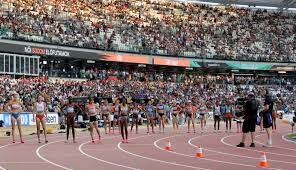
The press release reveals that the ultimate event will include the traditional sprint disciplines, middle and long-distance races, relays, jumps and throws. The future hosts beyond the inaugural World Athletics Ultimate Championship in Budapest have not been announced.
by Marley Dickinson
Login to leave a comment
How Emil Zátopek helped create the Prague International Marathon
Founder of Prague International Marathon Carlo Capalbo opens up about meeting in 1995 that changed everything
This weekend’s Prague International Marathon will be the 29th edition of the event and, courtesy of organizers RunCzech, has become one of Europe’s fastest-growing road races.
It was founded back in 1995 by Carlo Capalbo, alongside 1988 Olympic men’s marathon champion Gelindo Bordin and quadruple Olympic gold medalist Emil Zátopek.
Zátopek, nicknamed the “Czech Locomotive”, is one of the country’s greatest ever athletes. He is best known for being the only person in history to claim three Olympic gold medals over the 5000m, 10,000m and the marathon in the same Games, at Helsinki 1952.
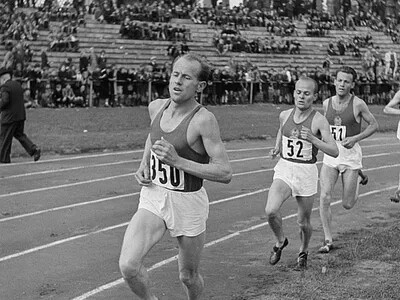
Incredibly, Zátopek’s gold in the marathon came in his first ever race over 26.2 miles.
The Czech athlete was also the first runner in history to go sub-29 minutes in the 10,000m and went undefeated in his first 38 races over the distance from 1948 through to 1954.
Zátopek’s legacy isn’t just defined by his athletics achievements though. The 8000-plus runners that will take to the streets on Sunday (May 5) for the Prague International Marathon – starting and ending around the Old Town Square – can thank Zátopek, Capalbo and Bordin for their vision back in 1995.
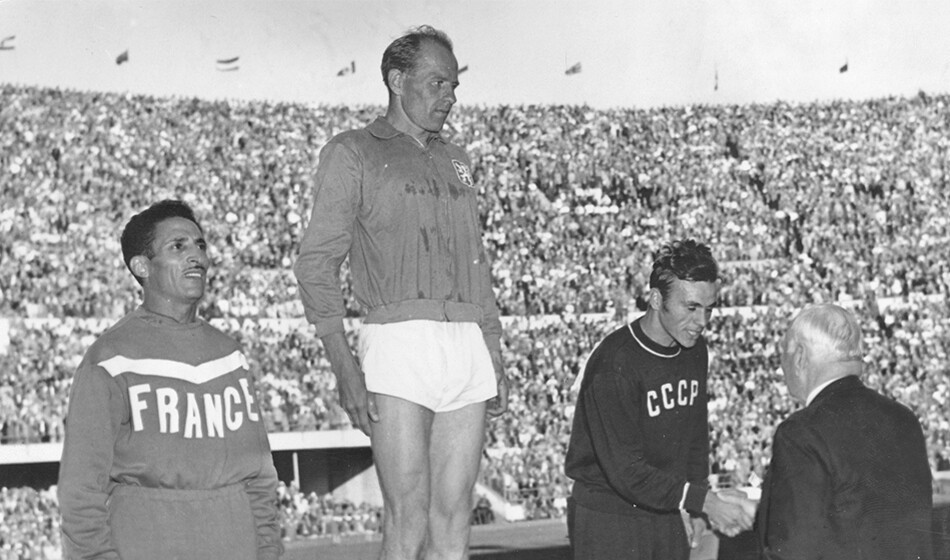
“You know, nearly 30 years ago I had this simple and beautiful dream,” Capalbo tells AW. “A friend of mine [Bordin] said to me that we should organize a marathon. So we went to see Mr Zátopek. That was the start of everything.
“When we went and met Mr Zátopek, we started off with a coffee and bábovka. At the end we tasted some lovely brandy that Mr Zátopek had. After that, we’d devised the marathon but we needed to work out where the people would run.
“So Mr Zátopek decided to draw the course for the Prague International Marathon on a napkin. The rest is history.”
The elite winners in the inaugural year of the event were Ethiopian Turbo Tummo (2:12:44) and Ukrainian Svetlana Tkach (2:38:33).
Since then, the course records have plummeted and are currently held by Alexander Mutiso (2:05:09 – 2023) and Lonah Salpeter (2:19:46 – 2019), although sadly Zátopek did not live to see the recent races as he died in 2000 aged 78.
Prague is a historically quick meet and the fact that the IOC have extended the qualification period for the Olympic marathon past the April 30 date, to include the Prague International Marathon, says a lot.
It means runners from a multitude of continents have flocked to the Czech Republic to meet the standard.
“The Prague International Marathon is a very prestigious event for both the IOC and World Athletics,” Capalbo says.
“There are so many people running to get the standard. The Olympics is the pinnacle of sport and it’s a celebration.”
Capalbo is also keen to stress of the importance of the masses. He states that running is much more than just one individual and his mission is to create sports events to make “people happy and healthy”, plus making the sport “more watchable for the general public”.
“This is not a normal job and running is not a normal sport,” he adds. “It’s a little bit specific. We wanted to give the perception that the winners of running are those who finish the race, not just those first across the line. The marathon is a fantastic advertisement for the city and it’s great for people’s mental health.
“We are a small country in the Czech Republic and many people come from abroad to the marathon. It’s a great income for Prague. This generates happiness and love for an event which is a tradition for us.”
There will also be the added element of “Battle of the Teams”. Successfully introduced last year, the idea is that both masses and elites are split into teams. It means that the placing of every runner matters.
This year, there will be four teams: Team Mattoni, Team Prague Airport, Team Turkish Airlines and Team Volkswagen.
“There is still the elephant in the room,” Capalbo says. “The masses don’t know the name of the winners. It’s why we’ve done Battle of the Teams so the people taking part in the marathon can look at the names of the elite athletes.
“We want to get the people close to the elite athletes. They also need European legends like Paula Radcliffe, Sebastian Coe and Rosa Mota to look up to. When you go to watch a football match you go crazy for your team and that’s what I need to see in running.”
by Tim Adams
Login to leave a comment
Prague Marathon
The Volkswagen Prague Marathon, established in 1995, has evolved into a premier event on the international running calendar, renowned for its scenic course through one of Europe's most picturesque cities. The marathon's route meanders through Prague's historic streets, offering runners views of iconic landmarks such as the Charles Bridge and Old Town Square. The predominantly flat terrain provides an excellent...
more...Jakob Ingebrigtsen’s father could face six years in prison for physical abuse
Gjert Ingebrigtsen has been charged by Norwegian police with one count of physical abuse after allegedly hitting one of his seven kids in the face with a wet towel in 2022.
On Monday, Norwegian police announced that Gjert Ingebrigtsen, father and former coach of 1,500m Olympic champion Jakob Ingebrigtsen, faces charges of domestic violence against a family member. Gjert could face up to six years in prison if found guilty.
In October 2023, Jakob, 23, and his older brothers Henrik, 33, and Filip, 31, who are also Olympic-level athletes, told the Norwegian newspaper VG that their father, who had coached them until 2022, had been physically violent.
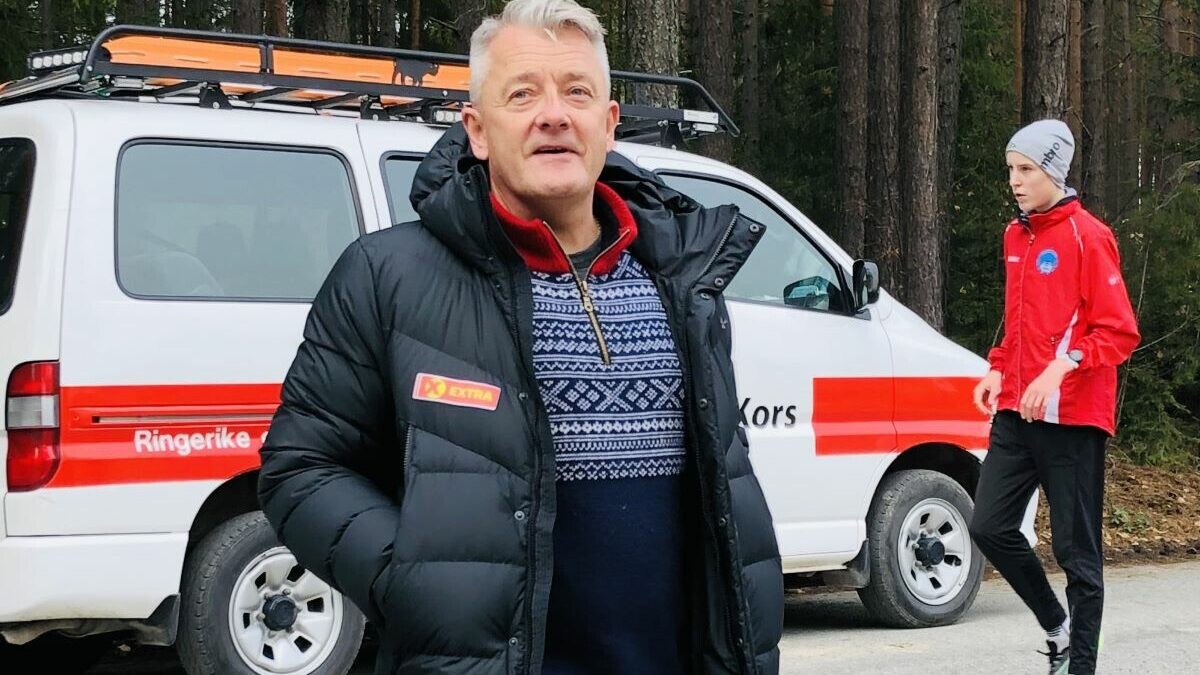
The 58-year-old denied the allegations, but Norwegian police, who had been investigating the case, said on Monday that Gjert had been charged with one count of physical abuse. According to a report in VG, the alleged abuse took place between 2018 and early 2022 and included threats, coercion and hitting one of his seven kids in the face with a wet towel.
Gjert Ingebrigtsen’s lawyer, John Christian Elden, told VG that his client disagrees with the presentation of the events and does not admit any criminal wrongdoing.
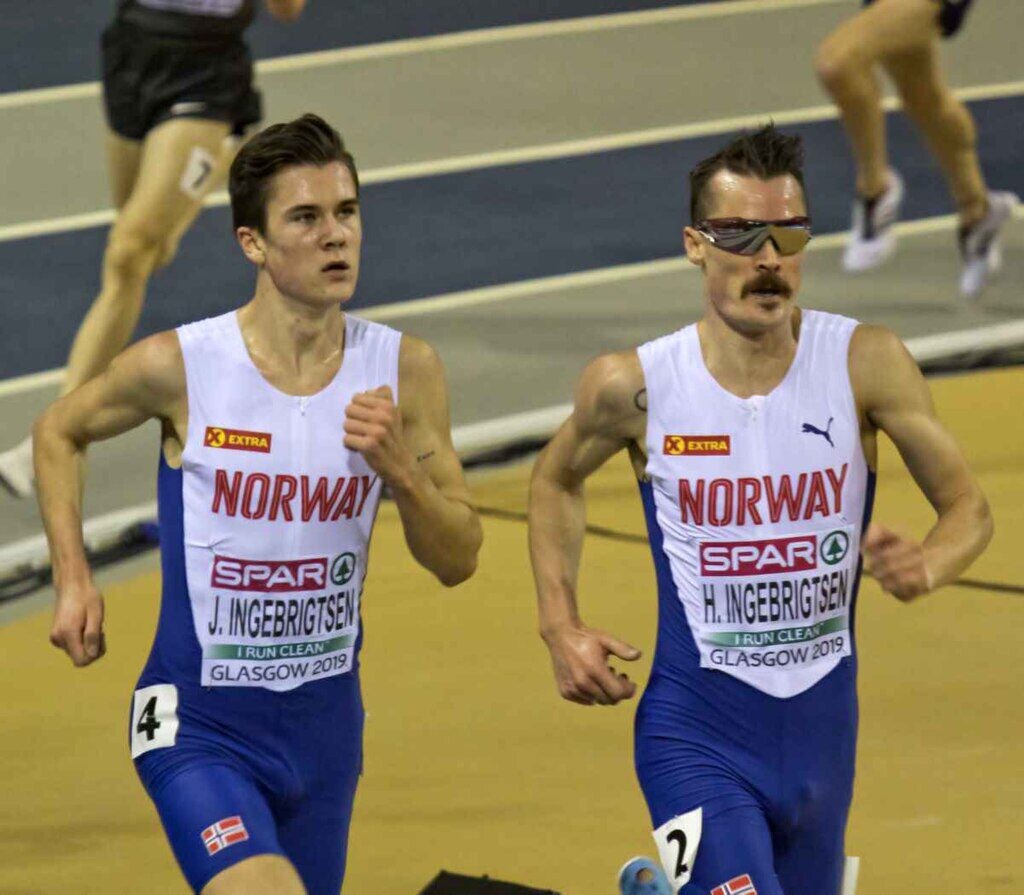
The police did not disclose the name of the child to the public. If found guilty, Ingebrigtsen could be facing up to six years in prison. No date for a trial has been set.
Gjert Ingebrigtsen was named the Norwegian sports coach of the year in 2018 after Jakob, Henrik, and Filip all won medals at the European Championships that year. The family had also been the subject of a TV documentary series, “Team Ingebregtsen,” aired by public broadcaster NRK for the five years leading up to the Tokyo Olympics.
Jakob is one of the biggest international stars in track and field, and was coached by his father since he began running. He broke ties with his father in 2022, and has been coached by his brother Henrik since then.
Gjert Ingebrigtsen recently started coaching another Norwegian runner, Narve Gilje Nordås, who won bronze in the men’s 1,500m behind Ingebrigtsen in Budapest. Gjert Ingebrigtsen was told by the Norwegian sports federation that he would not be allowed to be part of the Norwegian coaching staff at the 2024 Paris Olympics. He was also denied accreditation for the 2023 World Athletics Championships in Budapest, where Jakob won gold in the 5,000m and silver in the men’s 1,500m.
by Marley Dickinson
Login to leave a comment
Olympic champions to receive prize money for first time at Paris 2024 Games
Olympic champions will receive prize money for the first time this year after World Athletics announced gold medalists at the Paris 2024 Games would be paid $50,000 (£39,400) each.
Athletics is the first sport to financially reward its stars for success at the Olympics, which has stayed true to its amateur ethos by never offering prize money.
Winners of all 48 athletics events will receive a payout from the world governing body, which says it will extend the benefit to silver and bronze medalists from the LA 2028 Olympics.
“The introduction of prize money for Olympic gold medalists is a pivotal moment for World Athletics and the sport of athletics as a whole, underscoring our commitment to empowering the athletes and recognizing the critical role they play in the success of any Olympic Games,” said World Athletics president Lord Coe.
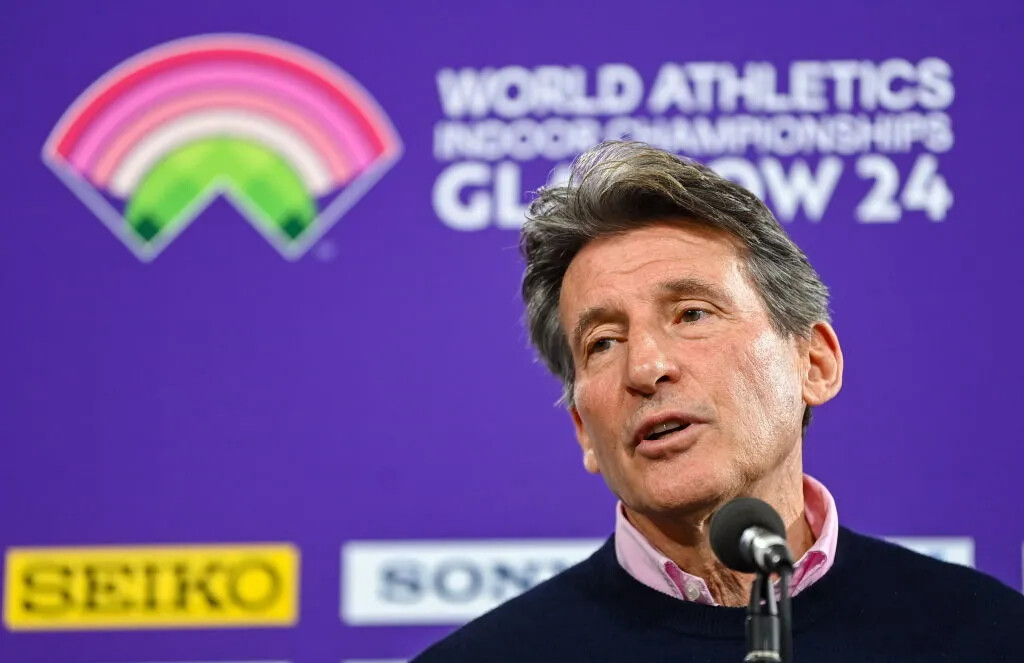
“While it is impossible to put a marketable value on winning an Olympic medal, or on the commitment and focus it takes to even represent your country at an Olympic Games, I think it is important we start somewhere and make sure some of the revenues generated by our athletes at the Olympic Games are directly returned to those who make the Games the global spectacle that it is.”
The size of the payouts is modest compared to those on offer elsewhere in sport – the average salary of a Premier League footballer is around £3m, for instance.
But the move is nonetheless a milestone for the Olympics, and recognition that it will be increasingly difficult to justify asking the stars of its core events to compete for glory alone.
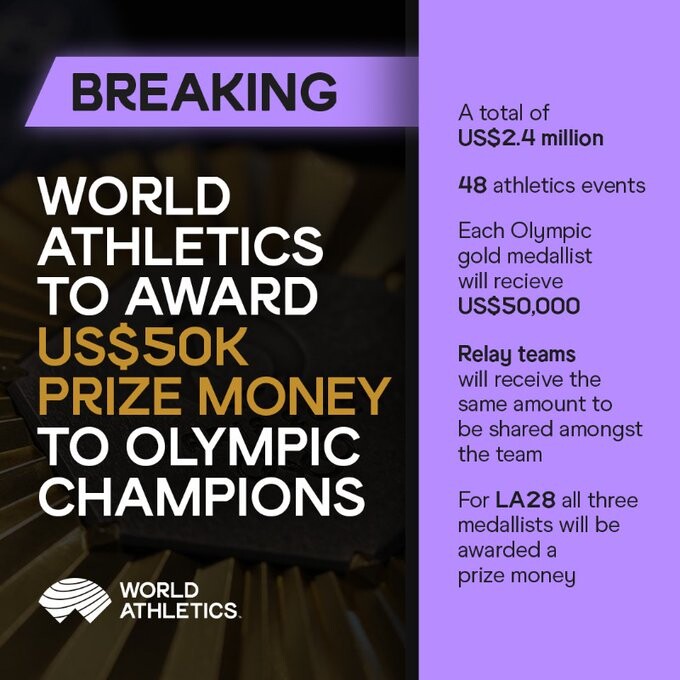
Many Olympic hopefuls rely on funding grants and personal sponsorship deals to train full-time, while others have to retain careers in order to make ends meet.
Meanwhile, athletes are being offered million-dollar incentives to defect to the doping-friendly Enhanced Games, a project Coe has derided as “bollocks”.
While winners of individual athletics events at Paris 2024 will receive $50,000, that sum will be divided up among team members for winners of the relay races.
“This is the continuation of a journey we started back in 2015, which sees all the money World Athletics receives from the International Olympic Committee for the Olympic Games go directly back into our sport,” Coe added.
“We started with the Olympic dividend payments to our Member Federations, which saw us distribute an extra $5m a year on top of existing grants aimed at athletics growth projects, and we are now in a position to also fund gold medal performances for athletes in Paris, with a commitment to reward all three medallists at the LA28 Olympic Games.”
Login to leave a comment
Paris 2024 Olympic Games
For this historic event, the City of Light is thinking big! Visitors will be able to watch events at top sporting venues in Paris and the Paris region, as well as at emblematic monuments in the capital visited by several millions of tourists each year. The promise of exceptional moments to experience in an exceptional setting! A great way to...
more...Jakob Ingebrigtsen thinks doping is worse now than 10 years ago
Norway’s gold drought at the World Indoor Championships hit 29 years last weekend in Glasgow, with the country’s star middle-distance runner, Jakob Ingebrigtsen, sidelined by injury. In a recent interview with the Times, Ingebrigtsen did not hold back, slamming doping in athletics, saying it’s worse now than a decade ago.
“I think doping is worse now than 10 years ago,” Ingebrigtsen told the Times. “It is difficult to prove that, but it’s what I feel. The problem now is that we see fewer positive tests, and that really concerns me; it is a sign that people are getting smarter and finding better ways to evade detection, or perhaps the tests are not detecting enough.”
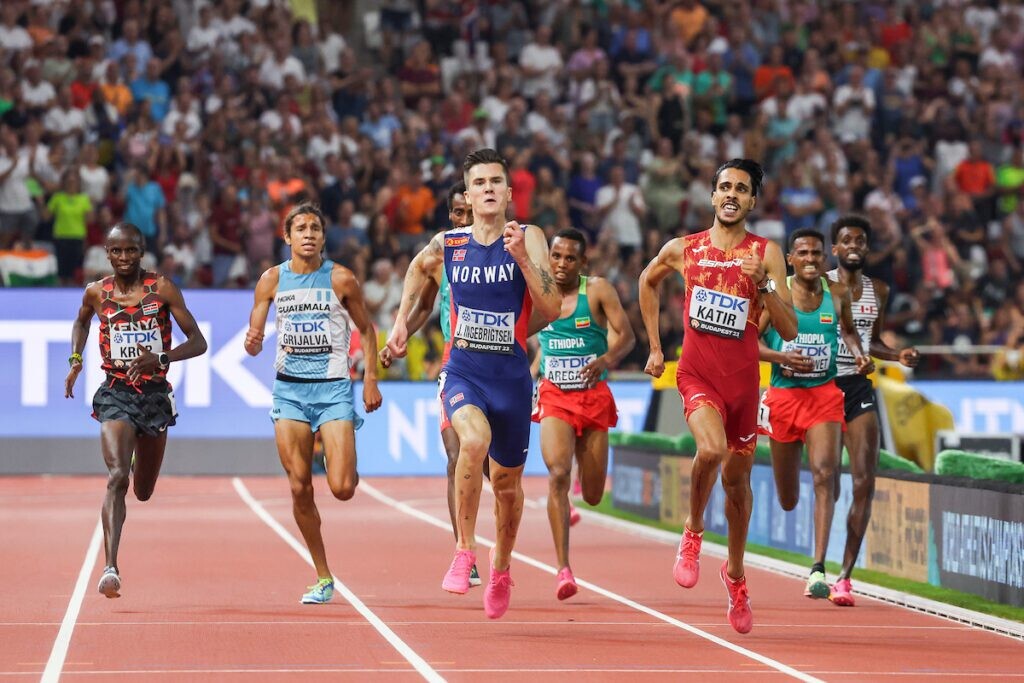
The Olympic 1,500m champion went on to say that not enough people are getting caught by regular testing, and the only way “cheats” are detected is through whereabouts (three missed doping tests in 12 months). “If you know what you’re doing, that is a genius way of cheating,” he says.
One thing that is different than 10 years ago is the number of athletes tested. World Athletics president Sebastian Coe introduced the Athletics Integrity Unit (AIU) in 2017, a crucial governing body dedicated to safeguarding the integrity of athletics. Each year, World Athletics spends an estimated $8,000,000 putting systems in place to tackle doping.
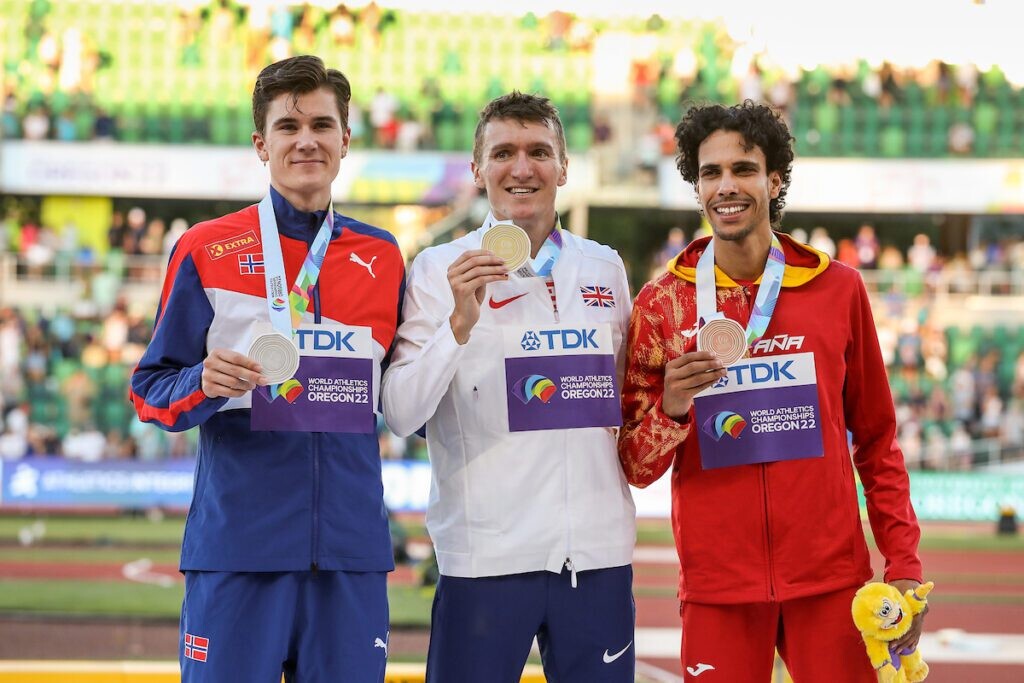
Ingebrigtsen voiced his satisfaction in beating suspected dopers, like two-time world championship medalist Mohamed Katir, who was given a two-year ban on whereabouts in February. “It’s the ultimate destruction,” he said to the Times. “It’s more embarrassing for them—even when they have the audacity to cheat, and they are not doing it right.”
The 23-year-old has yet to race in the 2024 season, as he continues to recover from an Achilles injury he suffered last fall. He expects to make his debut on the track in late May and round into form to compete at the 2024 European Championships in Rome in June.
by Marley Dickinson
Login to leave a comment
Sebastian Coe vows Enhanced Games athletes would be ‘banned for long time
The World Athletics president, Sebastian Coe, has hit out at plans for an Enhanced Games, that would allow athletes to take steroids and other performance enhancing drugs, and warned that anyone who competes will be banned for a long time.
Organisers of the Enhanced Games, which has been backed by venture capitalists including the billionaire Peter Thiel, have called their event “the Olympics of the future”. It will include athletics, swimming, weightlifting, gymnastics and combat sports.
Earlier this month the former swimming champion, James Magnussen, agreed to come out of retirement to compete in the Games and attempt to swim faster than the 50m freestyle record for a prize of $1m (£790,000).
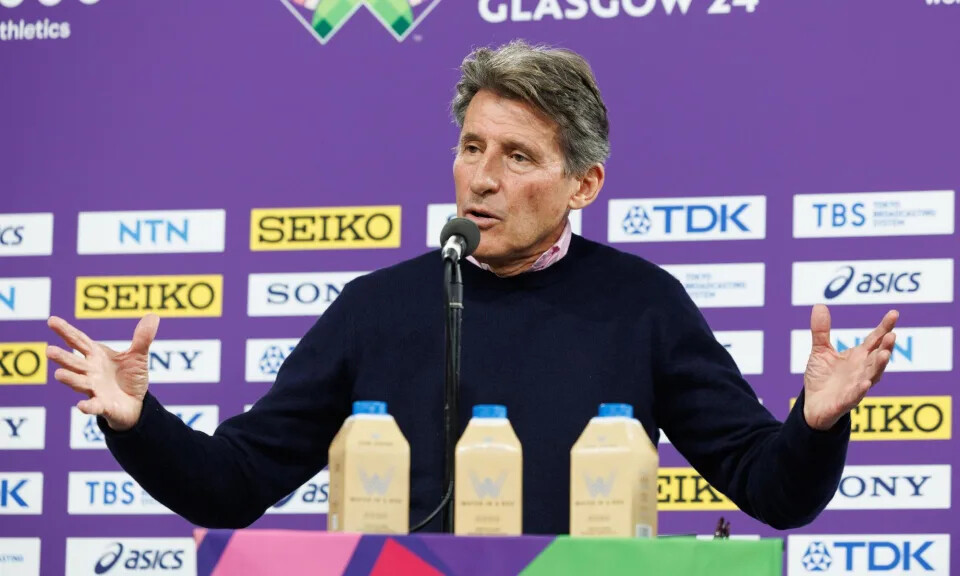
However, at a press conference for the world indoor championships in Glasgow, Lord Coe was withering when asked for his thoughts.
“It’s bollocks isn’t it?” he said. “I can’t really get excited about it. There’s only one message, and that is if anybody is moronic enough to officially take part in it, and they are in the traditional part of our sport, they’ll get banned for a long time. But I really don’t get sleepless nights about it.”
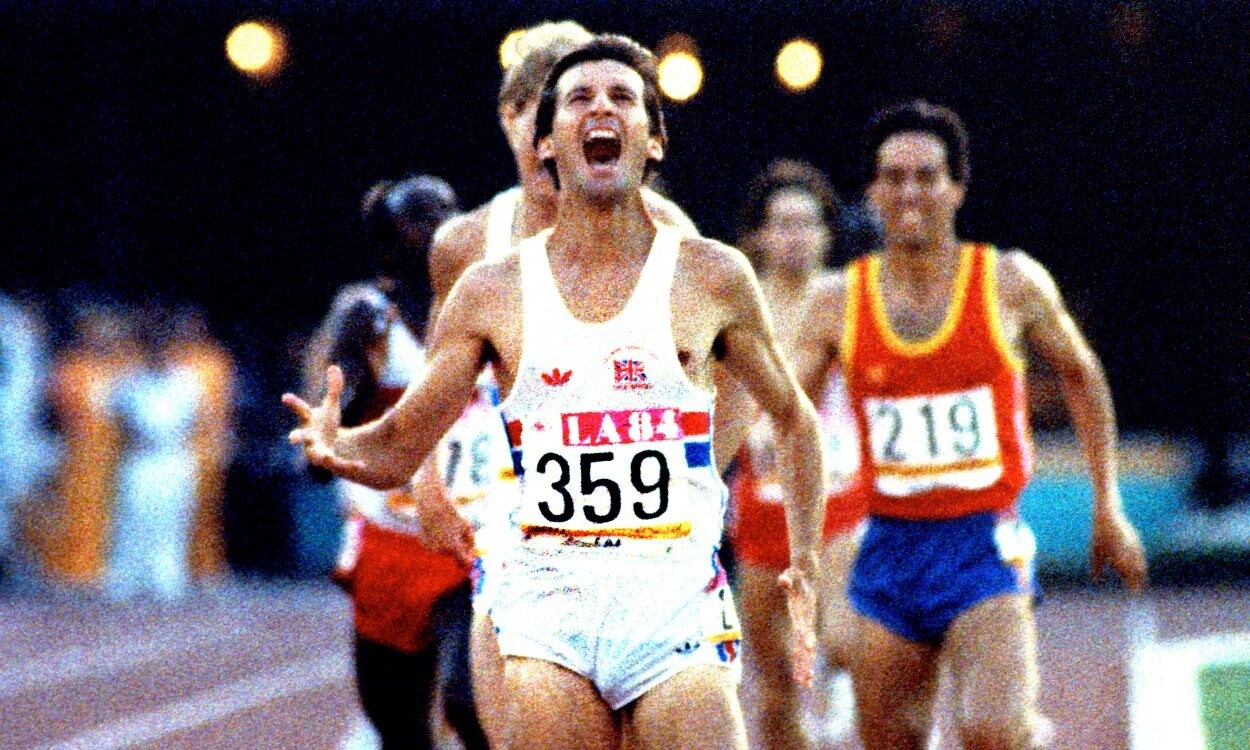
His message was supported by the men’s 800m world record-holder, David Rudisha, who said: “The integrity of the sport needs to be protected at all times. This is not a good thing and just brings a lot of confusion to people and sponsors.”
Coe also promised that World Athletics would not be deterred from trialling new proposals in the long jump and other events, despite the negative reaction to a “take-off zone” instead of the traditional wooden board.
“Our sport is 150 years old and there are elements of it that you absolutely want to protect,” he said. “They are sacrosanct. But there is stuff there that just leaves people a little cold. And 31% of all long jumpers are failing attempts. Now, I’m not saying that the take-off zone is the only remedy and it’s one of a raft of changes.”
Coe said that World Athletics knew that from detailed research from the world championships in Budapest last summer, which found that people left their seats during some events, or stopped watching the event on TV.
“We’re not going to back off innovation here,” he said. “It is really important. We have a responsibility to futureproof the sport, to continue to create the landscape financially.
“We have had meetings with world-class businesses in the last few weeks. And world-class businesses do not routinely want to join enterprises they think are going in the wrong direction.”
He added: “We can’t just sit there. The holy grail of every sport is to remain salient, interesting, and exciting to young people.
“We’re not going to frame the sport entirely around them. But we have to admit that the way people consume sport, the way they consume entertainment is different than it was even three years ago. And we have to move with the times.”
Login to leave a comment
Nurmi's five Paris 1924 Olympic golds make historic return for Paris 2024
The five gold medals won by one of the greatest Olympic champions in history will return to Paris in March for the first time since they were won in the French capital a century ago.
The press called him “The Flying Finn”, “The Phantom Finn” or “The Finnish Running Marvel”. In the 1920s, Paavo Nurmi, Finland's middle and long distance running ace, was known across the world for his extraordinary human athleticism. Nurmi was a superstar whose fame transcended sports, his name and deeds headlined newspapers and filled out stadiums wherever he traveled.
Nurmi's outstanding Olympic exploits in Paris 1924 established his enduring legend. His five victories there a century ago remain today the most athletic gold medals ever won at a single Games.
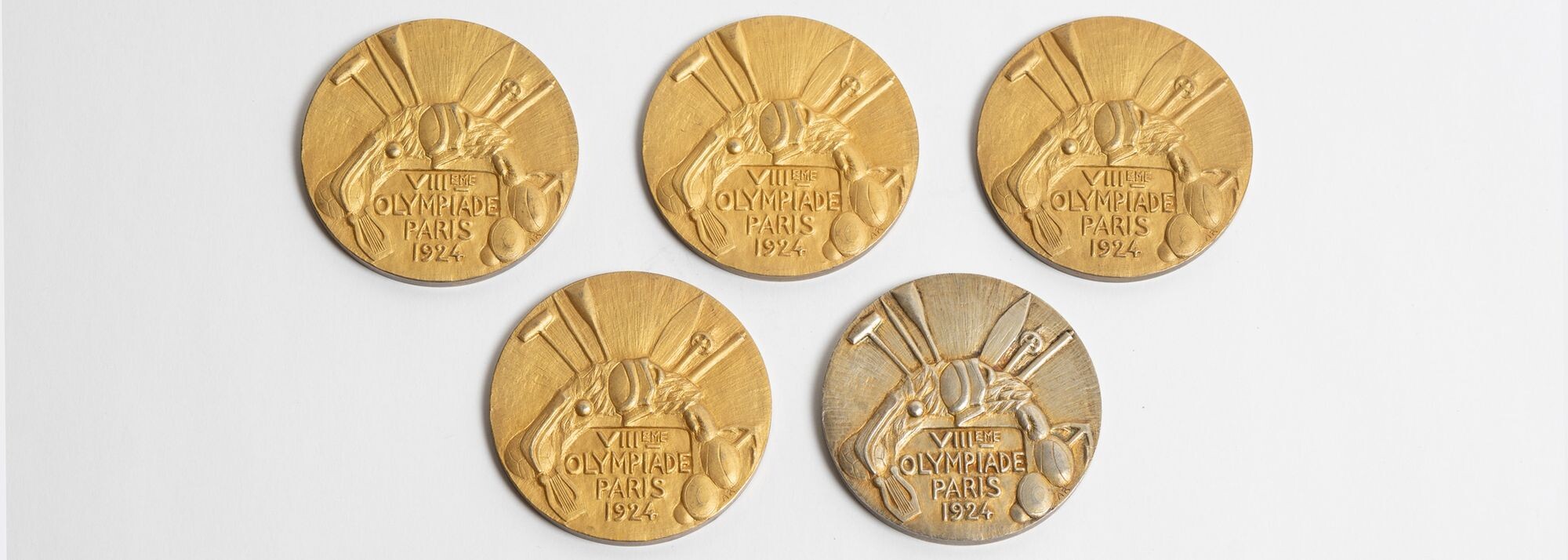
Thanks to the kind generosity of the Nurmi family, Nurmi's set of five 1924 gold medals will go on display in the prestigious museum of the Monnaie de Paris on the left bank of the Seine in the heart of the French capital.
Nurmi's Paris golds form part of a larger exhibition of Olympic medals. Gold, silver, bronze. A history of the Olympic medal , organized by the museum of the French mint to mark the Olympic Games of Paris 2024, offers a fascinating exploration of the history of the Olympic medal, highlighting its evolution through the editions of the modern Olympic Games.
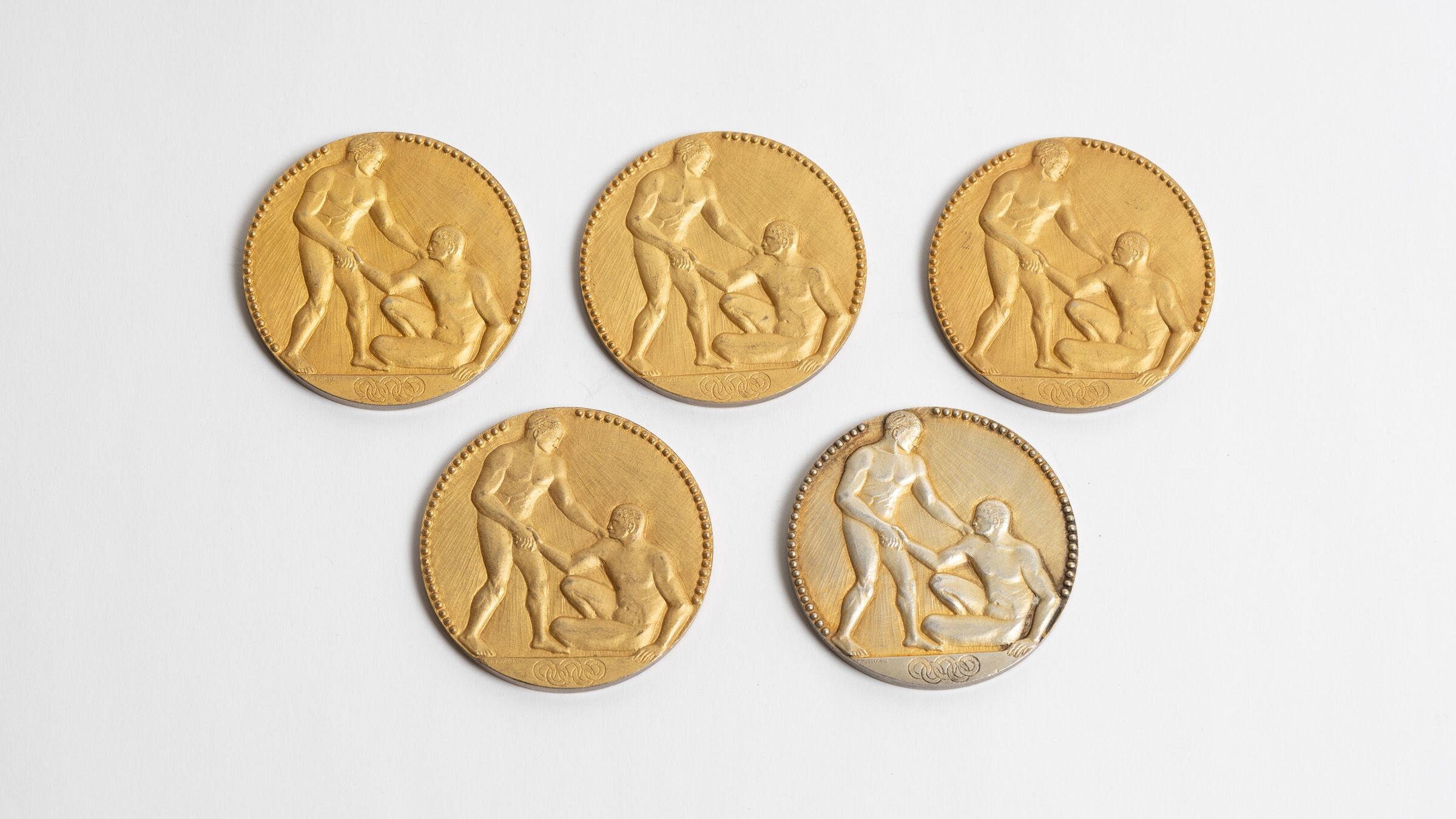
The exhibition opens for media preview on 26 March and to the public from 27 March to 22 September 2024.
Mika Nurmi, the grandson of Paavo, and Finland's four-time Olympic champion Lasse Viren will be honored guests at the press preview and public opening ceremony.
World Athletics President Sebastian Coe said: “World Athletics is delighted that the family of Paavo Nurmi, the Paavo Nurmi Games, the City of Turku and the museum of the Monnaie de Paris have partnered with our own Museum of World Athletics to return one of the most famous sets of Olympic medals to the French capital for the first time since they were won there a century ago.
“During the year of the Paris 2024 Olympic Games, we are celebrating the outstanding achievements of The Flying Finn Paavo Nurmi who in 1924 won a still unsurpassed haul of five Olympic athletics gold medals in a single edition of the Games.
“As famous as the Hollywood stars of his day, lauded by US presidents, Nurmi was the first truly global sports star. Nurmi ended his career with nine golds and three Olympic silver medals and 22 ratified world records but his achievements in Paris 1924, including an outrageous 1500m and 5000m double won with only an hour rest between the two finals, marked the zenith of his career.
“When visiting Paris for this summer's Olympic Games, I look forward to viewing this historic display of Nurmi's golds. These five medals are the athletics centre piece of an impressive six-month exhibition of Olympic medals and coins staged in the neoclassical museum of the Monnaie de Paris, the world's oldest continuously running mint.”
Chairman and CEO of Monnaie de Paris Marc Schwartz commented: “Presenting an extraordinary set of Olympic gold medals at the Monnaie de Paris Museum is truly an honor. Even years later, Paavo Nurmi stands out as one of the most renowned athletes of all time. The celebration of his accomplishments undoubtedly positions this collection as a highlight of our exhibition: 'Gold, Silver, Bronze. A history of the Olympic Medal'. Come to see it in Paris!”
World Athletics Council Member and Chairman of the Paavo Nurmi Games Antti Pihlakoski said: “The Paavo Nurmi Games and Festival organization is grateful to the Museum of the Monnaie de Paris and World Athletics and its Heritage Department for highlighting Paavo Nurmi and his unique career as an Olympic athlete. The display of his Paris 1924 medals serves not only to help a historical understanding of his feats but their continuing impact on society a century later.
“The mission of the Paavo Nurmi Games and Festival organization, with the great support of the City of Turku, is to promote a diverse culture of physical activity in the name of Paavo Nurmi, catering to people of all ages, organizing top-level sporting events, mass sports events for different age groups, and charity events, the proceeds of which are distributed to support physical activities for low-income families.
“We believe that Paavo Nurmi would be pleased that 100 years after his legendary Olympic success in Paris, his legacy continues to be an active part of his hometown City of Turku, Finland, and lives on in the international athletics and sporting community.
“Warm thanks to the Museum of the Monnaie de Paris and World Athletics.”
by World Athletics
Login to leave a comment
Paris 2024 Olympic Games
For this historic event, the City of Light is thinking big! Visitors will be able to watch events at top sporting venues in Paris and the Paris region, as well as at emblematic monuments in the capital visited by several millions of tourists each year. The promise of exceptional moments to experience in an exceptional setting! A great way to...
more...Kelvin Kiptum: Thousands mourn marathon world record holder at funeral in Kenya
On Friday in Chepkorio, Kenya, thousands gathered for the funeral of marathon world record holder Kelvin Kiptum, who died at the age of 24 in a car accident on Feb. 11 with his coach, Gervais Hakizimana.
Kiptum will be remembered as one of the biggest rising stars in the sport for his record-breaking two-hour and 35-second run to break the world record at the 2023 Chicago Marathon.
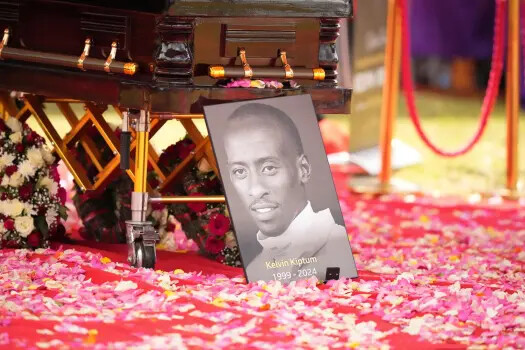
Kiptum’s widow, Asenath Rotich, led the mourners at the funeral for the Kenyan marathon star. According to BBC Africa, she broke down when revealing that the couple had been planning a big wedding celebration in April. He had stunned the world in his short marathon career, and figures from sports and politics came to pay tribute to a man whose life had promised so much.
Kenyan president William Ruto was in attendance, as well as World Athletics president Sebastian Coe, who believed Kiptum would have become the first person to run a competitive marathon in under two hours. “It is a frustration to all of us that we won’t witness what I truly know he was capable of,” Coe told BBC Africa. “For sure he would have broken it. It would have been (Roger) Bannister and Edmund Hillary, both of them, wrapped into one.”
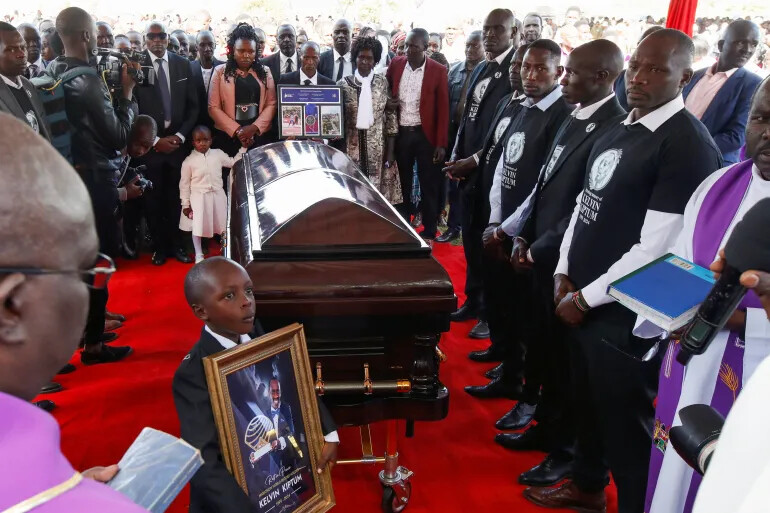
Kiptum was looking to better his world record time at the 2024 Rotterdam Marathon in April.
Also in attendance were notable Kenyan athletes Faith Kipyegon, former world record holder Paul Tergat, and 2022 London Marathon champion Amos Kipruto, who was one of Kiptum’s pallbearers at the service. Eliud Kipchoge did not attend as he continues to prepare for the Tokyo Marathon on March 3.
“Since he arrived… he has rewritten history,” said Tergat. “He has a legacy that we’ve never seen in this world. We are here to celebrate what he has achieved in a very short time.”
Before Kiptum became one of the world’s biggest marathon stars, he had worked as a livestock herder and trained as an electrician in Chepkorio. The government in Elgeyo-Marakwet County plans to honor the late marathoner by building an athletics stadium in his name.
by Marley Dickinson
Login to leave a comment
Kelvin Kiptum death: Seb Coe, Eliud Kipchoge and Mo Farah lead tributes to marathon star after horror crash
The world of athletics has come together to pay tribute to Kelvin Kiptum after he died in a horrific car crash in Kenya.
Kiptum died alongside his coach Gervais Hakizimana, 36, on Sunday after the car he was driving came off the road and hit a tree. Police said he had "lost control [of the vehicle] and veered off-road entering into a ditch on his left side" before he “drove in the ditch for about 60 metres before hitting a big tree”. A young woman was rushed to hospital after being injured in the crash.
The 24-year-old Kenyan is the men’s marathon world record holder, having run a staggering time of two hours and 35 seconds in Chicago in October. Kiptum had only run his first marathon in 2022 yet had rapidly emerged as a world-class talent to challenge the great Eliud Kipchoge.
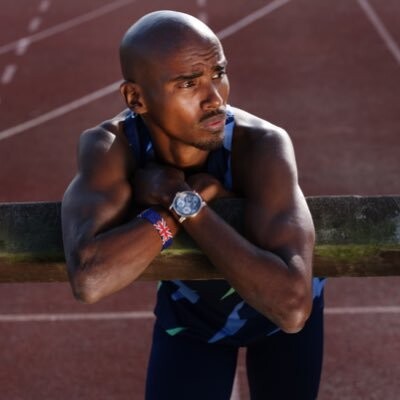
His loss has left the sport reeling and Sir Mo Farah was among those to pay tribute to the immensely gifted runner. "Kelvin was an amazingly talented athlete and had already achieved so much," Farah said.
"He truly had a special talent and I have no doubt he would have gone on to have had an incredible career. I send all my sympathies and condolences to his and Gervais' family and friends at this tragic time."
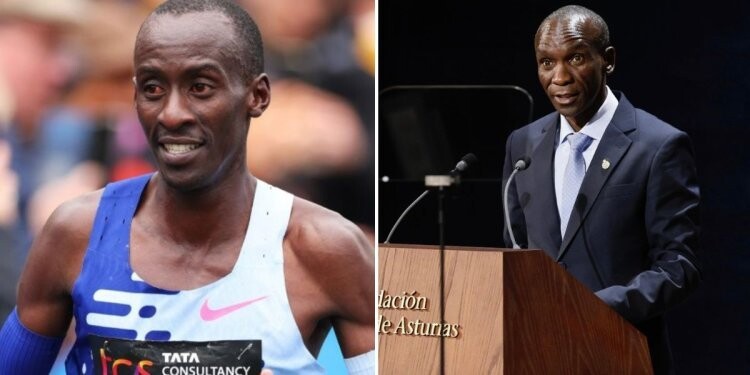
British running great and World Athletics president Seb Coe wrote on Twitter : “We are shocked and deeply saddened to learn of the devastating loss of Kelvin Kiptum and his coach, Gervais Hakizimana. On behalf of all World Athletics we send our deepest condolences to their families, friends, teammates and the Kenyan nation.
“It was only earlier this week in Chicago, the place where Kelvin set his extraordinary marathon World Record, that I was able to officially ratify his historic time. An incredible athlete leaving an incredible legacy, we will miss him dearly.”
Kipchoge is widely considered the greatest marathon runner of all time, yet Kiptum broke his world record in Chicago last year. The 39-year-old wrote: “I am deeply saddened by the tragic passing of the Marathon World record holder and rising star Kelvin Kiptum.
An athlete who had a whole life ahead of him to achieve incredible greatness. I offer my deepest condolences to his young family. May God comfort you during this trying time.”
Kiptum was a natural marathon runner and showed his talent right from the off when he ran fourth fastest time on record (2:01:53) to win the Valencia Marathon in 2022. He then set a course record of 2:01:25 at the London Marathon in April 2023 before taking a gigantic 34 seconds of Kipchoge’s world record time six months later.
London Marathon event director, Hugh Brasher, said: “Kelvin had the sport of marathon running in his feet and at his feet. He was a 'once in a generation' athlete who was set to redefine the boundaries of our sport.
“Three marathons, three wins. The fastest marathon debutant in Valencia, London's course record holder and the world record holder in Chicago, all within the space of less than 12 months. His was a flame that burned so bright and last night was tragically put out.
“As a sport we mourn for a life so tragically cut short, a talent and a work ethos that was only starting to be appreciated and a man that we had only just started to know. Our thoughts are with his family and friends and those of his coach Gervais. We hope that Sharon Chepkirui Kosgei, who was travelling with them, makes a full and speedy recovery.”
Kiptum had only recently announced his intention to run the marathon in under two hours in Rotterdam in April. Kipchoge has run a marathon in one hour 59 minutes 40 seconds, but that time does not count as an official record as it was in a specifically arranged sponsored event with pacemakers.
British marathon runner Emile Cairess said Kiptum could have become "Usain Bolt-esque" as a "figurehead of athletics". He told the BBC : "It's a massive blow because at his level, someone can really capture the attention of people outside of the sport.
"Many people thought they would never see a sub two-hour marathon in their lifetimes but since he came along, it's like it was just a given that he would do it because of his exceptional performances so far. It was almost certain that he would have done it. It's terribly sad and a real shame that we won't get to see him again or to attack that barrier."
Login to leave a comment
Marathon world record holder Kelvin Kiptum dies as tragedy rocks athletics world
Marathon world record-holder Kelvin Kiptum and his coach died in a car crash in Kenya late Sunday, a fellow athlete who went to the hospital and saw Kiptum's body said.
Kiptum was 24 and on course to be a superstar of long-distance running.
Kiptum and his Rwandan coach Gervais Hakizimana were killed in the crash at around 11 p.m., said Kenyan runner Milcah Chemos, who was at the hospital where the bodies were taken.
The crash happened on a road between the towns of Eldoret and Kaptagat in western Kenya, she said, in the heart of the high-altitude region that's renowned as a training base for long distance runners.
Chemos said she was among a group of athletes who had gone to the hospital in Eldoret after hearing the news of the crash. Family members of Kiptum were also with them to identify his body, Chemos said.
Kenyan media reported that a third person, a woman, was in the car and was taken to the same hospital with serious injuries.
Kiptum was the first man to run the marathon in under 2 hours, 1 minute. He set the new world record of 2:00.35 at the Chicago Marathon in October, beating the mark of fellow Kenyan Eliud Kipchoge.
Kiptum's record was ratified by international track federation World Athletics last week.
Kenyan athletics federation president Jackson Tuwei said he had sent a team of officials to the area after being informed of the late-night accident.
Kiptum had immediate success by running the fastest time ever by a marathon debutant at the 2022 Valencia Marathon. He won the London and Chicago races last year, two of the most prestigious marathons in the world.
World Athletics president Sebastian Coe was one of the first to offer his condolences in a statement on X, formerly Twitter.
"We are shocked and deeply saddened to learn of the devastating loss of Kelvin Kiptum and his coach, Gervais Hakizimana," Coe wrote. "On behalf of all World Athletics we send our deepest condolences to their families, friends, teammates and the Kenyan nation."
"It was only earlier this week in Chicago, the place where Kelvin set his extraordinary marathon World Record, that I was able to officially ratify his historic time. An incredible athlete leaving an incredible legacy, we will miss him dearly," Coe wrote.
Login to leave a comment
World Athletics president says track and field will never be drug-free
Former Olympic champion and current World Athletics President, Sebastian Coe, recently addressed the persistent issue of doping in track and field during an interview on the Up Front with Simon Jordan podcast. Coe acknowledged that achieving a completely drug-free sport is unlikely due to the inherent risks and rewards associated with doping.
When asked about concerns regarding an uneven playing field and the prevalence of doping, Coe pointed out the increased controls compared to nine years ago, when he assumed the role of World Athletics president. Despite the progress made, he admitted that reaching a utopia of a drug-free sport is unrealistic.
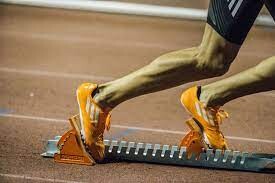
Coe highlighted the risk-versus-reward dynamic, stating, “If you’re a street kid, in some countries the risk versus reward is huge, and if you get caught and are returned to the street, then that’s nothing ventured, nothing gained. So it is a challenge.” Coe said the athletes with nothing to lose and everything to gain will continue to take the risk that they might get caught.
In 2017, World Athletics appointed the Athletics Integrity Unit (AIU), an independent governance organization at the core of integrity reforms. The AIU, funded annually with millions of dollars from World Athletics, plays a crucial role in ensuring fair competition and protecting clean athletes.

Coe told Jordan that he only receives about six hours’ notice on the doping ban of an athlete before it is publicly announced by the AIU. Despite the challenges, he emphasized the importance of maintaining control over the sport. “If you’re not following the rules, you are gonna get caught,” he said.
The AIU’s Global List of Ineligible Persons currently has more than 700 athletes serving doping suspensions, with 21 per cent of the cases originating in Kenya and India. In response to the doping challenges in Kenya, the Kenyan government, AIU and World Athletics have initiated a $25 million five-year campaign to educate and test more athletes. The campaign aims to combat doping in athletics by addressing the root causes and implementing strict testing measures.
by Marley Dickinson
Login to leave a comment
Plans underway to add World Championships marathons to World Marathon Majors
World Athletics president Sebastian Coe has disclosed that plans are underway to add World Championships marathons to World Marathon Majors.
World Athletics president Sebastian Coe says discussions are underway to comprise the World Championships marathons into World Marathon Majors.
As reported by Athletics Weekly, Coe noted that he has been in discussions with the WMM organizers about weaving the world championship road races into their big-city event programmes.
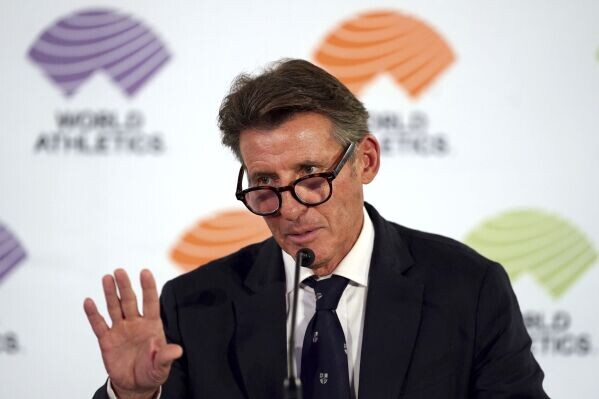
“The issue for us is really about how we can create those opportunities. A lot of athletes are also looking at the world championships and thinking that Chicago or New York is around the corner and asking themselves whether they should be running the worlds when they can earn good money on the roads a few weeks later.
"Maybe we can reduce the marathon to a half-marathon at the world championships which would at least take some of the athlete welfare issues away and would allow them to do it in the build-up to a marathon majors event,” he added.
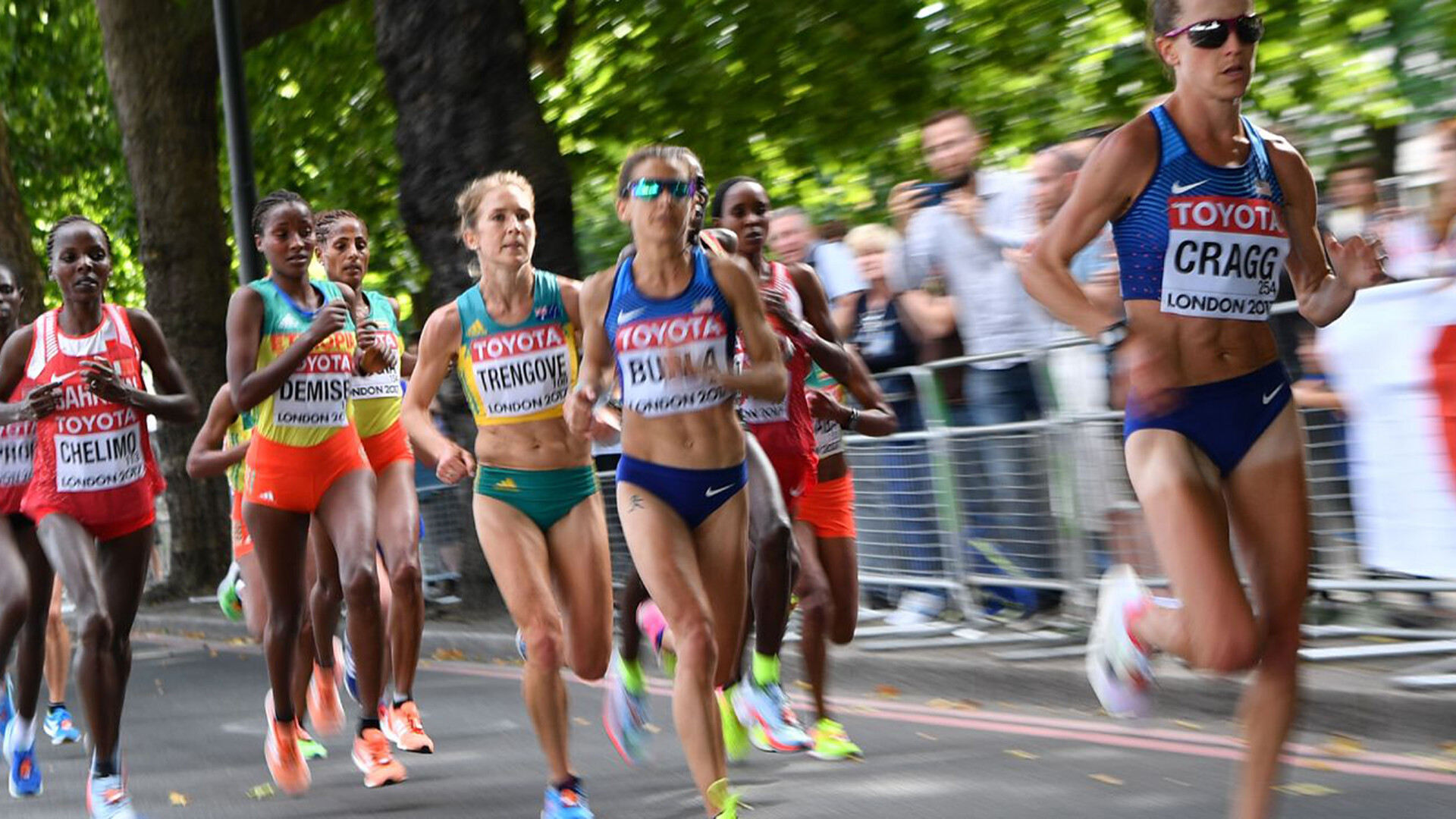
The president also explained that he finds it difficult to see an end to the global warming crisis any time soon and will be keen to put measures in place that will provide the best outcome for athletes and fans.
“In light of global warming and the inability of governments to use anything other than ‘BS’ in this space then it’s going to be down to the sport to try to figure out how they navigate their way through this.
"We’ve found 76% of our athletes already said that global warming has had a profound impact on their competition and training programmes.
"I think it’s inevitable that sport will globally have to look at rejigging the calendar because there won’t be any immediate respite from this problem and we’re further from the 2030 targets than we’ve ever been, whatever anyone tells us at COP 28!” she said.
by Abigael Wuafula
Login to leave a comment
Sebastian Coe says Russia, Belarus still banned, but situation could change
Athletes from Russia and Belarus are still banned from athletics events at the 2024 Paris Olympic Games, but World Athletics president Sebastian Coe said on Monday that the situation could change, and that a working group is monitoring it.
Earlier this month, the International Olympic Committee (IOC) approved the participation of Individual Neutral Athletes (AINs) at next year’s Olympics.
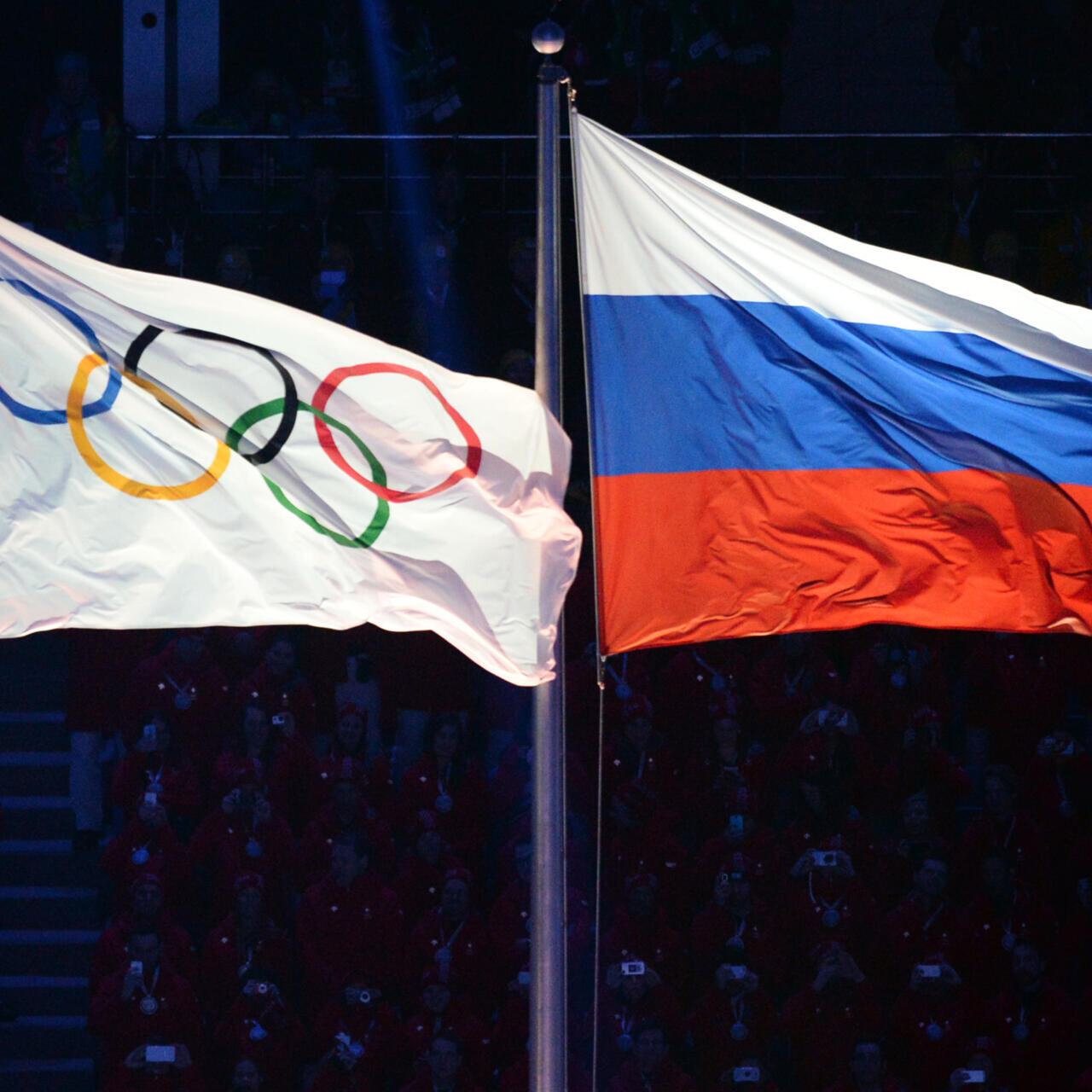
Athletes holding a Russian or Belarusian passport who have secured their places through existing qualification systems on the field of play will be deemed eligible to compete at Paris 2024, following specific conditions.
World Athletics, however, decided to stick to the blanket ban despite the IOC’s decision.
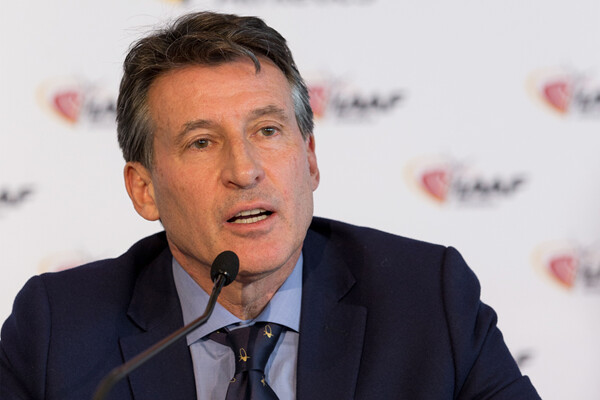
Athletes from both countries have faced a multitude of sanctions from international competitions since the conflict in Ukraine began in February 2022.
During a media call with agencies including Xinhua on Monday, Coe confirmed “there is no change [to the ban]”, but expressed hope that the sanctions could be lifted.
“The most important thing is that the autonomy and independence of international federations to make these judgements is really important. We made a judgement which we believe was in the best interest of our sport,” he said.
“Do I see anything changing in the foreseeable future? I don’t know. The world changes every five minutes, the situation could change. We do have a working group that is monitoring the situation within the sport, and it will advise and guide the Council on what circumstances might need to exist for any exclusion to be lifted,” Coe added.
Coe also expressed his confidence in the competitiveness of the athletics competitions in Paris, following a “stupendous” season that has seen 23 world records and nine world U20 records broken in 2023.
“The one word I would use [to sum up the 2023 season] is stupendous,” he said. “I can’t remember a season that has delivered more high quality performances across a broader bandwidth of disciplines.”
“Everywhere you look, you have the potential for some extraordinary head-to-heads in the sport, in pretty much every discipline,” added Coe.
Login to leave a comment
Paris 2024 Olympic Games
For this historic event, the City of Light is thinking big! Visitors will be able to watch events at top sporting venues in Paris and the Paris region, as well as at emblematic monuments in the capital visited by several millions of tourists each year. The promise of exceptional moments to experience in an exceptional setting! A great way to...
more...World Athletics faces backlash for last-minute change to Athlete of the Year Awards
After months of discussion and voting on World Athletics’ social media pages for their prestigious World Athlete of the Year Award, the governing body of running/track and field did something no one could have predicted at the awards night on Monday in Monaco. For the first time in 35 years, the award was given to three men and three women, and fans across the sport are outraged.
Instead of giving out a men’s and women’s World Athlete of the Year award, as they’ve done in the past, they divided it into three categories: Track Athlete of the Year, Field Athlete of the Year, and Non-Stadia Athlete of the Year. Faith Kipyegon and Noah Lyles won the Track award, while pole vaulter Mondo Duplantis and triple jumper Yulimar Rojas won the Field award. Non-Stadia accolades went to the men’s and women’s new world record holders, Kelvin Kiptum and Tigist Assefa.
Online comments
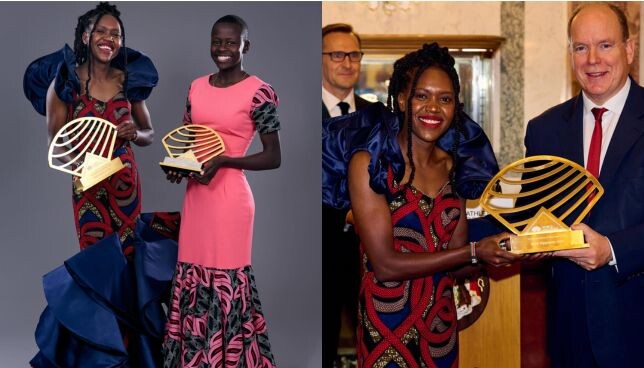
The Internet was not impressed with World Athletics changing the format at the last minute (after the voting). Many thought deserving athletes like Kipyegon, Lyles and Kiptum were robbed of their glory and success. “What is the point of having finalists if everybody wins some category that wasn’t announced prior? It should have been clear you have categories from the start, not on the final day,” a fan tweeted.
“Such a useless ceremony,” tweeted another fan. Track and field sprint legend Michael Johnson even tweeted, “Am I the only person who thinks having six athletes of the year is a bad idea? Am I missing something?”
World Athletics’ reasoning

World Athletics said its decision to divide the award into three categories came from fans and council members, who commented that it was “incredibly hard” to limit the vote to just one athlete. That is what people say when they have a tough decision to make, meaning that World Athletics chose highly deserving finalists–not that they want to split the award. World Athletics president Sebastian Coe took it differently: “The depth of talent and the outstanding performances in our sport this year more than justify the expansion of the World Athletics Awards to recognize the accomplishments of these six athletes across a range of disciplines. It is only fitting that they be recognized as the athletes of the year in their respective fields,” Coe said in a press release.
Poor communication from World Athletics
When World Athletics named the 10 nominees for the award in late October, they did not indicate they were planning to divide the award three ways. Even when they narrowed it down to five finalists, there was no indication it would be split. Most fans would have been OK with three AOTY awards if they had known during the voting process that that would be the case.
In a sport that is always looking to grow and garner more attention, going against the grain of the community and fan votes is not a way to attract new people to the sport, especially heading into an Olympic year. Although it’s easy to understand World Athletics’ reasoning for splitting the award–it’s hard to compare athletes of different disciplines, especially since a pole vaulter like world champion Duplantis can only win accolades in one discipline, whereas Lyles or Kipyegon could win medals in two or three events. Still, World Athletics had three opportunities to inform the public they would be splitting the awards this year, and I am sure fewer fans would be disappointed in the outcome.
Imagine watching the Super Bowl and seeing them hand out an offensive, defensive and special teams MVP. It would make the award meaningless.
by Marley Dickinson
Login to leave a comment
Caster Semenya says World Athletics president Seb Coe damaged her life
Caster Semenya has claimed that World Athletics damaged her personally and professionally through the hormone suppression medication that she had to take for six years.
In her new book, The Race to Be Myself, two-time Olympic champion Caster Semenya has revealed how World Athletics seemingly destroyed her life and she singled out President Seb Coe.
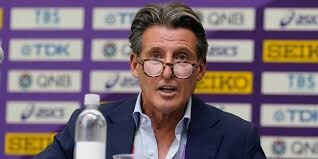
In her book, which was published on Tuesday, October 31, the South African claimed that they (World Athletics) damaged her personally and professionally through the hormone suppression medication she was required to take for six years. As reported by The Telegraph, Semenya explained how Coe had something against her.
“With me and Sebastian, it’s personal. He has something against me – that’s how I feel, and no one can change my mind,” Semenya writes.
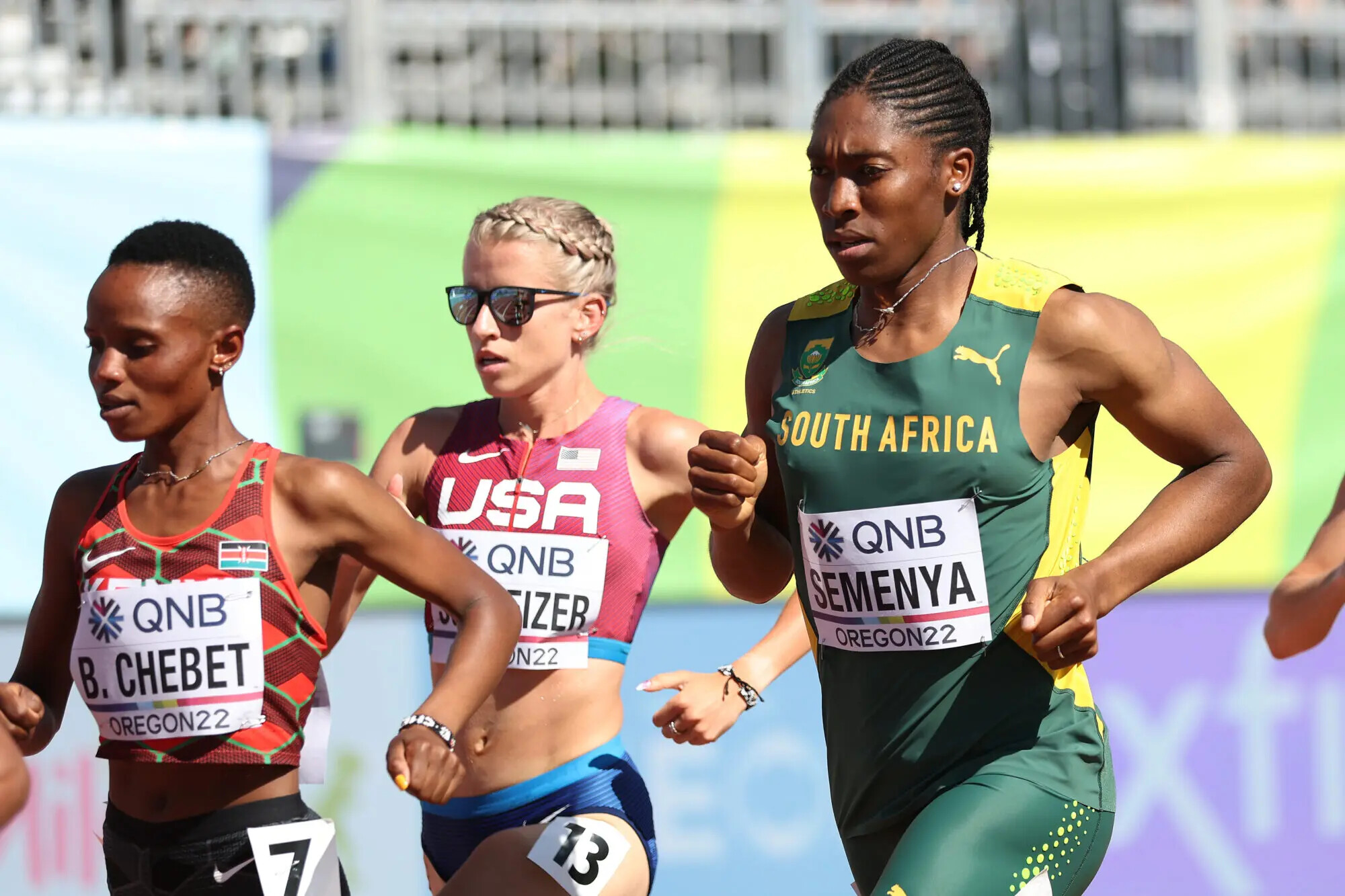
She started her professional career at 18 and her hyperandrogenism, which comes under the technical label of DSD (differences in sexual development), caused a dilemma in the world of athletics. In her book, she sets the record straight that she was born with a vagina but no womb and internal testes.
After her victory at the World Championships in 2009, World Athletics noted that she could only be allowed to compete if she suppressed her testosterone levels below 10 nmol/L.
However, the restriction was lifted in 2016 after another DSD athlete – Indian sprinter Dutee Chand – brought a legal challenge against the rule.
“The man (Coe) couldn’t help himself. Coe has always struck me as a small man, unsure of himself. He couldn’t stand being questioned about the regulations or me in particular.
He could barely say my name in interviews … My thoughts are that he should concentrate on doing the job he said he would do.
Clean up the sport … Everybody knows there is a systemic doping issue in athletics, and the IAAF has made a mess of dealing with it,” Semenya narrates.
Follow the Pulse Sports Kenya WhatsApp Channel for more news.
Meanwhile, Semenya noted that she will never again take hormone suppressants – to which she attributes side effects such as weight gain, cramps, and the weakening of bones – in order to race.
She disclosed that she did not know about her DSD condition until it was made public in 2009, soon after that first World Championship gold in Berlin.
“I found out, along with the rest of the world, that I did not have a uterus or fallopian tubes. I would say I was being treated like an animal, but I grew up tending to my family’s livestock, and we treated them with more respect than that,” she explained.
by Abigael Wuafula
Login to leave a comment
World Athletics provides equipment to support Ukrainian athletes
World Athletics President Sebastian Coe has met with members of the Ukrainian team and newly elected World Athletics Council member Nataliya Dobrynska in Budapest to deliver much-needed equipment provided by the Ukraine Fund.
The fund – which was established by World Athletics, together with the International Athletics Foundation (IAF) and Members of the Diamond League Association, last year and renewed in May – was created to support elite athletes affected by the conflict in their home country.
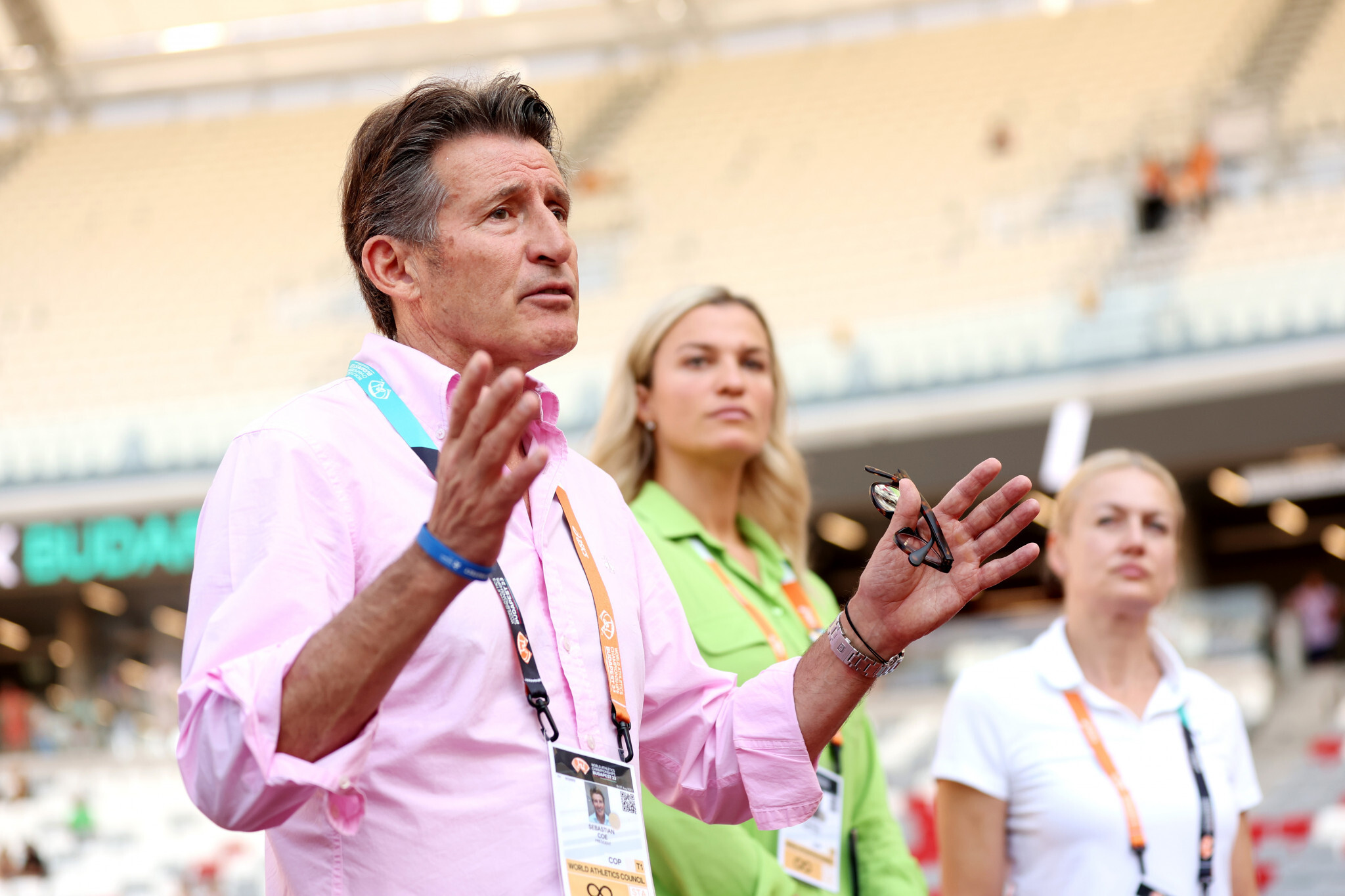
Its primary purpose is to ensure that Ukrainian athletes can continue to train, qualify for and participate in World Championship events, following Russia’s invasion of Ukraine last year. A team of 29 Ukrainian athletes is currently competing at the World Athletics Championships in Budapest.
The fund has USD$190,000 available this year to assist the athletes, their immediate family and key support personnel. As well as paying for travel and accommodation for elite athletes at training camps, and for non-quota officials and athletes at World Athletics Series events, support also included purchasing equipment – particularly for the pole vault – to replace items that have been destroyed during missile attacks.

On Thursday (24) Ukraine marks its 32nd anniversary of independence and, meeting with the athletes the day before that anniversary, Coe said: “I am grateful you are here competing at this 40th anniversary of the World Championships.
“I know how hard it has been for you emotionally and physically. I have spoken to many of you since Russia invaded Ukraine in February last year. And I want you to know that World Athletics will continue to support you as long as you need help.”
The equipment provided includes pole vault poles, as well as mats.
“This year, we have heard your request to provide athletics equipment destroyed by the war, and support for summer camp training and preparation for Budapest,” Coe added. “And this is where we have focused our efforts. We have the poles, and I am delighted they are being used. The mats will follow.
“Thank you, all of you – the athletes, the coaches and the federation – for keeping our sport alive in Ukraine.”
Dobrynska said: “Today, we come together to express our huge gratitude to World Athletics, led by President Sebastian Coe, for being a pillar of support during these challenging times in Ukraine.
“In a world that sometimes feels divided, you remind us of the power of unity. You should know that all of Ukraine appreciates your commitment and involvement in what our athletes are trying to achieve under very difficult circumstances.”
It is expected that up to 100 members of the Ukrainian athletics community may require some financial support this year.
Also on Wednesday, Ukrainian 400m hurdler Anna Ryzhykova, Athlete Refugee Team (ART) member Perina Nakang, ART coach Janeth Jepkosgei and World Athletics ambassador David Rudisha met with refugees families, including those from Ukraine, currently living in Hungary.
The refugee families, who are being assisted by the UN refugee agency UNHCR and Hungarian agency Menedek, were provided with tickets to attend Wednesday morning’s session of the World Athletics Championships before meeting with the athletes.
They came together at the WCH Budapest 23 Green Zone, which is hosting sustainability awareness-raising activities and meet & greets with athletes over the course of the championships.
by World Athletics
Login to leave a comment
Sebastian Coe reelected as World Athletics president
World Athletics President Sebastian Coe was elected for a third term at the 54th World Athletics Congress in Budapest on Thursday (17).
Ximena Restrepo was re-elected as a Vice President and will be joined by newly elected Vice Presidents Raul Chapado, Adille Sumariwalla and Jackson Tuwei.
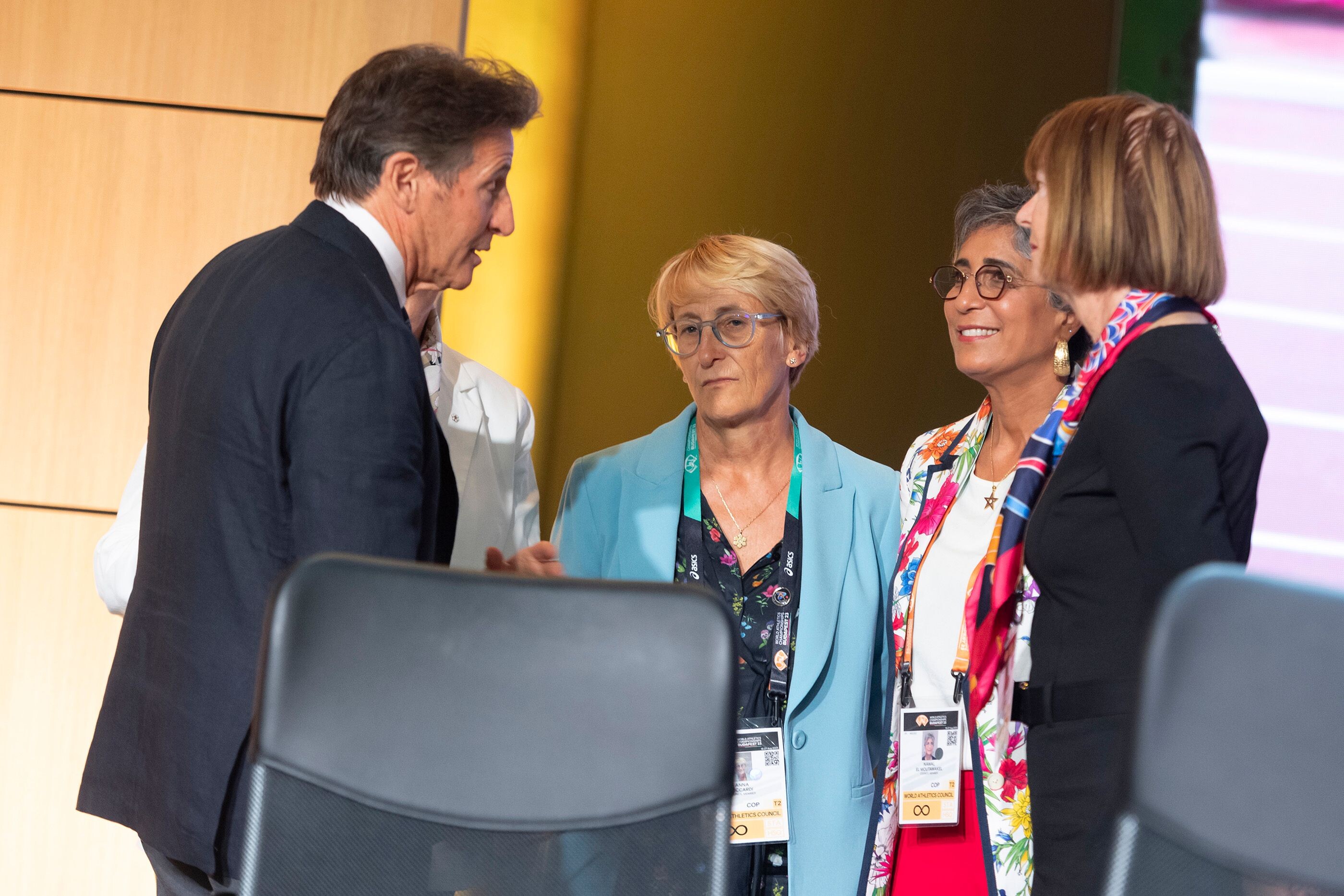
A total of 192 voting members of Congress voted for Coe and three abstained. Under the World Athletics Constitution, this will be Coe’s final term as President.
In 2019, Restrepo, the 1992 Olympic 400m bronze medallist from Colombia, became the first woman to be elected as a World Athletics Vice President.

As part of the widespread reforms adopted by the World Athletics Congress at the end of 2016, World Athletics added minimum gender targets into its constitution to establish parity at all levels in the sport’s governance.
The reforms detailed a requirement to have 13 members of each gender elected to the World Athletics Council at the 2027 Congress. This target has been met four years earlier than the reform roadmap prescribed.
The remaining requirement to be met at the 2027 Congress is the election of two Vice Presidents of each gender.
"I’m grateful for the support of my colleagues and delighted to see that more of the commitments we made during the governance reform process in 2016 have come to fruition with the election of World Athletics’ first gender equal Council four years ahead of schedule," said Coe. "But the job is not done yet and we need to keep pushing for gender parity throughout our representative bodies. The strength of our sport is in its diversity and that should be reflected in our governance at all levels."
by World Athletics
Login to leave a comment
World Athletics planning a new competition format for 2026
The innovative event aims to maintain the sport's momentum by showcasing the "best of the best" in athletics during non-Olympic and world championship years.
During a media call on Monday, World Athletics president Sebastian Coe provided more insights into a planned new format scheduled to be added to the international athletics calendar in 2026. The innovative event aims to maintain the sport’s momentum by showcasing the “best of the best” in athletics during non-Olympic and non-world-championship years.
Coe highlighted the significance of this new format, stating, “Although 2026 is often referred to as a ‘fallow year’ due to the absence of World Championships or Olympics, the new event aims to offer a fresh and different experience for fans and athletes alike.” The ultimate goal for World Athletics is to incorporate this format into the four-year cycle of athletics competitions.
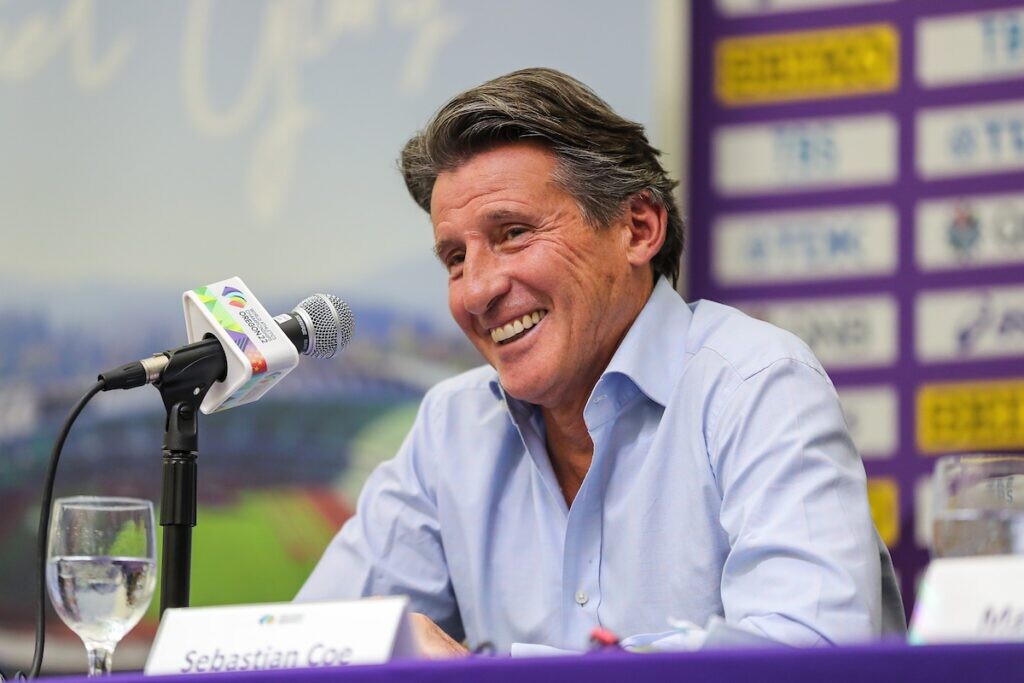
While the exact format is still being fine-tuned and potential hosts considered, the primary focus is to deliver two or three nights of high-quality athletics, featuring the world’s best athletes. The intention is to have smaller fields and no heats or cross-heats, creating an action-packed spectacle specifically designed for television viewers. “We haven’t entirely agreed on the format, and we are still working with potential hosts here, so there’s more to come,” Coe added.
It is speculated that the new format may draw parallels to the existing Diamond League Final, which invites top athletes from each Diamond League meet to compete in a two-day championship event.

Coe has served as the World Athletics President since 2015 and is set to stand unopposed for a third term at the upcoming World Athletics Congress in Budapest on Aug. 17, ahead of the 2023 World Athletics Championships. Regarding potential investment from countries like Saudi Arabia to enhance the sport’s growth, Coe emphasized the organization is taking a cautious approach, stating, “My default position is that investment from any country or sector looking to enter our sport would be looked at very carefully.” He also pointed out that the executive board has previously declined investments from certain sectors and countries, indicating that any potential investment would undergo thorough evaluation before being accepted.
As athletics enthusiasts eagerly await further details on this new format, the prospect of witnessing a condensed showcase of top-tier athletes and exhilarating performances in 2026 promises to be a game-changer for the sport.
by World Athletics
Login to leave a comment
Ukrainian team prepares for World Athletics Championships
The Ukrainian athletics team will gather in Slovakia this week for a final training camp before travelling to Hungary for the World Athletics Championships Budapest 23, starting in less than three weeks (August 19).
World Athletics’ Ukraine Fund and the International Olympic Committee’s Solidarity Fund have combined to provide training camp accommodation for 40 athletes and officials in Banska Bystrica, Slovakia, which will allow Ukraine’s top athletes to complete their final preparations for their most important competition of the year.
World Athletics has provided additional accommodation for three athletes and their families for an extended period in Bankska Bystrica, from 1 June to 30 September.
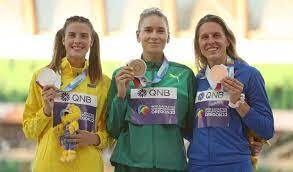
World Athletics President Sebastian Coe said: “We understand how important and inspirational Ukraine’s athletes are to their country at this terrible time and we want to give them every opportunity to compete and excel, despite the great hardship being visited on them and their communities by this horrific war. They have lost so much and the least we can do is help them to keep their athletics dreams alive. I am full of admiration for their fortitude and resilience and I am looking forward to welcoming the Ukrainian team to the National Athletics Centre in Budapest in the coming weeks.”
The general secretary of the Ukrainian Athletic Association Iolanta Khropach offered her “heartfelt thanks” for the “important financial assistance provided during this terrible war in our country”.

“Your unwavering belief in us has made a profound impact on the life of our team and the opportunities to prepare for world-class competitions,” she said. “Thanks to your support, we have been able to provide the best athletes of the Ukrainian team with the necessary conditions on the final stage of the preparation to the World Athletic Championships in Budapest to achieve their sports goals. We are happy to see your willingness to lend a helping hand in difficult times for us during the war.”
World Athletics and the US Olympic and Paralympic Committee funded a similar programme to help the Ukrainian team prepare for the World Athletics Championships Oregon22 last year, where two athletes emerged as medallists. World indoor champion Yaroslava Mahuchikh won the silver medal in the women’s high jump and Andriy Protsenko won bronze in the men’s high jump.
The IOC contributed an additional US$20,000 to support the Ukrainian team at the World Athletics U20 Championships in Cali last year.
Through its Ukraine Fund, World Athletics distributed more than US$220,000 last year to support Ukrainian athletes preparing for the World Championships and the World Athletics U20 Championships in response to the crisis caused by Russia’s invasion of Ukraine, and is distributing a further US$190,000 this year to support Ukrainian athletes preparing for Budapest.
This fund was launched by World Athletics, the Member Meetings of Diamond League Association and the International Athletics Foundation in April 2022 with the purpose of assisting professional athletes, immediate family members and their support personnel affected by Russia’s invasion of their home country.
This is in addition to the Solidarity Fund of US$7.5 million established by the International Olympic Committee (IOC) in February 2022 to support Ukrainian athletes and the Ukrainian Olympic community.
by World Athletics
Login to leave a comment
World Athletics Championships Budapest 23
From August 19-27, 2023, Budapest will host the world's third largest sporting event, the World Athletics Championships. It is the largest sporting event in the history of Hungary, attended by athletes from more than 200 countries, whose news will reach more than one billion people. Athletics is the foundation of all sports. It represents strength, speed, dexterity and endurance, the...
more...Louisiana man Jarrett Leblanc runs 62-minute half-marathon on a treadmill
On Sunday, a Louisiana man took to the treadmill at his local gym in Lafayette, La., attempting to break the Guinness World Record for a treadmill half-marathon. Jarrett Leblanc, a 2020 U.S. Olympic marathon trials qualifier, clocked a time of 62:50 over 21.1 kilometers, breaking the old mark of 63:08 from 2020 and raising money for a non-profit organization that provides camps and programs for children with heart defects.
Leblanc had the speed on the treadmill set at a ridiculous 12.5 mph for nearly the whole challenge. According to local news, Leblanc was six seconds ahead of the record through his first 5K split (14:54) and built a 13-second cushion, hitting 29:46 through 10K. He ended up breaking the previous mark by 18 seconds. The previous treadmill record was held by U.S. 2:12-marathoner John Raneri, who placed fourth at the California International Marathon in 2022.

The 32-year-old told local news that his inspiration behind targeting the record came from a friend who broke this same record while running on a treadmill at altitude. “He broke the record at an altitude, so with me doing it at sea level, I knew I already had an advantage,” he said. “The thought of having a World Record attempt would not only bring the community together but also the entire world to get behind a great cause to help the children.”
Leblanc works full-time as a registered diagnostic cardiac sonographer at the Lafayette General Medical Center, and wanted to use his platform and passion to raise money for Camp Bon Coeur, a camp for children with hearts that have needed mending. Leblanc has so far reached nearly $10,000 of his $25,000 goal.
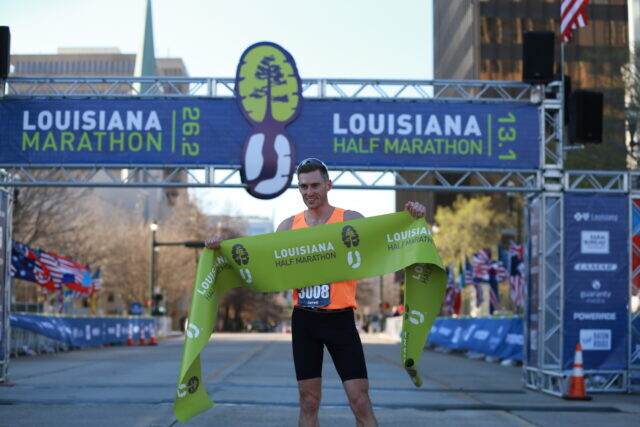
This world-record feat isn’t Leblanc’s first running accomplishment. In 2015, he became the first Louisiana native to run a sub-four-minute mile on Louisiana soil, clocking 3:59.95 in front of his friends and family in Lafayette. His success has also led him to qualify for the 2016 and 2020 U.S. Olympic Marathon Trials.
by Running Magazine
Login to leave a comment
Is depth of talent the issue behind Kenya’s doping scandal?
If you have been following the sport of distance running for the past five years, you’ll be aware of the rise in positive doping cases out of Kenya, whose athletes have dominated the major marathon scene for nearly three decades. Since 2000, the country has won a total of 30 Boston Marathon titles, and the remarkable performances of marathon world record holders Eliud Kipchoge and Brigid Kosgei have put Kenyan athletics at the forefront of distance running. Still, below those few at the top, there are hundreds of aspiring talented distance runners from the East African nation willing to do whatever it takes to make ends meet.
In an in-depth interview with the BBC, Athletics Integrity Unit (AIU) head Brett Clothier explains that Kenya faces a unique problem that most countries don’t face—the sheer abundance of talent that sits below the elite level. “The problem is there is a huge pyramid of top-class athletes,” explains Clothier. “The difference in ability, in that pyramid, between the top and those below is not very much, because of the depth of their talent.”
Clothier adds that in the past, they have been testing the top of that pyramid, i.e., major marathon winners, domestic champions and world championship athletes, but the bottom ones have not been subject to out-of-competition testing. “That pyramid is hundreds, or even thousands, of athletes, so even though we are controlling the ones at the top very well, because of the pressure from the athletes below, who aren’t being tested out of competition, the athletes at the top are taking risks, and there is pressure to stay on top.”
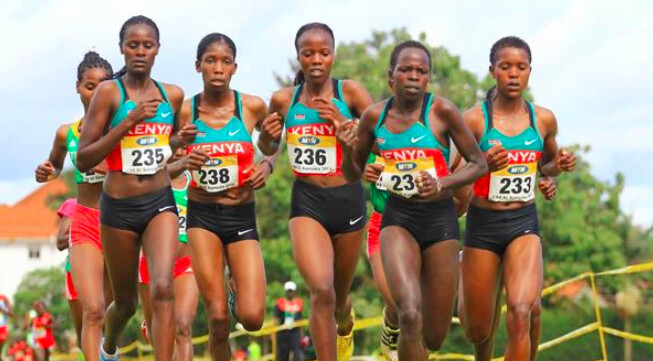
The lure of financial incentives is a major driving force behind doping in Kenya. Road races tend to offer lucrative prize money and appearance fees, attracting a large professional class of runners who potentially see doping as a means to secure a better living. The extensive pyramid of top-class athletes in Kenya creates pressure to succeed, even for those not yet subject to out-of-competition testing. Clothier pointed out that these athletes do not have to go far to find performance-enhancing drugs. “When you have this illicit market, you have the opportunity for people to financially benefit from doping, and people who have the financial opportunity to sell performance-enhancing drugs,” said Clothier. “What we see is a market driven by money and demand.”
There are 165 Kenyan men who have run under 2:07 for the marathon. To put it into perspective, only three U.S. men in history have accomplished the same feat. USADA, the country’s doping agency, is backed annually by major players, including the U.S. Government and the U.S. Olympic and Paralympic Committee (USOPC), to help create a safe sporting environment and regularly test athletes.
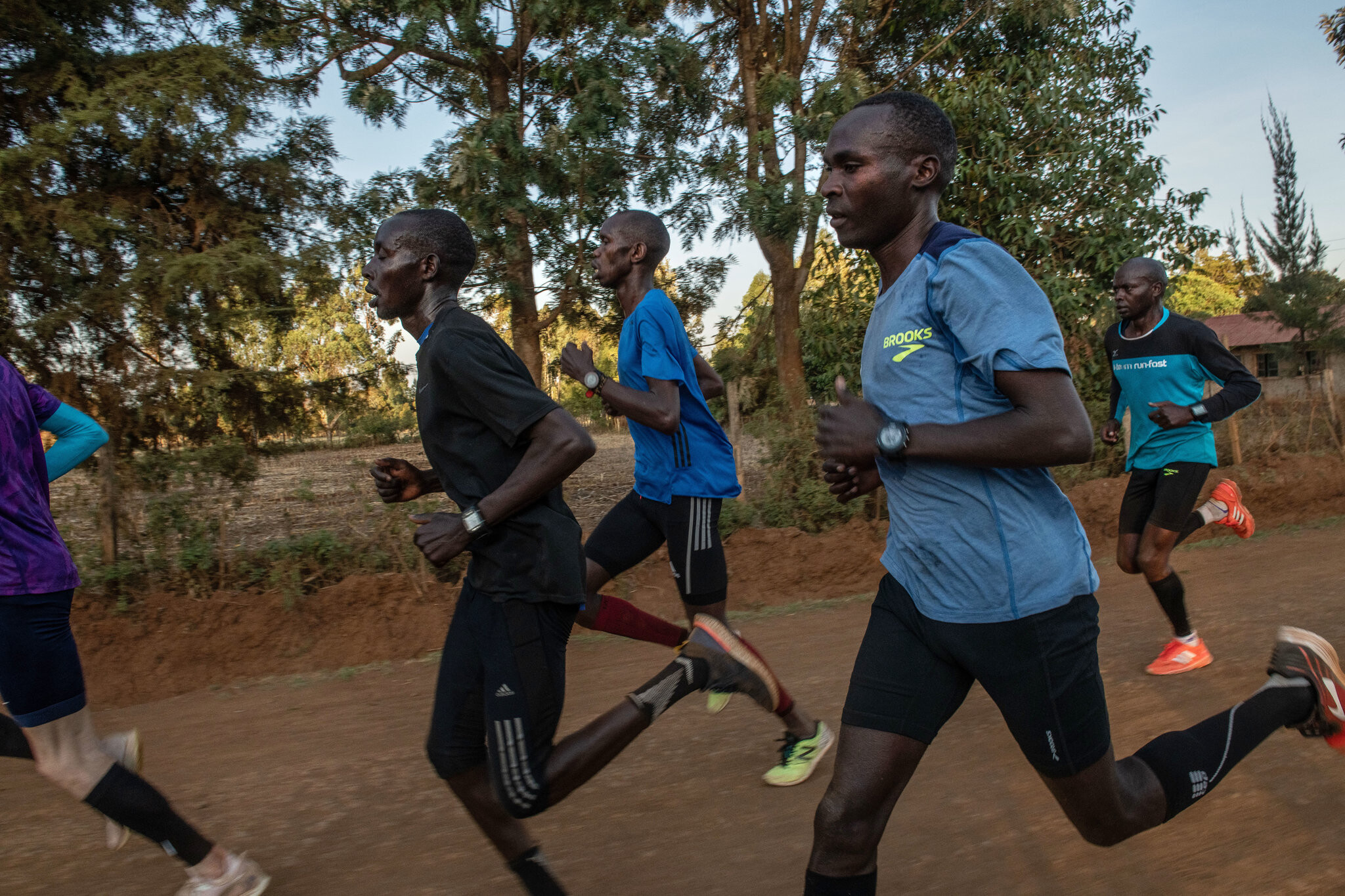
Kenya’s problem is that it doesn’t yet have the funding or resources within its anti-doping agency to completely tackle the larger pool below those at the top, but the AIU and Kenyan government have increased funding for the Anti-Doping Agency of Kenya (ADAK) by five million a year for the next five years. “Funding can be a real game-changer,” said Clothier. “No other national anti-doping agency is at that level of testing in our sport.” In the last year, testing at the Kenyan National Championships has increased nearly 400 percent, which Clothier believes is a serious improvement.
World Athletics President Sebastian Coe fully supports the efforts made by the Kenyan Federation and government in tackling the issue. Although running fans may feel discouraged by seeing the downfall of major marathon winners and world championships medallists who are cheating, Clothier insists that each case represents progress in making athletics a cleaner sport. The country’s fight against doping continues, but the increased testing and commitment to fixing the problem offer hope for real change. With Coe and Clothier backing the efforts to address doping in Kenya, there is reason for optimism that the nation’s anti-doping initiatives will lead to a cleaner and fairer athletic environment, benefiting clean athletes and preserving the integrity of the sport.
by Running Magazine
Login to leave a comment
Six-time world champion confirms attendance for this year’s Antrim Coast Half-Marathon
Six-time world champion and former Olympic silver medalist Genzebe Dibaba has confirmed she will take to the starting line for this year’s Antrim Coast Half-Marathon.
The 32-year-old Ethiopian, who finished second in the 1500m at the 2016 Games in Rio de Janeiro, is the latest elite name to be added to the field for this year’s event, which takes place on August 25-27.
A former World Junior champion, and a two-time junior race winner at the World Cross Country Championships, Dibaba won her first world title in the 1500m at the 2012 World Indoors in Istanbul.

Her second came two years later in the 3000m at the World Indoors in Sopot, Poland, before she added the 1500m title at the 2013 World Championships in Beijing.
She would add another 1500m World Indoor title in 2016 in Portland before claiming gold in both the 1500m and 3000m at the 2018 World Indoors in Birmingham.
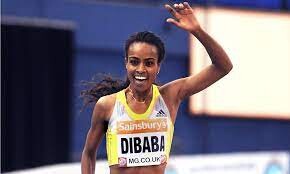
Dibaba, whose best half-marathon time is 1:05.18, will face stern competition from the likes of Amsterdam Marathon winner Degitu Azimeraw and former Great Ethiopian Run winner Zeineba Yimer.
However, Dibaba will enter the event as one of the favorites to cross the line first and race director Ruth McIlroy is thrilled they have added another huge name to the line-up.
"Everyone is delighted we have secured Genzebe, she's been someone we have been working towards getting to the event over the last 12 months,” said McIlroy.
"We feel we have one of the fastest half marathon courses in the world and think she, along with some other stars, will run extremely quick.
"Both the men's and women's elite races have a similar calibre to a global final so we could be looking at something very special in August.”
On the men’s side of the event, Ethiopian great Jemal Yimer is going for his third straight win in the event and is boasting considerable form after winning the Los Angeles Marathon and setting a UK & Ireland All-Comers record with a time of 58.33.
However, Yimer is only one of three runners who have broken the 59-minute mark in the field this year, with Kenya’s Daniel Mateiko having set a time of 58.26 and two-time Tokyo Marathon winner Birhanu Legese also competing.
The local challenge will be spearheaded by Irish Olympian duo Paul Pollock and Kevin Seaward, while Scotland’s Callum Hawkins also runs in a star-studded field.
Meanwhile, world junior champion Ermias Girma has been confirmed for the Condor Executive Street Mile to be run on the Friday night, with the Ethiopian eyeing up the first sub-four-minute mile.
Former Commonwealth Games bronze medalist Winnie Nanyondo is also confirmed for the event as she looks to better her personal best time of four minutes and 18 seconds.
Elsewhere, McIlroy is keen to see the Antrim Coast & Belfast bid given the green light to represent the United Kingdom in its bid to host either the 2025 or 2026 World Road Running Championships.
The bid, which has already been endorsed by Northern Ireland’s five main political parties, is Athletics UK’s preferred choice and will be the last to present to World Athletics president Sebastian Coe.
"With 50,000 runners from over 160 countries, it would be a truly great way to celebrate the 25th anniversary of the Good Friday Agreement and showcase the beauty of our province and sporting excellence to the rest of the world,” added McIlroy.
The bid will be heard on Tuesday, July 4, with the winning regions revealed on August 18 at the World Track & Field Championships in Budapest.
by Adam McKendry
Login to leave a comment
MEA ANTRIM COAST HALF MARATHON
The MEA Antrim Coast Half Marathon 2022 has been approved by World Athletics as an Elite Event. The World Athletics certified course takes in some of the most stunning scenery in Europe, combined with some famous landmarks along the route. With it's flat and fast course, the race is one of the fastest half marathons in the world. Starting...
more...World Road Running Championships in Riga Latvia September 30
Athletics fans will have the opportunity to see the world’s best milers, 5km runners and half-marathoners compete in a single day at the World Athletics Road Running Championships Riga 23 under the revamped schedule announced today.
World Athletics and the Riga Local Organising Committee (LOC) have agreed to introduce a more compact programme, which will see the elite races and mass races held on the same day, October 1, at the championships.

The inaugural World Athletics Road Running Championships was originally envisioned as a two-day event, with the new road mile and 5km road championships to be held on Saturday 30 September and the half marathon races on Sunday 1 October, but in a move to create a more exciting build up for fans, all events have been brought together with the mass races on one day.
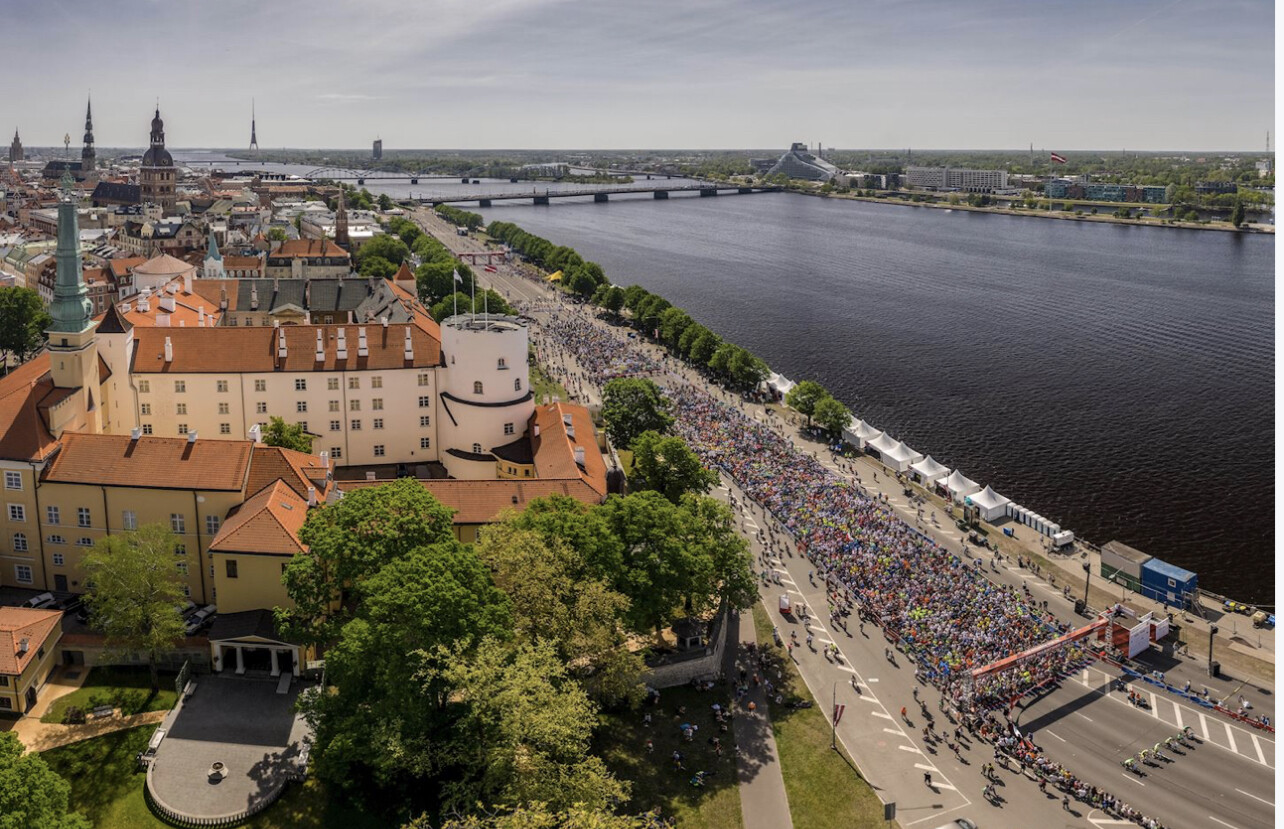
World Athletics President Sebastian Coe said: “As preparations for the World Road Running Championships have evolved, it has become apparent that the event will work better as a single-day event in Riga, both for local organisers and for broadcast. It will also give recreational runners the opportunity to be fully immersed in the day, running before and after our elite runners, and will create the festival atmosphere that we want to see to celebrate road running at every level.”
The new timetable begins on the morning of 1 October with the mass races over 5km and the road mile to be followed by the elite races over the same distances. Then attention will turn to the half marathon distance with the elite races to be followed by the mass race.
This unique global running festival will not only crown the world road mile, 5km and half marathon champions, but is also expected to feature thousands of amateur runners, kids and families from up to 100 countries participating alongside elite runners.
Aigars Nords, Head of the Local Organising Committee, commented: “With three months to go to the inaugural World Athletics Road Running Championships in Riga, Latvia, we have already attracted recreational runners from more than 50 countries all over the world. Saturday 30 September will see thousands of kids and families warm up for the championships during Kids’ Day, while Sunday 1 October will provide a unique opportunity for everyone to earn their mass race medals, not only in the road mile, 5km, and half marathon, but also in the half marathon relay, a new mass race, aimed at recreational runners not yet ready for the challenges of a half marathon.”
Any recreational runner who is ready for a challenge can register for any of the official mass races of the World Championships in Riga and earn a unique medal from the World Athletics Road Running Championships.
WRRC Riga 23 updated schedule
Saturday 30 September 202310:00 – 15:00 Kids’ Day
Sunday 1 October 202310:00 Mass race | 5km11:30 Mass race | Road mile11:50 Women | 5km12:15 Men | 5km13:00 Women | Road mile13:10 Men | Road mile13:30 Women | Half marathon14:15 Men + mass race | Half marathon | Half marathon relay (10.5km + 10.5km)
by World Athletics
Login to leave a comment
Sebastian Coe welcomes perfect stage for the world’s best athletes to shine at WCH Budapest
“With the introduction of the super-fast Mondo track of the National Athletics Center, the stage is set for exhilarating battles and historic performances at the upcoming World Athletics Championships in Budapest,” said World Athletics President Sebastian Coe after running the first lap on the new track, accompanied by local young athletes.
The build up through the one-day meetings of the Wanda Diamond League and the Continental Tour have seen some thrills and spills already.
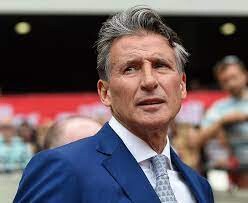
And you don’t need to wait long for finals. They have been set throughout the Championships from the first day, Saturday 19 August. All athletes are looking for a loud crowd to keep them focused on medals and records. But a passionate home crowd is super important to Hungarian athletes and their performances.
On day one, the men’s shot put is the first final in the stadium – defending champion Ryan Crouser (USA) broke the world record recently and will duel with two-time world champion Joe Kovacs (who may be in a USA vest but has family ties much closer to here – his grandfather is from the village of Szentpéterfa in Hungary).
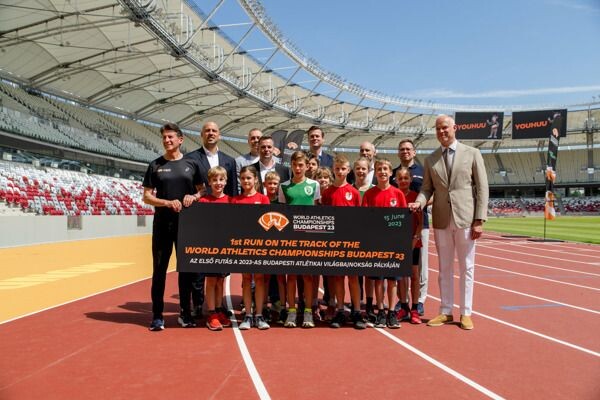
For those who want a weekend of watching the strongest men in athletics, Sunday 20 August features the men’s hammer throw.
“I don’t need to tell the people of Hungary that there is a huge national tradition in this event. Five of Hungary’s 10 Olympic athletics gold medals are for the hammer. And Hungary’s very own Bence Halász, who won the European Athletics silver medal in Munich last year and bronze at the World Championships in Doha in 2019 will be wanting his home crowd to give him a little extra muscle,” added President Coe.
The National Athletics Center in Budapest, a brand new, purpose-built facility, is emerging as the Central European region's athletics stronghold.
“As Budapest and the whole country prepares to welcome athletes from more than 200 countries; for Central European fans this is a unique opportunity to see the world’s best athletes compete in their own region. My message to all of you is don’t miss out. Book your tickets and your place in history now,” – added the World Athletics President
This historic occasion marks the first time in the 40-year history of the World Athletics Championships that a Central European country has been granted the opportunity to host the world's third-largest sporting event.
"We are organizing the biggest sporting event of the year, and the level of interest we have already witnessed is extraordinary. With tens of thousands of international fans and our very own passionate Hungarian supporters, we have already sold over 190,000 tickets.
The World Championships will be broadcast to an estimated one billion viewers worldwide, bringing immeasurable value and pride to Hungary," stated Kristóf Szalay-Bobrovniczky, Minister of Defence and responsible for Sport and the World Athletics Championships Budapest 23 organization.
The Minister encouraged fellow sports enthusiasts to witness the remarkable performances of Hungarian athletes firsthand, cheering them on throughout the thrilling opening weekend and celebrating their potential podium finishes.
On Saturday, the track that witnessed Sebastian Coe's inaugural lap will be open for everyone to experience, ahead of the world's top athletes competing in August. The National Athletics Centre's family opening day on June 17 invites participants to enjoy the track and engage in races, free of charge. Additionally, participants can seize the opportunity to purchase tickets for the World Athletics Championships in Budapest, from August 19 to 27, at an exclusive 50% discount. Secure your tickets now at tickets.wabudapest23.com.
by World Athletics
Login to leave a comment
World Athletics Championships Budapest 23
From August 19-27, 2023, Budapest will host the world's third largest sporting event, the World Athletics Championships. It is the largest sporting event in the history of Hungary, attended by athletes from more than 200 countries, whose news will reach more than one billion people. Athletics is the foundation of all sports. It represents strength, speed, dexterity and endurance, the...
more...At 69, Bobby Kersee is track's 'mad scientist' and as influential as ever
Four years ago, the man associated with speed more than any track and field coach in the world felt himself slowing down, and he did not know why.
Since he was born in Panama in 1954 to a Panamanian mother and U.S. Navy father, Bobby Kersee has always been restless, a self-described wanderer with energy that matched his athletes. But in 2019, feeling unusually sapped, he called his doctor in St. Louis. Blood tests produced results dangerously far beyond the norm. Pancreatitis kept him stuck in a hospital for four weeks.
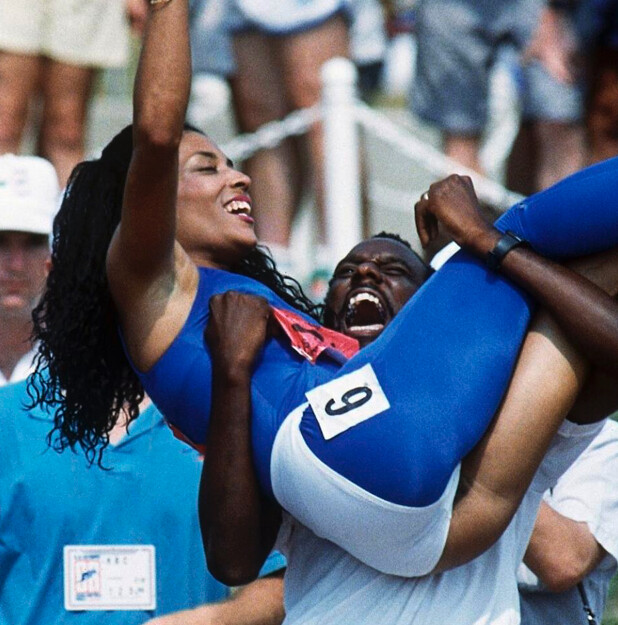
Once discharged, Kersee gave up red meat and alcohol.
What he would not quit was track.
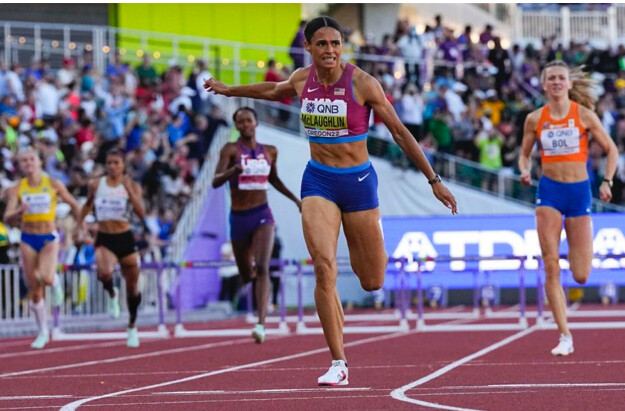
Forty years after coaching his first world champion Kersee, now 69, paced relentlessly for four hours on Thursday while watching his training group at West Los Angeles College.
“Everyone kind of says the same thing: You know, he's different in terms of he's basically a mad scientist,” said Athing Mu, the 20-year-old reigning Olympic and world champion at 800 meters who switched to Kersee’s coaching in September to expand her range. “He knows what he's doing.”
Under cloudy skies at the track high above Culver City, nine athletes in his training group, dubbed Formula Kersee, ran tailored workouts and waited for his every word, from the barked “let’s go!” to commands about mechanics he hollered to athletes mid-run. He lifted hurdles, held court with reporters and stopped only to film block starts with his iPhone.
At an age when he might have become anachronistic, Kersee and his methods still represent sprinting’s gold standard, associates and athletes say. Invigorated by a training group that describes itself as a family and could be dominant into the next decade behind headliners Mu and 23-year-old 400-meter hurdles world champion and world record-holder Sydney McLaughlin-Levrone, Kersee said his career has no discernible finish line.
His coaching, primarily of sprinters and hurdlers, has brought his athletes at least one gold medal in 10 consecutive Summer Olympics, a litany of world championships and world records and, for Kersee, veneration, criticism and influence.
As the first professional meet held at UCLA’s Drake Stadium since 1990, and a key early tentpole in USA Track & Field’s attempted plan to grow its U.S. fanbase before the 2028 L.A. Olympics, this weekend’s Los Angeles Grand Prix is both a callback to a time when track’s popularity soared and, its organizers hope, a harbinger such times can return.
Outside of Sebastian Coe, the 1984 Olympic gold medalist in the 1,500 who has since ascended to lead track’s global governing body, World Athletics, few figures have spanned both eras as prominently as Kersee.
Athletes and associates credit his ability to turn seemingly outlandish goals and times into tangible results to an ability to know what they need. Malachi Davis, who has overseen McLaughlin-Levrone’s training since she turned professional, likened Kersee to a conductor, his whistle and yellow stopwatch replacing a baton to direct “a beautiful dance of confidence and knowledge.”
Many coaches can teach how to run fast and build a race plan, McLaughlin-Levrone said, but Kersee understands “how to break it down piece by piece.”
Robert Forster, a Santa Monica-based physical therapist who has worked with Kersee’s athletes since 1983, said Kersee understands the “work-rest ratio” better than any coach, and does not overtrain where other coaches might double down on mileage. Forster has seen Kersee send an athlete home to rest just from the look on their face, and likes to tell a story about the 2016 Olympics, that Kersee later confirmed. Allyson Felix, the Los Angeles native who under Kersee became the most decorated athlete in track’s history, was nursing a severely sprained ankle and the physical therapist told Kersee it needed to be iced 20 minutes every hour. Forster did not expect, however, that Kersee would stay up the entire next night icing the ankle as Felix slept.
Kersee was an early adopter of technology, upgrading his video cameras at a Westwood electronics store years before he could film block starts of sprinters Jenna Prandini and Morolake Akinosun on his iPhone and zip the footage to an iPad on the infield of the West L.A. track.
Yet the Kersee mystique has endured as much because of his grasp on psychology as biomechanics — feeling for when to push and when to pull back.
Brandon Miller, a top 800-meter hopeful who began working with Kersee in September, has heard other athletes describe Kersee as “crazy.” He disputes that characterization, but noted that Kersee knows to stoke his competitiveness entering a workout’s final repetition with four words: “OK, what you got?”
“I've never met any coach like him,” Mu said. “He's not going to make you do anything that's for his sake. You know, it's gonna be all for you and the benefit of you and your career. And so, I come in here, I knew that he was very intentional, and that's something I needed, especially if I want my career to be long.”
Raised by a grandmother as an “A-train baby” bouncing between the Bronx and Queens, Kersee lost his mother, Daphne, when he was 14, before moving to San Pedro for high school.
He put himself through college at Long Beach State by working at a youth correctional facility in Whittier, where Kersee watched wards from midnight until 8 a.m. After graduating, he had two jobs: Track coach at Cal State Northridge, and counselor at another youth facility in Chino. He took over UCLA’s track and field program in 1980 and that provided enough money to be comfortable. Coaching Greg Foster to his first world championship in 1983, and watching his athletes win six golds and four silvers at the Los Angeles Olympics one year later, provided the final confidence he could sustain coaching as a career.
But he did not leave behind the edge required to do his former jobs.
“I used to work in the prisons, so you can’t walk into the prisons being Mother Teresa,” he said. “And then I did find myself carrying a little bit too much of that to the track. I had to calm myself down and say, 'Wait a minute, you’re not working with a warden.'”
Once, an elderly woman approached Kersee in an airport in Indiana and told him she did not like what she had seen from Kersee or the other famed coach with the B.K. initials: Bobby Knight. He did not belittle his athletes, he said, but he also didn’t leave room for interpretation about who ran the workout. The edge created a mystique that “he's crazy,” Miller said. “But he's not. I feel like everybody has preconceptions of everybody but you won't really know unless you're there and you're with them every day.”
Just as when he built his vaunted World Class Athletic Club in the 1980s, he will only train those he can coach hard and have chemistry. His athletes typically train Monday, Tuesday, Thursday and Friday. He treats Monday Zoom calls with the group as though he is re-interviewing for the job. It’s more convenient than years before, he said, when he recalled gathering before dawn in Europe to address their complaints with him.
“I think we have that understanding that I’m going to listen and respect them,” he said. “But my job is to get the job done for them individually and collectively but you hired me. And if you hired me, let me do my job.”
That job, essentially, can be reduced to one thing: Imparting confidence in his plan. And no one does it like Kersee, said Davis, who sprinted professionally before aiding McLaughlin-Levrone.
“He's a competition coach, so the time it counts, you feel confident,” Davis said. “And your head coach is basically your general and then competition is basically war. And yes, you prepare for war but that final voice, that presence, that action, that essence, that’s Bobby. And he earned that by what he’s accomplished throughout his career.”
Kersee allows that age has softened him. As McLaughlin-Levrone recalled last August, Kersee earned her trust when he saw her overwhelmed with emotion at a 2020 practice and handed her a paper showing a wheel of emotions, saying he had trouble expressing himself, too.
Though accustomed to criticism of himself for years — he joked he would be buried in a track, and "probably as much as people hate me, they’ll put me in lane one, because I’ll be stepped on the most" — he worries about how the inundation of social media affects athletes’ mental health. He has traveled to support the singing ambitions of Formula Kersee sprinter Chloe Abbott. This spring, a smiling Kersee was featured on TikTok when his athletes remade the opening credits of the 1990s sitcom “Family Matters.”
Four decades into his career, he has “a whole lot of knowledge and a whole lot of patience,” he said. “But still, don’t let grandpa get out of the chair.”
Ato Boldon was never coached by Kersee during his sprinting career but has known him for 31 years, since they overlapped at UCLA, and has seen a “golden-hearted” side to the coach. He also described Kersee’s coaching equivalent as either Knight or San Antonio’s Gregg Popovich.
“Everybody under him wins,” said Boldon. “But it’s not necessarily a democracy.
“... As time has gone on, people are like, ‘Wow he’s so this or he’s so that, he’s so abrasive.’ Listen, do you want results, or do you not want results?”
No one argues that Kersee gets results. The most common criticism is how rarely his athletes compete en route to smashing records and claiming gold.
Among athletes, meet directors, agents and track officials who see a need for the sport’s biggest stars and strong competition to draw in casual fans, it has become a question of how to unite what is best for the top athletes’ futures with what is best for the sport’s growth. The tensions surrounding the discussion are not dissimilar from the way “load management” in the NBA has sparked concerns whether it will turn off fans from the regular season.
Because many top athletes train under Kersee, he has become a focal point. There is also his history of pulling athletes late before a meet, sometimes because of injury, and sometimes as a power play, as in 1994, when a dispute over pay led him to withdraw Gail Devers from a high-profile Los Angeles indoor meet.
The topic reignited last week when he withdrew Mu and McLaughlin-Levrone from the Grand Prix, a meet for which he serves as co-promoter. It came soon after telling Track & Field News in February that even he would like to see McLaughlin-Levrone run more often, and told The Times in March that there was no reason meets in the U.S. couldn’t draw thousands if the sport’s leaders banded together to promote strong competitions.
Asked about the balance of what is best for his athletes, or the sport, Kersee this week called it a byproduct of limited sponsorship money within the sport, which incentivizes performances at the biggest meets, which often require qualification earlier in the season. Only a handful of stars make big money and can afford to be choosy. He contrasted it with the NFL and NBA, where athletes can still earn a paycheck while resting.
“I think it’s a little tougher on our athletes to try to balance out wanting to run for the public and run for our sport and also knowing if I run too much or make one little mistake it might cost me making a team,” Kersee said. “That if I go out there and run five or six races I’m going to get to the point of, 'OK why is he running me so much and she gets injured over there, did she really need to run?'”
McLaughlin-Levrone released a statement after being pulled from the Grand Prix field that she “regrettably” would not be competing, citing her coach’s choice. It also said she trusted his judgment, which the world record-holder echoed again Thursday.
“He has a plan and he is going to work it out to perfection,” said Boldon, who will call Saturday’s meet as part of NBC’s broadcast team. “It might not benefit USATF, it might not benefit the fans, but you tell me, what moment stood out most from last summer's world championships?”
It was McLaughlin-Levrone’s stunning 50.68 time to win the 400-meter world title and lower her own world record. The run cut through the noise to make SportsCenter. It also left McLaughlin-Levrone sore for days, she said. Seeing her parents in the stands, for the first time after becoming the first woman to run under 51 seconds, she told them “that hurt, so bad.”
“We've been very calculated in when we run and I think it's yielded us great results,” McLaughlin-Levrone said. “Bobby always uses analogies and he's like, 'You don't take the Ferrari out every day for a drive. You take it out when it needs to come out and it does its things and you put it back in the garage.' So, your body can only be pushed to a certain level so much in your career.
“You only have so many races in your legs and I think we're really strategic about which ones we choose to run. Obviously I know the sport wants to see a little bit more and I think we're trying to figure out how to do that in a safe way that we can still accomplish our goals and give them something to look forward to.”
For McLaughlin-Levrone and Mu, the question is not whether they will make this summer’s world championships in Hungary, or next summer’s Paris Olympics, but which events — possibly plural — they will run.
When Kersee evaluates whether to bring an athlete into his coaching, he also looks for their potential range. He thought he lost his job coaching Felix when he told the 200-meter star during his interview that he would have her run the 400.
Mu and McLaughlin-Levrone’s youth and potential range is one of the sport’s most speculative discussions; news about their upcoming races create instant headlines. The duo are “two of maybe the most talented athletes he’s ever had,” Boldon said.
Their world championships last summer gave McLaughlin-Levrone an automatic berth into the upcoming world 400-hurdle field, and Mu an entry into the 800. With that secured, Kersee has focused on running McLaughlin-Levrone in the open 400 meters, where Marita Koch’s world record of 47.60 has been effectively unapproachable for 38 years — only four women have run even faster than 49 seconds in the past 20 years. She once thought 47.60 was “impossible.” Not anymore.
“It's a very daunting number to look at, I'll tell you that,” McLaughlin-Levrone said. “But at the end of the day, I think if we can take the 400 hurdles to 50.6, I think 47.6 isn't too far off.”
In addition to her 800-meter world title, Mu once owned the collegiate 400-meter record and ran on the U.S. 4x400-meter relay team that won Olympic gold in Tokyo.
“I'm still super young and I have not touched the surface of a lot of things yet,” Mu said. “But I do have visions, which is like really big goals of competing in obviously the Olympics again, and then worlds and hopefully, doubling up.”
Would that mean the 800 and 400, or the 800 and 1,500?
“Hopefully both,” she said. “I mean, I would love to have a chance to do 4/8 and then go ahead and do the 8/15 at some point.”
Maybe this explains why Kersee moved so quickly across the track during practice. There was no sign he had once slowed down.
“I’m glad,” he said, “I have that Energizer Bunny still in me.”
This story originally appeared in Los Angeles Times.
Login to leave a comment
World Athletics renews Ukraine Fund in wake of destruction of track and field facilities
World Athletics, together with the International Athletics Foundation and members of the Diamond League Association, has renewed the Ukraine Fund established last year to support professional athletes affected by the conflict in their home country.
The Fund’s purpose is to ensure that elite Ukrainian athletes can continue to train, qualify for and participate in World Championship events this year, following Russia’s invasion of Ukraine last year.
The fund currently has $190,000US available to assist athletes, their immediate family and key support personnel, and there will be a particular emphasis on purchasing pole vault equipment after the destruction through missile attacks of a key sporting complex in Bakhmut.

This year’s other priorities will be paying for travel and accommodation for elite athletes at training camps over the summer season, covering travel and accommodation for non-quota officials and athletes to participate at the World Athletics Championships Budapest 23 from August 19 to 27 and the World Athletics Road Running Championships Riga 23 from September 30 to October 1.
The Ukrainian Athletic Federation general secretary, Iolanta Khropach, explained that a large sporting complex in Bakhmut - an athletics stadium, an indoor arena, throwing fields, a medical centre and the Sergey Bubka Olympic Sports College - had been destroyed in the battle for Bakhmut in recent months.

"It was the only centre where athletes could conduct training camps at any time of the year," she wrote in a letter to World Athletics.
"This was very important because in cold winters we do not have enough arenas for training.
"It was also a very important training centre for pole vaulters.
Now there is nothing left in Bakhmut.
"We are grateful for all the help, support and understanding that you give us, but we ask you, if it is in your power, to contact the manufacturers of athletics equipment with a request to provide us with athletics equipment as humanitarian aid."
The federation reports that track and field facilities in Kharkiv and Chernihiv have also been badly damaged during the fighting.
World Athletics intends to work with equipment manufacturers to replace equipment that has been damaged or lost and ship it to training camps near Ukraine’s western border.
World Athletics President Sebastian Coe added: "Last year the Ukraine Fund enabled the Ukrainian Federation to send a strong team to the World Athletics Championships Oregon23, where Yaroslava Mahuchikh and Andriy Protsenko won medals, and we want to make sure Ukrainian athletes have the same opportunity to compete and succeed this year.
"They have been put in a terrible situation following the invasion of their country.
"This year’s fund will provide further support to enable them to find stability and security as they prepare to represent their country this year.
"The deliberate destruction of Ukrainian athletics facilities and equipment is also a serious attack on the accessibility of our sport.
"We will do whatever we can to help athletics survive and recover in Ukraine."
The Ukraine Fund will provide financial assistance to the following two groups.
Group One includes athletes who are affiliated to the Ukrainian Athletic Federation and have qualified, or have a credible chance to qualify, to compete at any upcoming World Athletics Championships until Fund closure.
Group Two will cover Ukrainian Federation requests for funding for specific activities, such as the cost of training camps, purchase of athletics equipment, or travel and accommodation of out-of-quota Federation officials and support personnel to World Athletics Championships.
Funding for Group One involves enrolment, subsistence and accommodation, at training camps/temporary housing, welfare support, travel and accommodation to compete at qualifying events for World Championships and travel and accommodation to compete at World Athletics Championships if not otherwise provided.
Funding for Group Two involves enrolment, subsistence and accommodation at training camps to prepare for World Championships, travel and accommodation to accompany Group One athletes at qualifying events for World Championships, athletics equipment to replace lost or damaged equipment (for elite athletes and grassroots), support to general operations of member federations, officials and coaches.
It is expected that up to 100 members of the Ukrainian athletics community may require some financial support this year.
The fund can receive additional contributions from other athletics organisations at any time until its closure which is set for December 31 2023.
Potential beneficiaries can register for consideration by emailing UKRFund@worldathletics.org, while other athletics organisations who would like to contribute to the fund can do so by contacting the same address.
by Mike Rowbottom
Login to leave a comment
Kenya's track sensation Mary Moraa has her eyes firmly focused on a World Championship conquest in Budapest later in the year
Barely in her 20s, Kenya's track sensation Mary Moraa is already hogging the global limelight and stealing headlines at whim.
The 2022 Commonwealth Games 800 metres gold medallist has rocked premier global athletics shows in recent years to deservedly cut herself a niche in the Hall of Fame.
Fondly known as "The Kisii Express" by her dotting fans, Moraa has already claimed her space in the cutthroat world of athletics. Undoubtedly, the decorated track prodigy deserves every ounce of international acclamation.
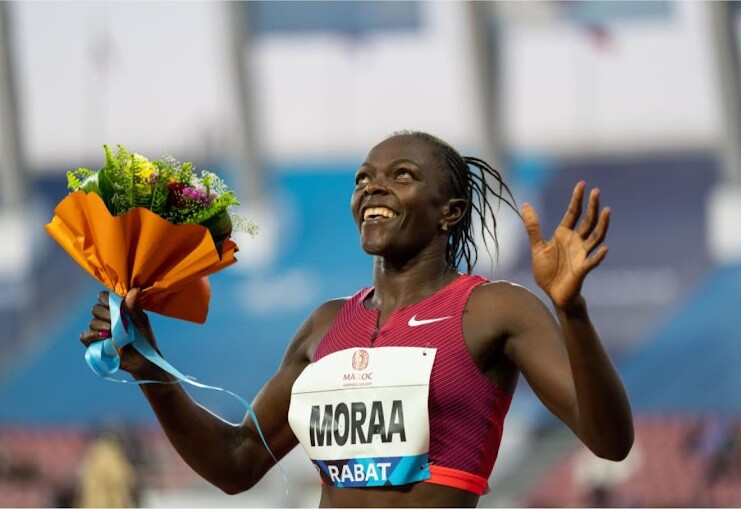
Only recently, she set a new PB in April after storming to the 400m title at the Botswana Golden Grand Prix in an astonishing time of 50.44.
The sublime performance she pulled off in the blistering contest saw her smash her previous national record by 0.24 seconds, subsequently attaining the World Athletics Championships qualifying standards of 51.0 seconds.

"My previous 400m best was 50.67, which I attained at the Diamond League meeting in Brussels in September."
In Botswana, the two-lap specialists obliterated a stellar field that boasted Olympic and world finalist Candice McLeod of Jamaica, USA’s Kyra Jefferson, and the Botswana duo of Naledi Lopang and Thompang Basele.
She breezed to victory ahead of South Africa’s Miranda Coetzee and McLeod who crossed the line in 51.13s and 51.17s respectively.
She rallied from behind to take the lead with 30m to go on her way to the winner's podium at the National Stadium, Gaborone.
Moraa smashed the national record when she won the Kenyan trials for World Championships and Commonwealth Games in 50.84 on June 25, last year at the Moi Stadium, Kasarani.
Moraa, 23, has vowed to step into the big shoes of her role model Hellen Obiri, the middle and long-distance track sensation.
"I've always admired Obiri. I grew up watching her clinch titles and her amazing performances have inspired me a great deal. To an extent, there is a part of her that lives in me. I just want to be exactly like her," Moraa said.
"To date, Obiri still inspires me a great deal and I'm eager to emulate her success on the international stage," she added.
Indeed, Moraa has every reason to admire Obiri. She is the only woman to have won world titles in indoor track, outdoor track, and cross-country races.
Notably, Obiri is a two-time Olympic 5000 metres silver medallist from the 2016 Rio and 2020 Tokyo Olympics, where she also placed fourth over the 10,000 meters.
She is a two-time world champion, having claimed the 5000 m title both in 2017 and 2019 when she set a new championship record.
Obiri also tucked away a bronze in the 1500 metres during the 2013 World Championships and a silver in the 10,000 m in 2022.
She won the 3000 meters race at the 2012 World Indoor Championships, claimed silver in 2014, and placed fourth in 2018. She romped to the 2019 World Cross Country title and triumphed in the 2023 Boston Marathon.
Moraa said she and Obiri share a lot in common. Besides being compatriots, Moraa is elated they hail from the same county.
Coached by seasoned National Police athletics team gaffer Alex Sang, Moraa has her eyes firmly trained on a World Championship conquest in Budapest, Hungary later in the year.
She said she intends to run the 800m race at the World Championships in Budapest, Hungary in August, adding that she is determined to breast the tape in under two minutes.
Born on June 15, 2000, Moraa attended Nyangononi Primary School in Bassi Borabu, Kisii County where she sat for her Kenya Certificate of Primary Education (KCPE) in 2014.
Her potential in athletics came to the fore at Nyangononi when she ran away with several titles in the sprints and middle-distance races.
"I stamped authority in 100m, 200m, 400m, and 800m and even shattered the 400m East Africa school games record in 2014," Moraa proudly recounted.
Upon completing her studies, Moraa proceeded to Ibacho Secondary School in Kisii County but lasted there for only two years before transferring to Mogonga PAG Mixed secondary school where she sat for her Kenya Certificate of Secondary Education (KCSE) in 2018.
"While at Ibachi, I experienced difficulties paying my school fees and it was the principal who would chip in most of the time. Unfortunately, he got transferred from the school and I was left stranded.
"I later joined Mogonga Mixed Secondary School, where I got a lot of support from the principal who also happened to be my coach."
An orphan from a disadvantaged background, Moraa got financial help from her school principal Aron Onchonga who paid all her school fees at Mogonga. Indeed, aside from affording her pertinent financial assistance, Onchong'a played a key role in honing her skills and carving her path to stardom. It was during her years in Mogonga that Moraa started jutting out her talons on the track.
"I am grateful to the school administration and the Principal for the moral and financial support they gave me while there."
During my years in Mogonga, I wanted to remain a role model to the young girls who shied away from sporting activities. I was determined to train and participate in various activities even after completing school," said Moraa.
by Tony Mballa
Login to leave a comment
World Athletics Championships Budapest 23
From August 19-27, 2023, Budapest will host the world's third largest sporting event, the World Athletics Championships. It is the largest sporting event in the history of Hungary, attended by athletes from more than 200 countries, whose news will reach more than one billion people. Athletics is the foundation of all sports. It represents strength, speed, dexterity and endurance, the...
more...Botswana’s Nijel Amos 800m star and Olympic medalist, banned three years for doping
Botswana’s Nijel Amos, the joint-third-fastest 800m runner in history, was banned three years for doping.
The case stemmed to last June, when he tested positive for GW1516, an experimental drug which can modify the body’s metabolism but has been considered too dangerous for human use.
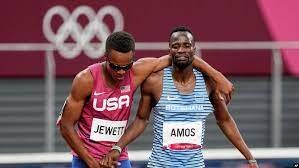
The ban was backdated to last July, when Amos was provisionally suspended pending an investigation. His ban now runs to 2025, which means the 29-year-old Amos will miss the 2024 Paris Olympics.
Amos received a one-year reduction of what would otherwise be a four-year ban because he made an early admission and acceptance of the suspension.
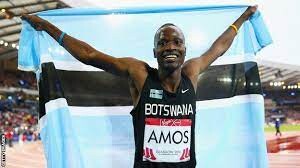
That came after he requested a supplement be tested for the presence of the drug. The test did not detect any GW1516 in opened and sealed bottles.
GW1516 was developed to help build endurance and burn fat but was found to cause cancer during tests on rodents. Anti-doping organizations have warned athletes not to use it on safety grounds.
The drug has previously been found in samples given by professional cyclists and by Olympic race walker Elena Lashmanova. The Russian served a two-year ban and was later stripped of the 20km gold medal she won at the 2012 Olympics for another doping offense.
In 2012, Amos, then 18, took silver in the 800m at the London Games in what many called the greatest Olympic race in history. Kenyan David Rudisha lowered his world record. Amos matched Seb Coe as the third-fastest man in history in the event (1:41.73). Every runner’s time was the fastest ever for that finishing placement.
Amos has not won an Olympic or world championships medal since. In July 2019, he ran 1:41.89, the world’s best time since that London Olympic final.
At the Tokyo Olympics, Amos and American Isaiah Jewett got tangled in the final lap of their semifinal. In an act of good sportsmanship, the runners helped each other up and later jogged across the finish line together in the last two places. Amos was granted a place in the final and finished eighth.
by OlympicTalk
Login to leave a comment
Russian doping ban lifted, but Ukraine war keeps athletes out
Russia and its athletes will remain banned from competition due to the ongoing invasion of Ukraine.
On Thursday afternoon, the World Athletics Council announced the reinstatement of the Russian Athletics Federation (RusAF) following a seven-year doping suspension. Despite their reinstatement into the sport, however, Russia will remain banned from competition due to its ongoing invasion of Ukraine.
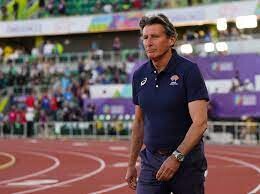
“Athletes and officials for Russia and Belarus are still excluded for the foreseeable future due to the invasion of Ukraine,” said World Athletics president Seb Coe.
In the case that Russia decides to leave Ukraine, Coe says his instinct is that the ban would be reversed, allowing Russian and Belarusian athletes to participate in all World Athletics events.
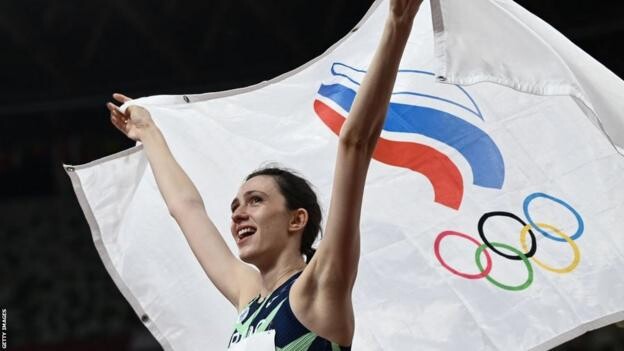
According to Rune Andersen, who served as the head of the World Athletics Task Force around reinstating the RusAF, told the WA Council that all required conditions have ultimately been met. RusAF has also accepted the ruling stating that there must be no backsliding from the new position.
“I believe RusAF still has a lot of progress to be made,” said Coe. RusAF has to follow 35 “special conditions” intended to ensure that anti-doping reforms remain in place, and continue to operate effectively. These special conditions will continue to be reviewed over the next three years.
The RusAF has been suspended from competing in World Athletics events since 2015 due to multiple doping violations. They are currently not eligible to host World Athletics events or send teams to international championships due to the World Athletics sanctions for the invasion of Ukraine.
“The integrity of our major international competitions has already been substantially damaged by the actions of the Russian and Belarusian governments through the hardship inflicted on Ukrainian athletes and the destruction of Ukraine’s sports systems,” said Coe in a press release. “Russian and Belarusian athletes, many of whom have military affiliations, should not be beneficiaries of these actions.”
The World Athletics stance on Russia continues to contrast with that of the International Olympic Committee (IOC), which is working to allow Russian and Belarusian competitors to participate in international competition and the Paris 2024 Games, as neutral athletes.
The reinstatement of RusAF was one of four noteworthy announcements to come from the 2023 World Athletics Council meetings.
by Running Magazine
Login to leave a comment
World Athletics bans transgender athletes from female category
On March 23, World Athletics announced a complete ban on transgender athletes competing in the female category. No athletes who have been through male puberty will be allowed to participate in women’s events from March 31st onward.
“Transgender athletes should not be competing in the female category,” said World Athletics president Seb Coe. “Science may be insufficient, but the council agrees it must be guided by our overarching principle to protect all biological females in our sport.”
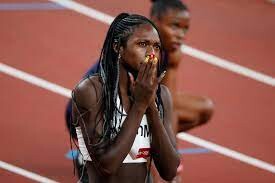
“This has not been an easy decision,” said Coe. “We entered a consultation months ago, we wanted to hear from all stakeholders, and the judgment we took was in the best interest of our sport.”
World Athletics will soon establish a transgender working group to bring data and science to the council meetings. The working group will give the World Athletics Council a better understanding of transgender athletes in our sport. Coe said he intended to appoint a trans female athlete as chair of this group.
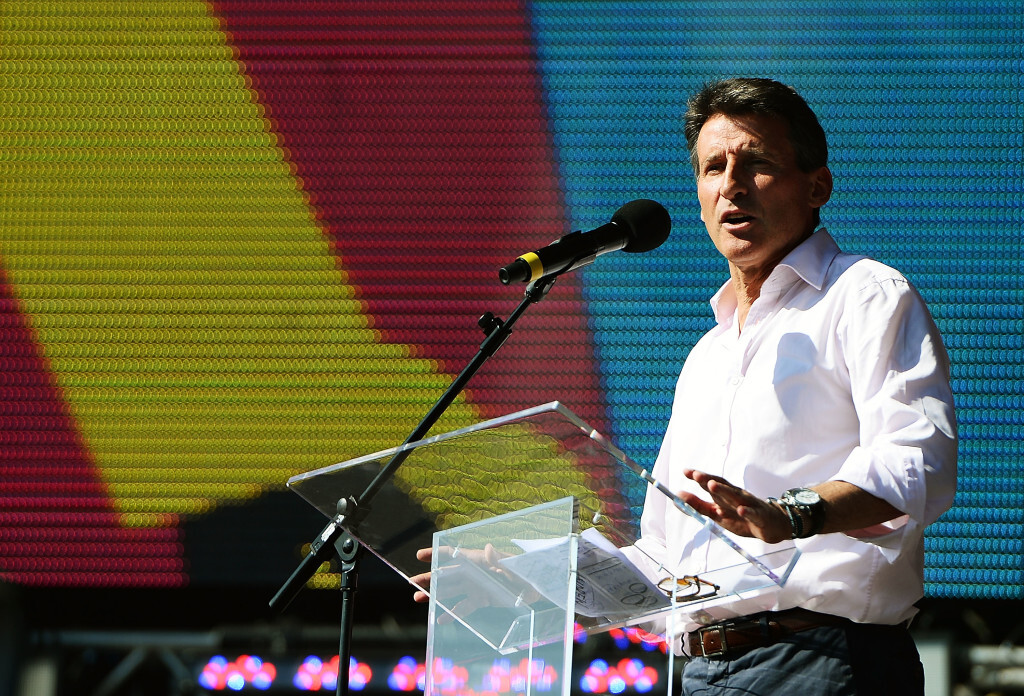
The previous World Athletics transgender policy stated to be eligible for female competition, athletes had to keep their testosterone levels below 5 nmol/L for a 12-month period. The new ruling will bar all transgender athletes from the female category.
“It was impossible to maintain the transgender regulations for what they were,” said Coe. “A full ban on transgender athletes in the women’s category is the right approach.”
The press conference also dealt with athletes in the DSD category. More information to come.
by Marley Dickinson
Login to leave a comment
80-year-old runs wild time at USATF 100 Mile Championships
The USATF 100-mile road national championships were held in Henderson, Nev. on Friday and Saturday at the Jackpot Ultra Running Festival, and while the elite men and women produced impressive results, the performance of the weekend has to go to David Blaylock, an 80-year-old athlete from Salt Lake City, Utah. Blaylock finished the race in a fantastic time of 29 hours, 47 minutes and 29 seconds, and he was followed by three other men in the 80-plus age division, each of whom finished the race.
80-plus division
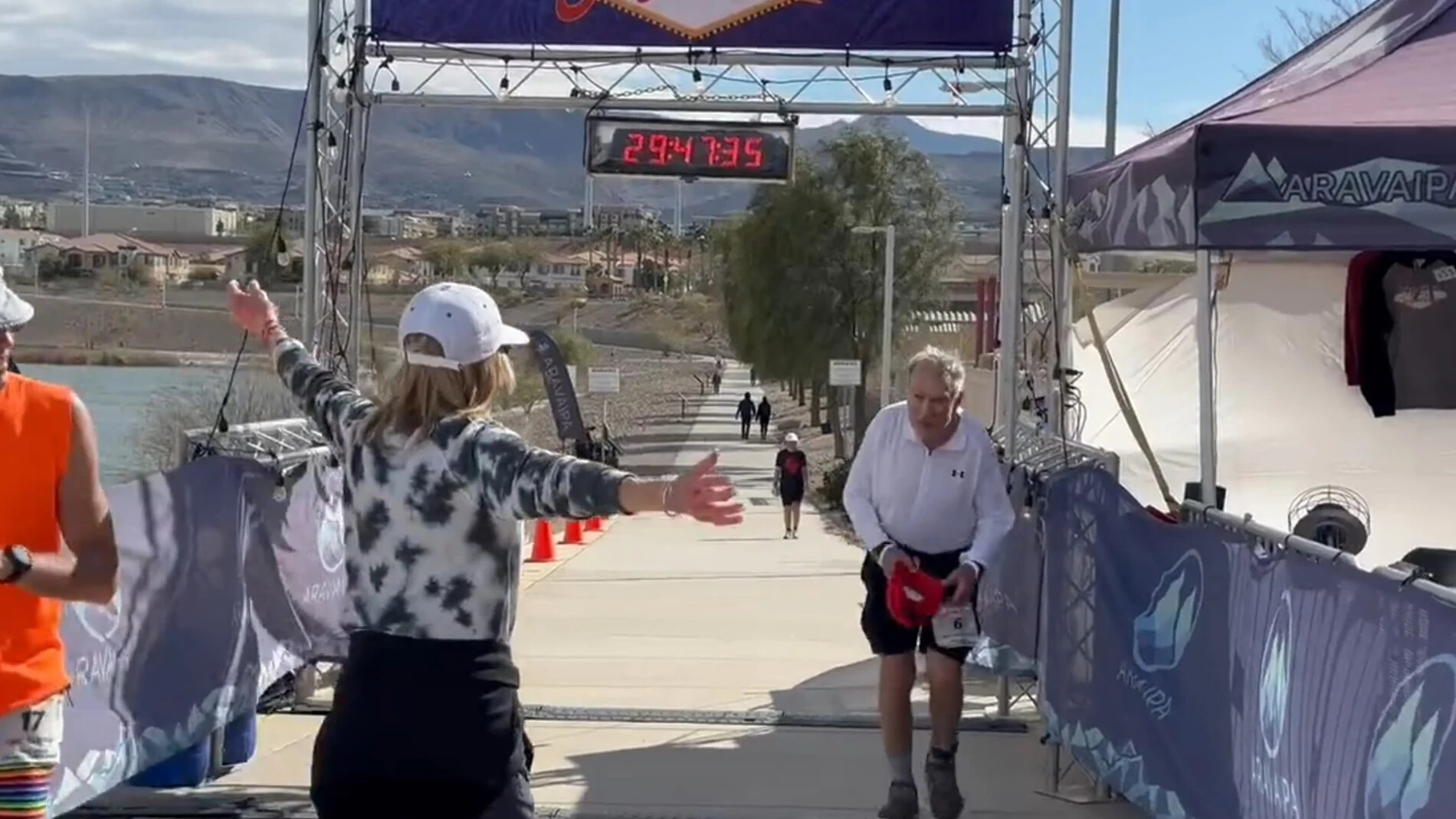
Before this year’s race, Blaylock had already raced the Jackpot 100 several times, and he had managed to break 30 hours on multiple occasions. In 2022, the final year of his 70s, he ran 31:56:28 at the event. While this was still a great result, it wouldn’t have been a surprise if Blaylock, now in the M80 division, didn’t break 30 hours again over 100 miles, but he did just that on Saturday, crossing the finish line with 12 and a half minutes to spare.
The fact that Blaylock ran 100 miles at the age of 80 is impressive enough, but his sub-30-hour result makes the achievement all the more amazing. His average pace was just over 11 minutes per kilometre for the 160K race. Although it’s unclear where Blaylock’s result ranks all-time among Americans, based on the USATF record books, his 29:47 sits near the top. The current M80 American record over 100 miles belongs to Maurice Robinson, who posted a time of 29:03:21 at a race in Kansas in March 2022.

While Blaylock ultimately won the M80 race by more than 20 minutes, his victory was far from a lock. He had to chase 83-year-old Edward Rousseau for most of the run, and for a long stretch, he was an hour back of first place. It wasn’t until the 95th mile that Blaylock made the pass on Rousseau, and from that point on, his lead only grew.
Rousseau ended up crossing the line in a fantastic time of 30:09:08, and 80-year-olds Ian Maddieson and Denis Trafecanty finished third and fourth, respectively, in times of 37:15:39 and 37:59:42.
The elite races
San Francisco‘s Jonah Backstrom, 49, took home the men’s national 100-mile title with a winning time of 14:11:03. He won the race by more than 30 minutes over second-place finisher Zach Merrin, who finished in 14:48:59. Third place went to Pete Kostelnick, who stopped the clock almost an hour later in 15:47:24. In the women’s race, Nevada local Sierra DeGroff won in 15:59:56, just eking out a sub-16-hour result. She finished close to an hour ahead of second-place Lisa Cabiles, who completed the race in 16:42:54. Heather Huggins finished third in a time of 17:09:29.
by Ben Snider-McGrath
Login to leave a comment
Lattelecom Riga Marathon
If you have never been to Riga then, running a marathon or half-marathon could be a good reason to visit one of the most beautiful cities on the Baltic Sea coast. Marathon running has a long history in Riga City and after 27 years it has grown to welcome 33,000 runners from 70 countries offering five race courses and...
more...

